When Does Social Security Go Back in the Black
November 2021
Access Your New Social Security Statement Online

We have exciting news to share. We've redesigned the Social Security Statement (Statement) to make it easier to find the information you and your clients need.
Who gets a Statement?
A Statement is available to any adult worker who does not receive benefits. The Statement gives estimates of future Social Security benefits that your client and family may receive each month, along with a basic overview of the Social Security program. It also provides a record of your client's earnings history and other valuable information. A person's future benefits are based on their earnings record, so it's important they tell us if they see an error, so they can get it corrected and ensure they get all the benefits they earned. The Statement explains how to report an error.
What's New in the Statement?
The redesigned Statement is streamlined and written in plain language to make it easy for you and your clients to read, use, and understand. We've divided the information into sections, like different types of benefits, so people can easily find what they need. The new Statement provides a bar chart with personalized retirement benefit estimates for up to nine different ages, depending on when a person may want benefits to start. This key information can help your client make educated decisions about their financial future.
Fact sheets tailored to your clients' age group and earnings situation accompany the online Statement. The fact sheets can help your client better understand Social Security programs, benefits, and how they fit their situation. For example, for younger workers, we provide more information about how to save for the future; for older workers, we explain how benefits may be taxed and how to avoid a Medicare penalty. We include links in the fact sheets for easier reference and additional information.
Our Social Security Statement web page at www.ssa.gov/myaccount/statement has samples of the Statement, as well as copies of the new fact sheets (in English and Spanish). Please share these resources with your clients, friends, and family.
Get Your Personalized Statement Online Today
The best way you and your clients can access the new Statement is by using a personal my Social Security account. If you or your client don't have an account, be sure to create one today. An account also gives access to other online services, such as requesting a replacement Social Security card and getting a letter proving your client does not receive Social Security benefits.
Get started by signing in to or creating your personal my Social Security account today at www.ssa.gov/myaccount!
At Home or On the Go? Social Security is Online

We are here to help your clients when they retire, if they become disabled, or if someone they depend on dies. Your clients can access their information, benefits, and important services online from just about anywhere with their personal my Social Security account. With a my Social Security account, your clients can:
- View, download, and print their Statement.
- Compare future benefit estimates for different dates or ages when they may want to begin receiving benefits.
- Check the status of their benefits application or appeal.
- Review their earnings history.
- Request a replacement Social Security card (in most states).
If your clients already receive benefits, they can:
- Get a benefit verification or proof of income letter.
- Set up or change their direct deposit.
- Change their address.
- Request a replacement Medicare card.
- Get a Social Security 1099 form (SSA-1099).
- Request a replacement Social Security card (in most states).
It's easy to sign up for a my Social Security account. Please let your clients know that they can create their own my Social Security account today at at www.ssa.gov/myaccount.
Social Security Can Help You Get Back to Work

If your clients rely on Supplemental Security Income (SSI) payments or Social Security Disability Insurance (SSDI) benefits and want to start or return to work, we can help.
Ticket to Work (Ticket) is a program that supports career development for SSDI beneficiaries and SSI recipients who want to work and progress toward financial independence. The Ticket program is free, voluntary, and run by Social Security. Learn more about the Ticket program at www.ssa.gov/work or call the Ticket Help Line at 1-866-968-7842 or 1-866-833-2967 (TTY) Monday through Friday, 8 a.m. to 8 p.m. ET.
In addition to the Ticket program, the Plan for Achieving Self-Support (PASS) program also helps people with disabilities return to work. A personalized PASS allows your clients to set aside resources and other income besides their SSI for a specified period. With a PASS your clients can pursue a work goal that will reduce or eliminate their need for SSI or SSDI benefits.
How does a PASS help someone return to work?
- PASS lets a person with a disability set aside money and items they own to pay for items or services needed to achieve a specific work goal.
- The objective of the PASS is to help people with disabilities find employment that reduces or eliminates the need for SSI or SSDI benefits.
Your clients can read all about the PASS program at www.ssa.gov/pubs/EN-05-11017.pdf and in The Red Book - A Guide to Work Incentives at www.ssa.gov/redbook.
The PASS must be in writing and we must approve the plan. Your clients may start a PASS by contacting their local PASS Cadre or local Social Security office for an application (Form SSA-545-BK). Your clients can also get the form at www.ssa.gov/forms/ssa-545.html. Ticket service providers, vocational counselors, or a representative or relative can help your clients write a PASS.
A job isn't just a source of income — it can be a vehicle to independence. Our Ticket and PASS programs can help your clients achieve their goals.
Veterans and Active Duty Military Members: Social Security Has Your Back!

Every year on Veterans Day, we honor the people who risk their lives to protect our country. Our disability program is part of our obligation to wounded warriors and their families. Social Security is an important resource for military members who return home with injuries. Please tell wounded veterans you know about our Wounded Warriors web page, www.ssa.gov/woundedwarriors.
Our Wounded Warriors web page answers many questions commonly asked about Social Security and shares useful information about disability benefits. Your clients can learn how Social Security Disability Insurance (SSDI) benefits are different from benefits available through the Department of Veterans Affairs (VA) and require a separate application. We partnered with the VA and created a new fact sheet that explains the differences between SSDI and VA disability benefits at www.ssa.gov/pubs/EN-64-125.pdf. We also explain how we expedite the processing of their Social Security disability claims if they become disabled while on active military service on or after October 1, 2001, regardless of where the disability occurs.
Active duty military service members who continue to receive pay while in a hospital or on medical leave should consider applying for disability benefits if they're unable to work due to a disabling condition. Active duty status and receipt of military pay doesn't necessarily prevent payment of Social Security disability benefits.
We honor veterans and active duty members of the military every day by giving them the respect they deserve. Please let these heroes know they can count on Social Security when they need us most. They've earned these benefits! Our web pages are easy to share on social media and by email. Please pass this information along to someone who may need it.
Center for Plain Language Cites Social Security as a "Perfect Example"

The Center for Plain Language released the 2021 Federal Plain Language Report Card on October 13, 2021.
Once again, Social Security earned an "A+" for "Organizational Compliance." For "Writing Quality," we improved on last year's "B," earning a "B+" for 2021. The results are based on the Center's review of the Social Security's Coronavirus and Freedom of Information Act web pages.
Social Security was cited in the Center's 2021 Report Card announcement as "a perfect example" of an agency that improved early and maintained high grades. "Back in 2012, when the Center first launched its Federal Report Card, SSA earned a C for compliance. Since then, it has earned straight A's in compliance and either A's or high B's in writing."
You can view the full report card at this link: 2021 Federal Plain Language Report Card.
October 2021
Guard Your Card – Protect What's Important to You and Your Clients

Please tell your clients not to carry their Social Security card with them every day. The best way to "Guard Your Card" is to keep it in a safe place and share it only when required, which is rare. In fact, in most cases, just knowing the Social Security number should be enough. In 49 states and the District of Columbia, a Social Security card is not required to request a Real ID; only Pennsylvania requires it.
Your clients should be careful about sharing their number when asked for it. They should always ask why their number is needed, how it will be used, and what will happen if they refuse. Also, they shouldn't carry documents that display their number.
If your client needs a replacement Social Security card, we make it easy. They may be able to use a personal my Social Security account to request a replacement. If they live in one of 45 participating states or the District of Columbia, and are requesting a replacement card with no changes, like a name change, they can use our free online service at www.ssa.gov/myaccount/replacement-card.html.
Visit www.ssa.gov/ssnumber to learn more about your Social Security card. Read and share our factsheet, How You Can Help Us Protect Your Social Security Number and Keep Your Information Safe with your clients, friends, and family at www.ssa.gov/pubs/EN-05-10220.pdf.
Social Security Forms Now Available for Online Submission

Social Security now offers convenient and secure online options for completing and submitting forms. Our newest online forms include:
- SSA 820– Work Activity Report (Self-Employed Person) – Provide work activity information for self-employed individuals applying for or receiving disability benefits.
- SSA 821 – Work Activity Report – Provide work activity information for individuals applying for or receiving disability benefits.
- SSA HA-85 – Request to Withdraw a Hearing Request – Submit a request to withdraw an existing hearing request.
- SSA-552 – Dedicated Account Use of Funds Statement – Confirm your understanding of how to use and not use dedicated account funds.
- SSA HA-86 – Request to Withdraw an Appeals Council Request for Review – Submit a request to withdraw an Appeals Council request for review.
- SSA HA-4608 – Waiver of Your Right to Personal Appearance Before an Administrative Law Judge – Notify us that you do not want to appear at a hearing before an Administrative Law Judge (ALJ), and that you want the ALJ to decide your case on the evidence in the written record.
Also available online is the SSA-455 – Disability Update Report, which people use to give us information we need to determine if a beneficiary is still disabled.
Online form completion with electronic signature expedites your clients' requests without the need to visit a local office or meet in person. During these challenging times, we are more committed than ever to expand our secure online service offerings to meet the changing needs of our customers.
Please share this information with your clients and encourage them to learn more about this convenient online service option.
Sign Up for Medicare Part B Online

Your clients can sign up for Medicare Part B online! If they're enrolled in Medicare Part A and want to enroll in Part B during the Special Enrollment Period, they can visit our Medicare webpage at www.ssa.gov/benefits/medicare/.
From there, they can enroll in Part B by completing these forms: CMS-40B (Application for Enrollment in Medicare – Part B [Medical Insurance]) and CMS-L564 (Request for Employment Information).
They can also fax or mail the CMS-40B and CMS-L564 to their local Social Security office to enroll. They can find the fax number and address for their local office at www.ssa.gov/locator. Your clients can contact Social Security at 1-800-772-1213 (TTY 1-800-325-0778) if they have any questions.
Note When completing the forms:
- Your clients should state, "I want Part B coverage to begin (MM/YY)" in the remarks section of the CMS-40B form or online application.
- If their employer is unable to complete Section B, they should complete that portion as best they can on behalf of their employer without that employer's signature.
- They can submit one of the following types of secondary evidence by uploading it from a saved document on their computer:
- Income tax returns that show health insurance premiums paid.
- W-2s reflecting pre-tax medical contributions.
- Pay stubs that reflect health insurance premium deductions.
- Health insurance cards with a policy effective date.
- Explanations of benefits paid by the Group Health Plan or Large Group Health Plan.
- Statements or receipts that reflect payment of health insurance premiums.
Please let your clients know about this online, mail, or fax option.
Social Security Supports Small Businesses
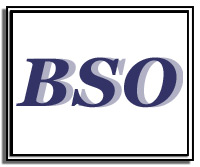
The COVID-19 pandemic has been testing small businesses. Running a small business can be a 24-7 endeavor. Managing employees, inventory, scheduling, services, and marketing can be challenging even in normal times.
If you have clients who run a small business, or work for one, our online suite of services can help make their lives easier. Our business services allow them to file W-2/W-2Cs online and verify employees' names and Social Security numbers against our records.
Our online services at www.ssa.gov/employer will save your clients valuable time when they need information on filing electronic W-2s and verifying Social Security numbers.
Small business owners can also take advantage of our Business Services Online at www.ssa.gov/bso/bsowelcome.htm. Your clients must register to use this free service, which also offers fast and secure online W-2 filing options to Certified Public Accountants, enrolled agents, and individuals who process W-2s and W-2Cs.
For more information about electronic wage reporting, encourage your clients to read our publication at www.ssa.gov/pubs/EN-05-10034.pdf.
Need a Standardized Benefit Verification Letter? Get It Online

If your clients need a Benefit Verification letter, sometimes called a "proof of income letter," we have good news! Their Benefit Verification letter is available online when they need proof of Social Security benefits, Supplemental Security Income, or Medicare.
In addition to a client's name, date of birth, and the benefits received, their Benefit Verification letter includes other identifiers to prevent misuse and fraud. This is an added benefit for clients as proof of income for loans, housing assistance, mortgage, and other verification purposes.
The same letter is also available if your clients need proof that they don't receive benefits, or proof that benefits are pending. If your clients have an individual representative payee, they can use the my Social Security Representative Payee portal to access the Benefit Verification letter online for their beneficiaries.
Your clients can get their Benefit Verification letter anytime using their personal my Social Security account. Your clients can use any device to quickly and efficiently access their Benefit Verification letter. Encourage your clients to request it today at www.ssa.gov/myaccount.
September 2021
2021 Trustees Report

On August 31, the Social Security Board of Trustees released its annual report on the long-term financial status of the Old-Age and Survivors Insurance (OASI) and Disability Insurance (DI) Trust Funds.
The Trustees project the combined trust funds will become depleted in 2034, with 78% of benefits payable at that time. The Trustees estimate the DI Trust Fund will become depleted in 2057, with 91% of benefits still payable.
In the 2021 Report to Congress, the Trustees also announced:
- The asset reserves of the combined OASI and DI Trust Funds increased by $11 billion in 2020, to a total of $2.908 trillion.
- The projected actuarial deficit over the 75-year long-range period is 3.54% of taxable payroll — higher than the 3.21% projected in last year's report.
The full 2021 Trustees Report is available at www.ssa.gov/OACT/TR/2021/.
Pandemic Relief and Supplemental Security Income
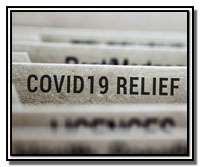
We recently changed our rules about what types of financial assistance can affect an individual's Supplemental Security Income (SSI) eligibility or their monthly SSI payment amount. Usually, we consider any help an individual receives in cash to meet their need for food or shelter as countable income. Generally, the more countable income someone has, the less their SSI payments will be. If their countable income is over the allowable limit, they are ineligible to receive SSI payments.
However, due to the COVID-19 pandemic, we no longer count most types of pandemic-related financial assistance against eligibility or payment amount. This includes Economic Impact Payments (EIP), State Stimulus Payments, and Unemployment Assistance. A full list of COVID-19 pandemic-related financial assistance that does not count against SSI eligibility or monthly payment amount is available at www.ssa.gov/coronavirus.
If we denied your client's SSI application– or we reduced their payment amount because they were receiving assistance – let them know we're reviewing SSI claims and records going back to the beginning of the COVID-19 pandemic. We expect our review will take several months to complete. In most cases, if an individual's payment amount was affected – and we don't need any additional information – we'll automatically restore their SSI payments.
If we need to take a new SSI application or need any additional information, we will mail a letter to your client explaining what we need. Your clients don't need to call our offices unless they have moved and need to update their address. They can find the phone number to their local office by accessing our office locator.
Please share this information with your clients.
Save the Date! Upcoming National Disability Forum on September 15, 2021

We will host the next virtual National Disability Forum (NDF) on Wednesday, September 15. The forum is titled "Equity in SSA Programs: Hidden Barriers." There will be a morning session from 10:00 a.m. – 12:00 p.m. ET and an afternoon session from 1:00 p.m. – 3:00 p.m. ET.
For more information on the upcoming NDF on Wednesday, September 15, encourage your clients to visit our What's New page at www.ssa.gov/thirdparty/groups/whatsnew.html . You and your clients can email questions to OEA.Net.Post@ssa.gov.
Celebrating a Milestone for my Social Security

We're excited to celebrate a significant milestone for my Social Security: 60 million registrations! We thank those who created personal my Social Security accounts – and encourage others to do the same. We're constantly improving our online resources to make doing business with us easier and faster.
With a personal my Social Security account, those receiving benefits can:
- Change their address and direct deposit information.
- Get proof of their benefits.
- Request replacement documents, like a Medicare card.
If your clients aren't currently getting benefits, they can use a my Social Security account to:
- Check their earnings record.
- Get estimates of their future benefits.
- View their Social Security Statement.
In many states, your clients can request a replacement Social Security card online. Encourage your clients to see what they can do with a personal my Social Security account. They can open one today at www.ssa.gov/myaccount.
10 Ways to Protect Your Personal Information

Scammers don't go on vacation—so it's necessary for your clients to stay vigilant all year round. Identity theft affects millions of people each year causing serious financial and identity-related issues.
Help your clients protect themselves by securing their personal information, understanding the threat of identity theft, and exercising caution. We have a list of 10 things your clients can start doing now to protect themselves.
Please be sure to share our list your clients today.
Apply for Your Social Security Card and Green Card at the Same Time

We have great news for non U.S. citizens! Now they can apply for a Social Security number or replacement Social Security card at the same time they file for their lawful permanent resident status or a green card. This new service eliminates the need to visit one of our offices, while saving your clients time and effort.
We recently partnered with the Department of Homeland Security U.S. Citizenship and Immigration Services (USCIS) to expand our Enumeration Beyond Entry (EBE) program. Here's how it works:
- When your clients complete their Application to Register Permanent Residence or Adjust Status (Form I-485), USCIS will send us information from their approved application to request an original or replacement Social Security card. Your clients can find form I-485 at www.uscis.gov/i-485.
- Once we receive and approve their Social Security card request, we will mail their Social Security card or replacement card to the address the client listed on their I-485 application.
- Their Social Security card will arrive within seven business days after they receive their Permanent Resident Card from USCIS.
Please share this information with your clients.
New Online Payment Option for Social Security Overpayments

We are expanding our online services to provide secure and convenient online features to meet your clients' needs. Your clients who have an overpayment may be eligible to make a full or partial electronic payment using Pay.gov or using their bank or financial institution's online bill pay option.
Pay.gov is a secure online service provided by the Department of the Treasury. Our billing notices now include Pay.gov information. For the moment, this service is available only to individuals who are not currently receiving Social Security benefits or Supplemental Security Income payments, but need to pay back an overpayment.
Your clients can also choose to use their bank's online bill pay. Under this option, your clients can repay an overpayment debt and have it electronically applied to their balance the next day.
Please be sure tell your clients about our new and secure online bill pay options.
August 2021
Five Ways to Apply for Social Security Benefits Online

We continue to make it easier for your clients to access our programs and benefits. Our website offers the most convenient way to apply for benefits.
Your clients can apply online for:
- Retirement or Spouse's Benefits – Your client must be at least 61 years and 9 months in age and want benefits to start in no more than four months. Apply at www.ssa.gov/retireonline.
- Disability Benefits – Your clients can use our online application, available at www.ssa.gov/disabilityonline.
- Supplemental Security Income (SSI) – If your clients meet certain requirements, they may begin their application online at www.ssa.gov/benefits/ssi - or call their local Social Security office.
- Medicare – If your clients are not already receiving Social Security benefits, they should apply for Medicare three months before turning age 65 at www.ssa.gov/benefits/medicare.
- Extra Help with Medicare Prescription Drug Costs – People who need assistance with the cost of medications can apply for Extra Help at www.ssa.gov/i1020.
Please encourage your clients to visit the links above or www.ssa.gov to see other helpful information and services.
Ready for Retirement? Social Security Can Help

We're here to help your clients make an informed decision about when to apply for retirement benefits based on their individual and family circumstances. Knowing when to begin receiving benefits is personal and depends on several factors, including the person's cash needs, health, and family history on longevity.
Your clients should study their future financial needs and obligations while considering different sources of retirement income. They should estimate their future Social Security benefit to understand the role our benefits play on their retirement.
The easiest way to estimate their future Social Security benefits is with a personal my Social Security account. Your clients can create a free account at www.ssa.gov/myaccount. With an account, they can see how much they might receive each month based on an age they want to start receiving benefits.
Your clients may also visit our retirement benefits portal to find helpful retirement information. In our retirement portal, your clients can:
- Get our retirement publications.
- Estimate their benefits with one of our calculators.
- Find their full retirement age.
- Learn about retirement benefits for a spouse and family members.
Encourage your clients to explore all of these resources at www.ssa.gov/benefits/retirement.
Social Security Online Learning Tools

Our online learning resources for educators are great for teaching people about Social Security! Chances are a student will know someone who receives retirement or disability benefits. This could be a way to introduce our tools, programs, and services to a new audience, and show them that our programs help people other than retirees. Understanding how Social Security helps veterans, children, and adults with disabilities can lead to greater empathy and provide a path to inspired learning.
We offer an educator's toolkit to engage students and educate them about our programs. You can use the toolkit to create a lesson plan. The toolkit includes:
- Lesson plans with objectives.
- Infographics and handouts for each lesson plan.
- Links to Social Security web pages.
- Talking points.
- Quiz questions and answers.
Anyone can access the toolkit at www.ssa.gov/thirdparty/educators.html. We want to help spark discussions with students about the benefits Social Security provides to millions of people. Please share our toolkit with your favorite educators today.
Retirement Planning Tips for Women

One day in 1939, Ida May Fuller stopped by the local Social Security office in her hometown of Rutland, Vermont to inquire about Social Security benefits. She knew she had been paying into Social Security, and wanted to learn more. The following year, she received the very first Social Security benefit payment — $22.54 — arriving as check number 00-000-001. Ida's story still holds lessons for women today, and it started with her getting the information she needed.
Today, signing up for a personal my Social Security account at www.ssa.gov/myaccount can help your clients get information tailored for them as they plan for retirement. It's never too late to start planning.
Savings need to be an active part of your clients' plan to take care of their financial future. They may find themselves widowed or divorced, and having to provide for themselves for many years. Unlike in Ida's day, your clients can go online to www.ssa.gov/retirement to see if they are eligible to receive a current, deceased, or former spouse's benefits. It might make financial sense to claim those spouse's benefits instead of their own — since the payments could be higher based on the individual's own earnings history.
Encourage your clients to follow Ida's example and learn more about the role Social Security plays in their financial future.
Top Five Fraud and Scam Prevention Tools

Knowledge is power and having the right tools to fight fraud can make a huge difference. Knowledge can also help your clients protect their loved ones. We put together a list of the five most important resources about Social Security scams everyone should know about:
- Read and share our fact sheet Beware of Social Security Phone Scams to learn how to spot fake calls and emails at www.ssa.gov/fraud/assets/materials/EN-05-10535.pdf.
- Visit our Office of the Inspector General's Scam Awareness page at oig.ssa.gov/scam for information on phone scams — and how to report them.
- Read our blog post at blog.ssa.gov/protecting-your-social-security-number-from-identity-theft to learn about Social Security number identity theft protection.
- Create a personal my Social Security account at www.ssa.gov/myaccount to help your clients keep track of their earnings records and identify any suspicious activity.
- Visit our Fraud Prevention and Reporting page at www.ssa.gov/fraud to understand how we combat fraud.
Please share these resources about scams with your clients.
July 2021
Social Security Liaisons Assist Partner Organizations to Help Vulnerable Populations

We have been working with claimant advocate groups to identify new ways in which we can improve access to our services for the most vulnerable populations. We have exciting news that we have designated a new position to work with organizations in local communities to help often-underserved individuals.
A Vulnerable Population Liaison, or VPL, will work directly with an organization that commits to helping take claims or provide us information sufficient to protect a claimant for benefits at the earliest date possible. Providing that information is what we call establishing a lead.
Join the hundreds of organizations already partnering with us to help their clients with access to a VPL. Learn more about this exciting opportunity at our What's New for Groups and Organizations web page.
Creating Independence with Social Security Online

Celebrating our nation's independence every year on July 4 is a point of joy and pride. Our programs and online tools help provide financial freedom and independence to millions of hardworking people.
Creating a secure my Social Security account will help your clients conduct Social Security business from home or on the go. With a personal account, someone not receiving benefits can:
- Request a replacement Social Security card (in one of the 44 eligible states and the District of Columbia).
- Get a letter proving they do not receive benefits and do not have a claim pending.
- Review their earnings history. Incorrect earnings can mean receiving less in benefits than they deserve.
- Get personalized retirement benefit estimates.
- Check the status of their Social Security benefits application or appeal.
If they already receive benefits, they can also:
- Request a replacement Social Security card (in one of the 44 eligible states and the District of Columbia).
- Get a benefit verification letter or proof of income letter.
- Set up or change their direct deposit.
- Change their address.
- Request a replacement Medicare card.
- Get a Social Security 1099 form (SSA-1099).
With our many services and helpful information available online, we are here for your clients when their schedules allow. Please be sure to tell them about all they can do with us from their preferred location at www.ssa.gov.
Happy Birthday, Medicare!

This July marks the 56th anniversary of Medicare. Please let your clients know that they can apply for Medicare online even if they're not ready to start their retirement benefits. They should apply for Medicare three months before turning 65.
Applying online can take less than 10 minutes. There are no forms to sign and we usually require no additional documentation. We'll process their application and contact them if we need more information. Encourage your clients to visit www.ssa.gov/benefits/medicare to apply for Medicare and find other important information.
Social Security Benefits for Children with Disabilities

During these difficult times, we want to ensure that all families are aware of our Supplemental Security Income (SSI) program for children with disabilities. SSI helps families who have children with qualifying disabilities. To qualify for SSI, a child must meet all of the following requirements to be considered disabled and medically eligible:
- The child must have a medical condition, or a combination of conditions. The condition must result in "marked and severe functional limitations," meaning that it must very seriously limit the child's activities.
- The child's disabling condition(s) must last, or be expected to last, at least 12 months or result in death.
If approved, the child could be eligible for a monthly payment of up to $794 in 2021 and possibly an additional state supplement. In most states, a child who receives SSI is automatically eligible for Medicaid.
Please encourage your clients to visit www.ssa.gov/benefits/disability/apply-child.html to learn more, and find resources to help parents understand and apply for child disability benefits.
Protecting Your Clients from Scams

Social Security imposter scams are widespread across the United States. Scammers try to trick the public into providing personal information or money, and often threaten their victims with arrest. Recently, our Office of the Inspector General (OIG) has received reports of scammers creating fake versions of the identification badges most Federal employees use to gain access to Federal buildings. The scammers may text or email photos of the fake badges to convince potential victims of their legitimacy. These badges use government symbols, words, and even names and photos of real people, which are available on government websites or through internet searches.
If you or your clients receive a suspicious call, letter, text, or email, hang up or do not respond. When Social Security communicates with your clients, we will NEVER:
- Text or email images of an employee's official government identification.
- Suspend a person's Social Security number.
- Threaten someone with arrest or other legal action unless they immediately pay a fine or fee.
- Require payment by retail gift card, wire transfer, internet currency, or cash.
- Promise a benefit increase or other assistance in exchange for payment.
- Send official letters or reports containing their personal information via email.
If someone owes money to us, we'll mail them a letter with payment options and appeal rights. We send text messages only if you or your client has opted in to receive texts from us and only in limited situations, including the following:
- When you have subscribed to receive updates and notifications by text.
- As part of our enhanced security when signing in to your personal my Social Security account.
Our Office of the Inspector General has many resources to learn more about preventing and reporting scams on their Scam Awareness page. We also have resources available to the public on our Coronavirus Disease (COVID-19) page.
Please share this information with your clients and encourage them to report Social Security scams or fraud at oig.ssa.gov.
Americans with Disabilities Act (ADA) Anniversary

On the 21st anniversary of the Americans with Disabilities Act, we want to share how we help people with disabilities. From wounded warriors to children, we provide vital aid to people who can no longer work and their families.
The Social Security Disability Insurance and Supplemental Security Income programs offer a lifeline to people with qualifying disabilities, providing benefits, cash payments, and medical assistance. If your clients need detailed information to help them understand what to expect during the application process, please encourage them to visit www.ssa.gov/benefits/disability.
June 2021
The Top 10 Baby Names of 2020 are Here

Olivia and Liam are once again America's most popular baby names in 2020. The top three names for both girls - Olivia, Emma, and Ava - and boys - Liam, Noah, and Oliver - remain the same for the second year in a row.
In fact, out of both Top 10 lists combined, only two names changed, with the traditional names Henry and Alexander edging out Mason and Ethan. The name Henry has been steadily rising in popularity, last appearing in the Top 10 over a century ago, in 1910. For all of the top baby names of 2020, and to see where your name ranks, visit our Baby Names page at www.ssa.gov/babynames.
Please encourage your clients to enjoy the baby names list and, while online, create a personal my Social Security account at www.ssa.gov/myaccount. my Social Security is a personalized online account that they can use during their working years and while receiving Social Security benefits.
Choose a Representative Payee for Social Security to Consider Before You May Need One

The future can be uncertain. However, our Advance Designation program can help your clients if a time comes when they need a representative payee to help manage their Social Security benefits or Supplemental Security Income payments. Advance Designation enables someone to identify up to three people, in priority order, who they would like to serve as their potential representative payee.
We recently celebrated the one-year anniversary of our Advance Designation program. Since its launch in March 2020, more than one million eligible individuals have opted to participate.
Adults and emancipated minors who do not have representative payees may make advance designations whether they are applying for, or receiving, benefits. If your clients are eligible, they may provide and update Advance Designation information when they:
- File a claim for benefits online.
- Use the application available in their personal my Social Security account at www.ssa.gov/myaccount.
- Call us by telephone at 1-800-772-1213 (TTY 1-800-325-0778).
Your clients may also change their Advance Designation(s), including the priority order, at any time if they are still capable of making their own decisions. In the event that they can no longer make their own decisions, your clients and their families will have peace of mind knowing they have already chosen someone they trust to manage their benefits.
Your clients can learn more about Advance Designation at www.ssa.gov/payee/advance_designation.htm. They may also find more information about representative payees in our blog post at blog.ssa.gov/making-wise-choices-when-a-representative-payee-manages-your-money/.
World Elder Abuse Awareness Day

World Elder Abuse Awareness Day (WEAAD) is June 15. WEAAD provides an opportunity for communities around the world to raise awareness about elder abuse and neglect.
We remain committed to protecting people from fraud and scams. To avoid falling victim, your clients can:
- Read our fact sheet Beware of Social Security Phone Scams at www.ssa.gov/fraud/assets/materials/EN-05-10535.pdf to learn how to spot fake calls and emails.
- Visit our Office of the Inspector General's Scam Awareness page for information on phone scams, and how to report them at oig.ssa.gov/scam.
- Visit our Fraud Prevention and Reporting page to understand how we combat fraud at www.ssa.gov/fraud/.
We will be participating in the National Center on Elder Abuse's WEAAD webinar titled "Coming Back Strong after COVID-19: Federal Elder Justice Innovations and Resources." The webinar will take place on Wednesday, June 9, 2021 at 9 a.m. PT / 12 p.m. ET. Your clients can register via Zoom at https://us02web.zoom.us/webinar/register/WN_Tl1TOwPOQDeDJpzNWVpNvg.
What to Do If Your Clients are Missing Economic Impact Payments
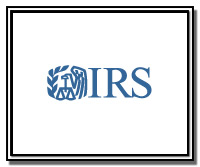
The Internal Revenue Service (IRS) issued the third round of Economic Impact Payments (EIPs) in April. Most Social Security beneficiaries and Supplemental Security Income (SSI) recipients should have received their EIPs by now. Do you have clients who believe they missed an EIP for themselves, an eligible spouse, or eligible dependents, from this round or any previous round of EIPs?
Your clients can visit our Economic Impact Payments and Tax Credits page at www.ssa.gov/eip to learn more about what steps to take. They may need to file a 2020 tax return with the IRS and claim the Recovery Rebate Credit to receive missing first or second EIPs, even if they do not have income to report for 2020. The IRS will send your clients any additional third EIP amount they are eligible for in 2021 separately. Our web page also provides links to the IRS where your clients may be able to file their federal taxes free of charge at www.irs.gov/filing/free-file-do-your-federal-taxes-for-free.
Please let your clients know that they should contact the IRS for questions about tax-related topics and economic income payments.
International Widows' Day

International Widows' Day takes place annually on June 23. We understand the financial difficulty that can come with the loss of a spouse. Social Security provides monthly financial support to widows and widowers. Eligibility depends on a person's age, disability determination, and if they have the deceased person's child in their care.
If your client has lost a spouse, please encourage them to learn more at www.ssa.gov/benefits/survivors.
SSA Receives Certificate of Excellence in Accountability Reporting

The Association of Government Accountants awarded us the Certificate of Excellence in Accountability Reporting (CEAR) for our fiscal year 2020 Agency Financial Report. The CEAR program aims to improve accountability through streamlined, effective reporting that clearly demonstrates Federal agency accomplishments and challenges. We have received the CEAR award for 23 consecutive years, an unprecedented accomplishment.
Retirement Benefits Web Portal Wins a ClearMark Award

Social Security's "Retirement Benefits Web Portal" is the 2021 ClearMark Award winner for the "Website" category. The portal is also a finalist for the Grand ClearMark Award. You can view the portal at www.ssa.gov/benefits/retirement.
The ClearMark awards are given yearly to the best plain language documents and web sites. A panel of international experts judges the entries, following a strict set of criteria. To view a full list of the awardees, visit https://centerforplainlanguage.org/2021-clearmark-winners/.
May 2021
How Social Security Continues to Serve You during the COVID-19 Pandemic

The COVID-19 pandemic continues to impose hardships and our country's most vulnerable citizens continue to suffer. Many people rely on face-to-face meetings to get the help they need. Since last year, we've seen fewer applications for the Disability Insurance (DI) and Supplemental Security Income (SSI) programs. We're working to let people know we are here to help with benefits, tools, and information.
We're giving special attention to children with disabilities — along with their families and caretakers. If your client, or someone you know, has a child who may qualify for SSI, encourage them to apply by visiting our SSI Benefits page at www.ssa.gov/benefits/ssi.
Resources, such as our People Helping Others page, provide information for anyone helping someone with accessing our services at www.ssa.gov/thirdparty. There, your clients can access our Faith-Based Community Group Outreach Toolkit for groups and organizations to share with their networks.
Please share this information with your clients.
Asian American and Pacific Islander (AAPI) Heritage Month

May is Asian American and Pacific Islander (AAPI) Heritage Month. This year's theme is "Advancing Leaders Through Purpose-Driven Service." The theme is part of a new series for 2021-2024 highlighting the Federal Asian Pacific American Council's efforts in "Advancing Leaders."
Social Security's programs serve as financial protection for millions of Americans of every race and background. In honor of this month, we are shining a spotlight on our AAPI page at www.ssa.gov/people/aapi. Please share it with your clients today.
Encourage Your Clients of All Ages to Use my Social Security

A my Social Security account isn't just for people receiving Social Security benefits. Anyone can access their Social Security information with their personal my Social Security accounts and do the following:
- View their earnings history.
- Start the benefit application process.
- Check the status of their application.
- View, print, or save a letter verifying that they do not receive benefits.
- View the benefits they could receive based on their spouse's earnings history.
- Find out if they have enough work credits to be eligible to receive benefits.
- Request a replacement Social Security card (in most States and the District of Columbia).
- View, print, or save a copy of their Social Security Statement and supplemental fact sheets.
- Find out if they qualify for other types of benefits (i.e., disability, survivors, and Medicare coverage).
- If they have enough work credits to be eligible to receive benefits,
- Compare retirement benefit estimates at different ages or dates when they want to start receiving benefits.
- View what benefits their spouse could receive based on their earnings history.
Please encourage your clients to open a personal my Social Security account today at www.ssa.gov/myaccount.
Replacement or Corrected Social Security Cards during the COVID-19 Pandemic

Social Security offices are currently open only for in-person appointments for limited, critical situations, depending upon local office conditions. However, your clients may apply for a replacement Social Security card online and by mail. Before requesting a replacement card, please remember that they might not need the physical card. Most of the time, simply knowing the Social Security number is enough.
If your client has a critical situation that requires them to have a physical card and they cannot apply by mail or online, they should call their local Social Security office. Please visit our Coronavirus (COVID-19) Updates page for more information at www.ssa.gov/coronavirus.
Applying Online
Your clients can use our online application if they are an adult, have a State-issued drivers' license or non-driver identification card, and live in the District of Columbia or one of the 45 States that verifies State-issued documents for us. All they need to do is create a personal my Social Security account to access and complete the online application at www.ssa.gov/myaccount/replacement-card.html.
If your client lives in one of the five States that do not participate — Minnesota, Nevada, New Hampshire, Oklahoma, and West Virginia — know that we are working hard to bring this service to them as soon as possible.
Applying by Mail
We require proof of your client's identity with their replacement card application (www.ssa.gov/forms/ss-5.pdf), usually a U.S. passport, or State-issued drivers' license or non-driver identification card. These proofs must show your client's name and identifying information (such as date of birth or age), be current (i.e., not expired), and be an original or a certified copy. We will return any documents they send us.
Older Americans Month – Reminder to Apply for Retirement Benefits Online

May is Older Americans Month — a great chance to share Social Security information with your older clients.
If they are ready to receive retirement benefits, they can apply online at www.ssa.gov/benefits/retirement. They can complete their application, return to a saved application not yet completed, and check their application status with a personal my Social Security account.
Your clients can do much of their business with us online from their homes. Please urge your clients to learn what they can do online at www.ssa.gov/onlineservices.
What to Do If Your Clients are Missing Economic Impact Payments
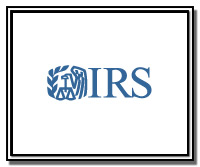
The Internal Revenue Service (IRS) issued the third round of Economic Impact Payments (EIP) last month. Most Social Security beneficiaries and Supplemental Security Income recipients should have received their EIPs by now. Do you have clients who believe they missed an EIP for themselves, an eligible spouse, or eligible dependent, from this round or any previous round of EIPs?
Your clients can visit our EIP and Tax Credits page at www.ssa.gov/eip to learn what steps to take. They may need to file a 2020 tax return with the IRS and claim the Recovery Rebate Credit to receive missing first or second EIPs, even if they do not have income to report for 2020. The IRS will send your clients any additional third EIP amount they are eligible for in 2021 separately. Our web page also provides links to the IRS where your clients may be able to file their federal taxes free of charge at www.irs.gov/filing/free-file-do-your-federal-taxes-for-free.
Please let your clients know that they should contact the IRS for questions about tax-related topics and economic impact payments.
April 2021
People with ALS Can Get Social Security Disability Benefits Sooner

Amyotrophic Lateral Sclerosis (ALS) is a disease with no known cure. It rapidly and progressively attacks the nerve cells responsible for controlling voluntary muscles. On average, 1,000 people with ALS apply for Social Security Disability Insurance (SSDI) benefits every year.
The ALS Disability Insurance Access Act of 2019 eliminated the 5-month SSDI waiting period for people with ALS who are approved for benefits on or after July 23, 2020. The new law does not affect our disability application or determination process. The law only eliminates the five-month waiting period so that people with ALS can receive SSDI benefits sooner. Claimants with ALS will also receive Medicare benefits sooner when their disability benefits begin.
This information could be valuable to your clients. Please send them to www.ssa.gov/benefits/disability/approval.html for more information.
Appointing a Representative with the New SSA-1696 Online Form

We recently launched a new electronic submission option for appointing a representative. The new online Form SSA-1696 is a two-step process that captures the necessary electronic signatures of both the prospective representative and claimant.
The prospective representative must initiate the request. Both the prospective representative and claimant must complete, sign, and submit the document.
We encourage you and your clients to visit www.ssa.gov/representation and select Begin e1696 to learn more about this convenient service.
Check Your Social Security Benefits Application or Appeal Online

If your client applied for a Social Security benefit, or has a pending reconsideration or hearing request, they can check the status online. Everyone with a pending application or appeal can create or use their personal my Social Security account to check the status.
Your clients can open their free account at www.ssa.gov/myaccount to see:
- Date of filing.
- Current claim location.
- Scheduled hearing date and time.
- Re-entry numbers for incomplete applications.
- Servicing office location.
- Publications of interest, depending on the claim and current step in the process.
Please encourage your clients to use my Social Security to check the status of their application or appeal.
There's So Much Your Clients Can Do Online

With a free my Social Security account, your clients can take advantage of many convenient and secure services online, at www.ssa.gov/myaccount. Whether at home or on the go, your clients can use their account to complete most Social Security business online, without calling or requesting an appointment.
For example, clients who are not receiving benefits can review their earnings history, check the status of their applications, view personalized estimates of future benefits based on their actual earnings, and see their latest Social Security Statement and new supplemental fact sheets.
Clients who receive benefits can print their own benefit verification letter, change or start direct deposit, change their address, and request a replacement Medicare card.
Whether your client receives benefits or not, they can use their my Social Security account to request a replacement Social Security card (in most States and the District of Columbia).
Please encourage your clients to visit www.ssa.gov/myaccount to create or access their personal account. They can also find a full list of our online services at www.ssa.gov/onlineservices.
Social Security National Disability Forum – April 15

Social Security will host the next National Disability Forum on Thursday, April 15 by conference call from 1:00 p.m. – 3:30 p.m. (ET). The forum is titled "COVID-19 and Social Security Programs: Mental Health Effects on Adults and Children."
Please visit www.ssa.gov/ndf to learn more about the National Disability Forum. You and your clients can email questions to OEA.Net.Post@ssa.gov.
Apply Online for Disability Benefits

Social Security Disability Insurance (SSDI) and Supplemental Security Income (SSI) are the largest federal programs that provide financial assistance to people with disabilities. Despite important differences between the two programs, we require a person to meet the same definition of disability for both programs.
Your clients who wish to apply for SSDI, or SSDI and SSI at the same time, may be able to apply online at www.ssa.gov/disability. On this page, they can also access important information about these programs, which we encourage them to share with friends and family.
Please encourage your clients to apply online for disability benefits.
March 2021
Editor's Note
We will now publish the SSA Update newsletter at the beginning of the month. The next edition of the Update will run at the beginning of April.
February 2021
Inspector General Announces 2nd National "Slam the Scam" Day

Social Security's Inspector General, Gail S. Ennis, designated Thursday, March 4, 2021 as the second annual National "Slam the Scam" Day. Slam the Scam raises public awareness about the government imposter telephone scams that continue to spread across the United States. Slam the Scam is part of National Consumer Protection Week, February 28 – March 6.
Please encourage your clients to visit our Scam Awareness page at oig.ssa.gov/scam for more information about National "Slam the Scam" Day and Social Security-related scams. Your clients can also visit our Fraud Prevention and Reporting page for additional resources at www.ssa.gov/antifraudfacts. We hope you will help us "Slam the Scam" on March 4!
Social Security Celebrates Black History Month

In February, our nation honors African Americans by celebrating Black History Month. Our programs and services offer a lifetime of protections for African Americans and their families. Your clients might find our People Like Me page helpful when planning for their future financial security: www.ssa.gov/people/africanamericans.
Also, please let your clients know that they can do much of their Social Security business online with secure access to their personal my Social Security account at www.ssa.gov/myaccount.
Update: New Fact Sheets Added to the Online Statement

Your clients' Social Security Statement, available using a my Social Security account, explains how much they or their family could receive in disability, survivor, and retirement benefits.
We've added new fact sheets to accompany the online Statement. The fact sheets are designed to provide clear and useful information based on age group and earnings situations. The fact sheets can help your clients better understand Social Security programs and benefits.
The new Statement fact sheets cover the following topics:
- Retirement readiness for workers in four specific age groups.
- Workers with non-covered earnings who may be subject to the Windfall Elimination Provision and Government Pension Offset.
- Social Security basics for new workers.
- How people become eligible for benefits (for workers not fully insured).
- How additional work can increase future benefits.
- Medicare readiness for workers age 62 and up.
If a client does not have a personal my Social Security account, please encourage them to create one at www.ssa.gov/myaccount. They can access their Statement, fact sheets, and other useful tools and information tailored to their needs.
You or your clients can visit our Social Security Statement webpage to learn more. Please share these resources with your clients.
Making the Most of America Saves Week

This year, America Saves Week (ASW) ran from February 22 through 26. ASW is an opportunity for organizations to encourage good financial habits. It's the perfect time to promote helping millions of people prepare for their financial future. Ask your clients to join the #ASW21 movement and use this hashtag when posting about their savings goals on social media.
People who save money and have a retirement plan are twice as likely to save successfully. Daily themes for the week included:
- Monday - Save Automatically.
- Tuesday - Save for the Unexpected.
- Wednesday - Save to Retire.
- Thursday - Save by Reducing Debt.
- Friday - Save as a Family.
You can pledge to save at www.americasavesweek.org.
We have many tools for retirement planning to help your clients with their retirement saving goals. Your clients can access our online information and resources at www.ssa.gov/benefits/retirement.
Show Your Clients What They Can Do Online at SSA.gov

Our online services make it easy for your clients to do business with us on the go or from the comfort of home. Please direct your clients to www.ssa.gov/onlineservices.
Your clients will benefit from opening a free, personal my Social Security account at www.ssa.gov/myaccount for an enhanced online experience. With their account, your clients can:
- Request a replacement Social Security or Medicare card.
- View their personalized retirement benefit estimates.
- Check their benefit application status.
- Set up or change their direct deposit information.
- Print a proof of benefits letter.
- Receive some notices online.
Please share these helpful resources with your clients today.
Get Your Benefit Statement Online as Tax Day Approaches

The Benefit Statement, also known as the Social Security 1099 (SSA-1099) or 1042S (SSA-1042S), is a tax form that we mail in January to people who receive Social Security benefits. If your clients misplaced or did not receive it, they can get a copy of their SSA-1099 or SSA-1042S right now with their personal my Social Security account at www.ssa.gov/myaccount.
Keep in mind that Social Security benefits may be taxable. Please visit www.ssa.gov/benefits/retirement/planner/taxes.html to learn more.
Social Security Update 2021

Every year, we provide new information about Social Security taxes, benefits, earnings limits, and Medicare costs. By law, many of the numbers change automatically each year to keep up with changes in prices and wage levels. This information is important for people who:
- Work and want information on taxes and work credits.
- Receive Social Security benefits and want to know the earnings limits.
- Receive Supplemental Security Income and want information on payment maximums.
Please share with your clients the updated 2021 Social Security information. They can find it in our shareable publication: www.ssa.gov/pubs/EN-05-10003.pdf.
January 2021
Hearings With Social Security During the COVID-19 Pandemic

In March 2020, we temporarily closed all of our Social Security Hearing Offices due to the COVID-19 pandemic, and are not offering in-person hearings. During the office closures, we are providing two flexible, safe, and secure hearing options: either a telephone hearing, or our new option of an online video hearing.
Additional information on both of these hearing options is available at www.ssa.gov/appeals/hearing_options.html.
To participate in online video hearings, your clients and an appointed representative, if applicable, must have access to email and a personal computer, laptop, or Android/Apple tablet or mobile device with a secure and private, high-speed Wi-Fi or cellular data connection. The device must have a camera, microphone, and speakers. If using a mobile device, you must download the free Microsoft Teams application. We will send your clients a link to a user guide that explains how to access and use Microsoft Teams before the date of an online video hearing.
Please have your client read our publication Online Video Hearings at the Social Security Administration at www.ssa.gov/pubs/EN-70-10284.pdf for additional information. A short video about online video hearings is available at www.ssa.gov/appeals/hearing_video.html.
Use my Social Security to Access Case Documents

Social Security Disability Insurance and Supplemental Security Income beneficiaries with a my Social Security account can now access case documents through the Message Center of their my Social Security account.
Please let your clients know they must contact the local Social Security office, hearings office, or Appeals Council branch where their case is pending to request that a copy of their case documents be sent to their my Social Security Message Center. Also, remind them to turn on my Social Security Message Center notifications at www.ssa.gov/myaccount so they can receive an email or text when the documents are available. You can learn more about this new feature at www.ssa.gov/appeals/electronic_case_document.html.
New Online Payment Option for Social Security Overpayments

Beginning January 2021, your clients who have an overpayment but are no longer receiving Social Security or Supplemental Security Income benefits can go online to make payments. Options to repay their overpayment in full or make partial payments include using a credit card, debit card, or bank account transfer.
Our billing notices now include our new Pay.gov direct payment option. We also include a new 10-character alphanumeric Remittance ID that your client will use instead of his or her Social Security number when making a payment online. We will generate a unique Remittance ID with each monthly bill.
Please inform your clients about our new secure payment site. They can easily make online payments at pay.gov/public/form/start/834689469. They can also access the site by visiting Pay.gov and searching "SSA" or "Social Security."
Warn Your Clients Against Scams

We continue to receive reports about scam phone calls and emails from people claiming to be Social Security employees. Don't let your clients fall for it. Those calls and emails are from scammers trying to trick them into providing personal information or money and often threatening their victims with arrest.
While our employees are conducting most business by phone due to the pandemic, we want you to remind your clients that our employees will never:
- Threaten them with benefit suspension, arrest, or other legal action unless they pay a fine or fee.
- Tell them that their Social Security number has been suspended.
- Promise a benefit increase or other assistance in exchange for payment.
- Require payment by retail gift card, cash, wire transfer, internet currency, or prepaid debit card.
- Demand secrecy from them when handling a Social Security-related problem.
- Send official letters or reports containing personally identifiable information via email.
If you receive a suspicious call or email, or you're unsure of the identity of someone who claims to be from Social Security:
- Hang up immediately or delete the email.
- Do not give money or personal information.
- Report the scam to our Office of the Inspector General.
Please share this message with your clients.
Medicare Advantage Open Enrollment

Please let your clients know that Medicare Advantage enrollees can switch from one Medicare Advantage plan to another from January 1 through March 31 at www.Medicare.gov.
Your clients can also learn more about how Social Security and Medicare interact at www.ssa.gov/benefits/medicare, where they can also sign up for Medicare & Extra Help.
December 2020
Social Security Benefits Increase in 2021

Approximately 70 million Americans will see a 1.3 percent increase in their Social Security benefits and Supplemental Security Income (SSI) payments in 2021. Federal benefit rates increase when the cost-of-living rises, as measured by the Department of Labor's Consumer Price Index (CPI-W).
The CPI-W rises when inflation increases, leading to a higher cost-of-living. This change means prices for goods and services, on average, are a little more expensive, so the cost-of-living adjustment (COLA) helps to offset these costs.
We have been mailing COLA notices throughout the month of December to retirement, survivors and disability beneficiaries, SSI recipients, and representative payees. If your clients want to know their new benefit amount before they receive their COLA notice, they can securely obtain their COLA notice online using the Message Center in my Social Security.
Your clients who already have a my Social Security account can opt out of receiving a mailed COLA notice and other paper notices. They can also receive alerts by text or email when there is a notice in the Message Center by updating their notification preferences.
Other changes based on the increase in the national average wage index also begin in January 2021. For example, the maximum amount of earnings subject to Social Security payroll tax in 2021 will be higher. The retirement earnings test exempt amount will also change in 2021. Your clients can read our COLA factsheet at www.ssa.gov/news/press/factsheets/colafacts2021.pdf.
Please encourage your clients to sign up for or log in to their personal my Social Security account at www.ssa.gov/myaccount. Your clients can find more information about the 2021 COLA at www.ssa.gov/cola.
How the Hold Harmless Provision Protects Your Client's Benefits

We work together with the Centers for Medicare & Medicaid Services to make sure your clients won't have a reduction in their Social Security benefits as a result of Medicare Part B premium increases. A special rule called the "hold harmless provision" protects their Social Security benefit payment from decreasing due to an increase in the Medicare Part B premium. The Part B base premium for 2021 is $148.50, which is $3.90 higher than the 2020 base premium.
Most people with Medicare will pay the new premium amount because the increase in their benefit amount will cover the increase. However, a small number of people will see little or no increase in their Part B premium — and their Social Security benefit checks will remain the same — because the amount of their cost-of-living adjustment isn't large enough to cover the increase.
To qualify for the hold harmless provision, your client must:
- Receive Social Security benefits or be entitled to Social Security benefits for November and December of the current year.
- Have their Medicare Part B premiums for December and January deducted from their monthly benefits.
There are exceptions. The hold harmless provision does NOT apply to them if:
- They enroll in Part B for the first time in 2021.
- They pay an income-related monthly adjustment amount premium.
- They are dually eligible for Medicaid and have their premium paid by a state Medicaid agency.
Your clients can learn more by visiting Medicare at www.medicare.gov.
Who Do I Contact – Social Security or Medicare?

Knowing who to contact and when can save your clients time. Our new one-page publication — Who Do I Contact – Social Security or Medicare? — tells them exactly that:
- English: www.ssa.gov/pubs/EN-05-10500.pdf
- Spanish: www.ssa.gov/pubs/ES-05-10500-SP.pdf
Please share this resource with your clients as a quick reference for who to contact for what service.
Your Clients Can Do Much of their Retirement Planning Online

Our online retirement portal at www.ssa.gov/retirement is a great place for your clients to start mapping out their retirement plan. There, we provide important information that they should know. Your client may have questions like:
- When should I apply to start retirement benefits?
- What documents do I need to provide?
- Which factors affect my retirement benefits?
- What should I remember to do after I apply for retirement benefits?
Please remind them they can use their personal my Social Security account at www.ssa.gov/myaccount to get an instant estimate of their future retirement benefits. They can also see the effects of starting their retirement benefits at different ages.
Holiday Local Social Security Office Closings

If you plan to do business with us during the holiday season, our offices and phone lines will be closed to the public on Christmas Eve (December 24), Christmas Day (December 25), and New Year's Day (January 1), but our online services are available every day.
Please visit www.ssa.gov/onlineservices for a list of our secure and convenient online services.
November 2020
Commissioner Saul is one of Next Avenue's 2020 Influencers in Aging

Next Avenue has named Social Security Commissioner Andrew Saul one of their 2020 Influencers in Aging. In a candid interview, Commissioner Saul details his dedication to the American public and improving SSA's customer service:
"When I came in, the first thing I did was make it very clear that our job at the agency, meaning the whole team, was to serve the public. Customer service is the most important feature--that's the mojo here, and that's what we are dedicated to do," said Commissioner Saul. "The global pandemic has changed the way we do business, and I think it will be changed forever. We must provide the public with additional online, remote service, and self-service options that we all expect from organizations today."
You and your clients can read the interview with Commissioner Saul at www.nextavenue.org/for-social-securitys-chief-andrew-saul-customer-service-is-job-1.
Shining Light on Retirement

The dream of a secure, comfortable retirement is much easier to achieve when you plan ahead. The three major elements of your retirement portfolio are benefits from pensions, savings and investments, and Social Security benefits. Your clients have a better chance of reaching their retirement goals if they start planning earlier and use the correct information to make informed decisions.
Check out our redesigned retirement pages. Your clients can learn about retirement, apply for Social Security benefits, and manage their benefits at www.ssa.gov/benefits/retirement.
Also, let your clients know that they can do much of their business with us online with a personal my Social Security account at www.ssa.gov/myaccount.
Social Security National Disability Forum

On November 18, we hosted a virtual National Disability Forum (NDF) on the topic COVID-19 and SSA Programs: Long-Term Health Effects. Commissioner Andrew Saul provided opening remarks. Steve Rollins, Esq., Deputy Associate Commissioner, Office of Disability Policy, provided the NDF introduction and made closing remarks. The panel discussion included:
Moderator: Carlos Del Rio, M.D. Professor of Medicine, Emory University School of Medicine, and Professor of Global Health and Epidemiology, Rollins School of Emory University.
Steven G. Deeks, M.D. Professor of Medicine in Residence, University of California, San Francisco.
Mercedes R. Carnethon, PhD Mary Harris Thompson Professor and Vice Chair of Preventive Medicine and Professor of Medicine (Pulmonary and Critical Care), Northwestern University Feinberg School of Medicine.
David Putrino, PhD Director of Rehabilitation Innovation, Mount Sinai Health System and Assistant Professor of Rehabilitation and Human Performance, Icahn School of Medicine at Mount Sinai.
Paul G. Auwaerter, M.D., MBA, FIDSA Sherrilyn and Ken Fisher Professor of Medicine, Johns Hopkins University School of Medicine and Clinical Director for the Division of Infectious Diseases and Director of the Sherrilyn and Ken Fisher Center for Environmental Infectious Diseases.
Laurie G. Jacobs, M.D., FACP, AGSF Chair and Professor, Department of Internal Medicine, Hackensack Meridian School of Medicine and Hackensack University Medical Center.
You and your clients can learn more about Social Security's National Disability Forum at www.ssa.gov/ndf.
Doing Medicare Business Online

Social Security is a leader in online, self-service options. In fact, your clients can do much of their Medicare business online with us. Your clients can:
- File for Medicare benefits at www.ssa.gov/benefits/medicare.
- Apply for Extra Help with Medicare Prescription Drugs at www.ssa.gov/benefits/medicare/prescriptionhelp.
- Request a replacement Medicare card with their personal my Social Security account at www.ssa.gov/myaccount.
- Enroll in Medicare Part B if they have Part A and are enrolling during the Special Enrollment Period at https://secure.ssa.gov/mpboa/medicare-part-b-online-application/.
Please remind your clients to look at our resources online before calling a local office.
Veterans and Active Duty Military Members Can Count On Social Security

Every year on Veterans Day, we honor the people who risk their lives to protect our country. Our disability program is an important part of our commitment to wounded warriors and their families.
Social Security is a valuable resource for military members who return home with injuries. If you know a wounded veteran, please let them know about our Wounded Warriors webpage at www.ssa.gov/woundedwarriors.
The Wounded Warriors webpage answers many commonly asked questions and shares other useful information about disability benefits, including how veterans can receive expedited processing of their Social Security disability claims. Benefits available through Social Security are different from those from the Department of Veterans Affairs, and they require a separate application because our definition of disabled is different. Please share this information with your clients who may need these resources.
Holiday Local Social Security Office Closings

If you plan to do business with us during the holiday season, we want you to know that our offices and phone lines will be closed to the public on Christmas Day (December 25) and New Year's Day (January 1), but our online services are available every day.
Please visit www.ssa.gov/onlineservices for a list of our secure and convenient online services.
October 2020
Social Security Benefits Increase in 2021

Approximately 70 million Americans will see a 1.3 percent increase in their Social Security benefits and Supplemental Security Income (SSI) payments in 2021. Federal benefit rates increase when the cost-of-living rises, as measured by the Department of Labor's Consumer Price Index (CPI-W).
The CPI-W rises when inflation increases, leading to a higher cost-of-living. This change means prices for goods and services, on average, are a little more expensive, so the cost-of-living adjustment (COLA) helps to offset these costs.
We will mail COLA notices throughout the month of December to retirement, survivors, and disability beneficiaries, SSI recipients, and representative payees. If your clients want to know their new benefit amount sooner, they can securely obtain the Social Security COLA notice online using the Message Center in my Social Security in early December prior to the mailed notice.
Your clients who already have a personal my Social Security account can opt out of receiving a mailed COLA notice and other paper notices that are available online. They can also choose text or email alerts when there is a notice in Message Center by updating Preferences to know when we have something important for them. For people who don't have an account yet, they must create their account by November 18, 2020 to receive the 2021 COLA notice online.
January 2021 marks other changes that will happen based on the increase in the national average wage index. For example, the maximum amount of earnings subject to Social Security payroll tax in 2021 will be higher. The retirement earnings test exempt amount will also change in 2021. Your clients can read our COLA factsheet at www.ssa.gov/news/press/factsheets/colafacts2021.pdf.
Please encourage your clients to be the first to know. They can sign up for or log in to their personal my Social Security account today at www.ssa.gov/myaccount. They may also choose email or text under "Message Center Preferences" to receive courtesy notifications. Your clients can find more information about the 2021 COLA at www.ssa.gov/cola.
Social Security Informing Your Clients About Recent Scams

The most effective way to defeat scammers is to know how to identify scams. Let your clients know they should just hang up on any call they're uncertain of and ignore suspicious emails. Scammers always find new ways to steal people's money and personal information by exploiting their fears.
One common tactic scammers use is posing as federal agents and other law enforcement. They may claim your client's Social Security number is linked to a crime. They may even threaten to arrest your clients if they do not comply with their instructions. Tell your clients to just hang up.
Your clients should remain vigilant of phone calls when someone says there's a problem with their Social Security number or their benefits. If they owe money to Social Security, we will mail them a letter explaining their rights, payment options, and information about appealing.
If your clients do not have ongoing business with our agency, it is unlikely we will contact them. If they get a suspicious call claiming to be from Social Security, they should hang up and report it to our law enforcement office at oig.ssa.gov.
Quick and Easy W-2 Filing Options using Business Services Online
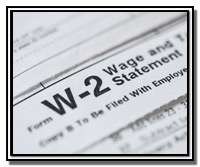
The first stop for information on W-2s, electronic filing, and verifying Social Security numbers should be our Business Services Online. Our online suite of services offers fast, free, and secure online W-2 filing options to accountants and people who process W-2s (the Wage and Tax Statement) and W-2Cs (Statement of Corrected Income and Tax Amounts).
Users must register to use these services at www.ssa.gov/bso/bsowelcome.htm. They can read more about electronic wage reporting at www.ssa.gov/pubs/EN-05-10034.pdf.
Social Security has the Answers

Your clients may have questions about our programs and benefits. We can answer them. We regularly update our Frequently Asked Questions webpage at www.ssa.gov/faq, which answers questions about our program and services, many of which can be handled online.
Your clients can see our top questions as well as browse by topic to find the information they need. Recent pressing topics include the recent COLA announcement, COVID-19 information, current scams, and my Social Security accounts. Please remind your clients that they can easily share this information with friends and family who may need it.
Plan for the Future and Manage the Present with a my Social Security Account

A my Social Security account is not only for people receiving Social Security benefits. Here are the many features people not receiving benefits can access online with their personal my Social Security account:
- Request a replacement Social Security card (in most states).
- View, print, or save a copy of their Social Security Statement.
- View their earnings history.
- Find out if they have enough work credits to be eligible to receive benefits.
- Find out if they qualify for other types of benefits (i.e., disability, survivors, and Medicare coverage).
- View, print, or save a letter verifying that they do not receive benefits.
- View the benefits they could receive based on their spouse's earnings history.
- If they have enough work credits to be eligible to receive benefits, they can also:
- Compare retirement benefit estimates at different ages or dates when they want to start receiving benefits.
- View what benefits their spouse could receive based on their earnings history.
- Start the benefit application process online.
- Check the status of their application.
Please encourage your clients to open a my Social Security account at www.ssa.gov/myaccount.
The Disability Update Report Can Now be Completed Online

The Disability Update Report is part of our Continuing Disability Review (CDR) process, which is required by law. We periodically review each case to determine if the beneficiary continues to meet the eligibility rules to receive disability benefits. We mail the Disability Update Report, or Form SSA-455, to disabled beneficiaries to obtain updated information about their medical conditions and recent treatments. They now also have the option to complete the SSA-455 online at https://www.ssa.gov/ssa455-online-form.
Economic Impact Payment News

The Internal Revenue Service (IRS) has announced two important updates about economic impact payments (EIP). First, the IRS has extended the deadline for non-tax filers to provide information to get their EIP this year. The IRS previously announced that adult non-tax filers would have until November 21 to submit their information via the IRS' Non-Filer Tool, while the deadline to submit information for children had expired. However, now, adults may continue to submit their children's information until November 21 as well. An adult may receive up to $1,200. Adults with a qualifying child can get $500 per child.
Additionally, the IRS is now enabling Social Security and Supplemental Security Income beneficiaries, who already received their own EIP, to use the Non-Filer Tool to register for a payment for their spouse or qualifying child if they did not receive their EIP. To help increase awareness about the importance of registering for an EIP, the IRS has established November 10 as National Economic Impact Payment Registration Day. Please help inform your clients about the extended deadline and that they can now use the tool for their spouse or child, even if they already received their own EIP.
September 2020
The Internal Revenue Service (IRS) Extends Deadline to Ensure People with Children Receive $500 Economic Impact Payments (EIP)

The IRS has extended its deadline to September 30, 2020, for people to provide information to the IRS using its Non-Filer Tool at www.irs.gov/coronavirus/non-filers-enter-payment-info-here. Your clients should do this if all of the following apply:
- Receive Social Security retirement, survivors, or disability benefits, or Supplemental Security Income (SSI) payments.
- Did not file a 2019 or 2018 tax return.
- Have a qualifying child uder age 17.
- Did not already enter information in the IRS' Non-Filer Tool for themselves and at least one child.
If your client already entered information in the IRS' Non-Filer Tool before, and even after, the IRS' previously announced deadlines (April 22 if receiving Social Security; May 5 if receiving SSI) they do not need to do anything. The IRS will automatically make an EIP in October 2020 based on the information provided to them. Individuals who began receiving Social Security or SSI on or after January 1, 2020 should receive their EIP in November 2020.
Please read the IRS' August 14 press release at www.irs.gov/newsroom/irs-takes-new-steps-to-ensure-people-with-children-receive-500-economic-impact-payments for more information.
Compassionate Allowances: Five Conditions Added to Fast Track

Processing disability claims quickly and accurately is important to us. It is through this commitment to you that we use the Compassionate Allowances program to help us identify and fast-track cases where people have medical conditions and diseases that are most likely to meet Social Security's standards for disability benefits.
In August, we added five conditions to this essential list:
- Desmoplastic Small Round Cell Tumors,
- GM1 Gangliosidosis - Infantile and Juvenile Forms,
- Nicolaides-Baraister Syndrome,
- Rubinstein-Tybai Syndrome, and
- Secondary Adenocarcinoma of the Brain.
Additions to the list allow us to ensure that anyone with qualifying disabilities can receive the benefits they need quickly.
Due to the severe nature of many of these conditions, these claims are often allowed based on medical confirmation of the diagnosis alone. To date, more than 600,000 people with severe disabilities have been approved through this accelerated, policy-compliant disability process. Over the last decade, the list has grown to a total of 242 conditions, including certain cancers, adult brain disorders, and a number of rare disorders that affect children.
Please share the Compassionate Allowances program with your clients who may need these vital benefits at www.ssa.gov/compassionateallowances.
Social Security National Disability Forum

On September 22, we hosted a virtual National Disability Forum (NDF) on the topic COVID-19 and SSA Programs: Serving Our Beneficiaries through Unprecedented Times. There were 844 calls into the conference line.
Commissioner Andrew Saul provided opening remarks. Jeffrey Buckner, Associate Commissioner, Strategic and Digital Communications welcomed the participants and provided agency updates. Steve Rollins, Esq., Deputy Associate Commissioner, Office of Disability Policy provided the NDF overview. Sam Richardson, Deputy Associate Commissioner, Office of Public Service and Operations Support, facilitated the open discussion for the morning session. Dawn Wiggins, Associate Commissioner, Office of Income Security Programs, facilitated the open discussion for the afternoon session. Rebecca Vallas, Senior Fellow, Center for American Progress, was the moderator. The panels included:
Morning Panel
- Anne K. Callagy, Director of Government Benefits, The Legal Aid Society
- Randy Feliciano, MPA, Senior Program Manager, National Council on Aging
- Cara Liebowitz, Development Coordinator, National Council on Independent Living
- Kelly Bagby, Vice President of Foundation Litigation, AARP
- Yvonne Perret, M.A., M.S.W., LCSW-C, Executive Director, Advocacy and Training Center
- Tammy Seltzer, Esq., Director, DC Jail & Prison Advocacy Project, Disability Rights DC
Afternoon Panel
- Melissa Harris, Deputy Director, Disabled and Elderly Health Programs Group, Centers for Medicare & Medicaid Services
- Dr. Leonie Heyworth, MD, MPH, Director of Synchronous Telehealth, VHA Telehealth Services, U.S. Department of Veterans Affairs
- Vickie Kennedy, Assistant Director for Insurance Services, Washington State Department of Labor & Industries
- Suzy Rosen Singleton, Chief, Disability Rights Office, Consumer and Governmental Affairs Bureau, Federal Communications Commission
- Jill Yu, Branch Chief, Office of Field Policy and Management, Housing and Urban Development
Topics included:
- The Advocate Experience: Best practices and lessons learned for connecting seniors, people with disabilities, and other vulnerable populations to benefits and other critical services during the pandemic.
- The Governmental Agency Experience: Adapting policies and procedures to continue to serve the public during the pandemic.
You and your clients can learn more about Social Security's National Disability Forum at www.ssa.gov/ndf.
New Online Video Hearings

We closed Social Security hearing offices to the public for in-person services starting Tuesday, March 17, 2020 due to the COVID-19 pandemic. We have been conducting appeal hearings with Administrative Law Judges (ALJs) via telephone only since March, while offices remain closed to the public to protect the health and safety of the public and employees.
We will soon have a new free service for people awaiting a hearing decision. In addition to telephone hearings, we will offer the opportunity for an online video hearing using the Microsoft Teams platform. This service will allow applicants and their representatives to participate in the hearing from anywhere they have access to a camera-enabled smartphone, tablet, or computer.
This stable and secure online platform will allow the Social Security judge to see and interact with applicants and their representatives just like an in-person hearing, while maintaining privacy of the claimant's information. Other hearing experts, such as medical or vocational experts, may participate as well.
For the new online video hearings, whether the device is a laptop, smartphone, or tablet on either iPhone or Android, your clients will experience a clear picture and audio of the ALJ and their representative during their hearing. For updates on the implementation and expansion of this new hearing service, and other Social Security information, please visit the agency's COVID-19 web page at www.ssa.gov/coronavirus and our Hearing Options page at www.ssa.gov/appeals/hearing_options.html.
Social Security and National Hispanic Heritage Month

Every September 15 through October 15, we celebrate National Hispanic Heritage Month. It is a time to recognize America's diversity and acknowledge how it makes us stronger.
We also provide information about our programs and services in Spanish. If Spanish is your client's primary language, they can visit www.segurosocial.gov. The site includes important information on topics such as planning for retirement and applying for benefits. Spanish-speaking individuals wishing to apply for retirement, disability, survivor, and other benefits, as well as Medicare, can call 1-800-772-1213 from 8 a.m. to 5:30 p.m. weekdays and select the option for Spanish.
Your clients can learn more about what we offer at www.ssa.gov/espanol/personas/hispanos. They can also access our Facebook and Twitter pages in Spanish at www.facebook.com/segurosocial and twitter.com/segurosocial.
August 2020
New Streamlined Waiver Process for Certain Overpayment Debts
In our continued effort to address the effects of the COVID-19 pandemic, we have streamlined the overpayment debt waiver process for overpayment debts that we did not timely process due to the temporary suspension of certain actions during the pandemic. Your clients may qualify for a streamlined waiver if:
- An overpayment debt accrued between March 1 and September 30, 2020 because Social Security did not process an action due to the COVID-19 pandemic; and
- We identify the debt by December 31, 2020.
The streamlined waiver process does not apply to overpayment debts resulting from fraud or similar fault, or involving misuse of benefits by a representative payee, nor will the process apply to debts we processed timely.
It is important to note that under our rules individuals still need to request a waiver. If your client may have a qualifying overpayment debt, please tell them to call their local Social Security office to request a waiver. The local office will handle the process over the telephone. The telephone number for the local office also will be in the overpayment notice and is available at www.ssa.gov/locator on our website.
Social Security's Plan to Better Serve Your Clients

We are committed to improving service to the millions of Americans who rely on us for help. This effort requires that we modernize our technology so we can provide both our employees with effective, easy-to-use tools that help them do their job well and—as the COVID-19 pandemic has underscored—the public with convenient and robust self-service options that do not require a visit to our offices.
While such service options depend on modern technology, many of our systems are more than 30 years old. Nearly two years ago, we initiated a multi-year Information Technology (IT) Modernization Plan to replace our legacy systems with updated technology that enhances our service capabilities. We have updated this plan to continue to build on our progress and ensure we keep up with rapid changes to technology.
We will continue to review our IT Modernization plans to make sure they are flexible enough to keep up with rapid technology changes and future customer needs so we deliver on your expectations. We invite you and your clients to read our IT Modernization plan at www.ssa.gov/open/materials/IT-Modernization-Plan.pdf and the 2020 Update at www.ssa.gov/open/materials/IT-Modernization-Plan-2020-Update.pdf.
Reporting Earnings Online

We provide an online wage reporting service that allows Social Security Disability beneficiaries and their representative payees, and Supplemental Security Income (SSI) recipients and their spouses, parents, deemors, and representative payees, to report wages securely online. The service is available with a free, personal my Social Security account.
This online option allows your clients to report wages without having to contact a local Social Security office each month. (Note, your client will still need to contact an office to report when they first start working for a new employer.) Using a personal my Social Security account to report wages also lets your client print or save a receipt of their report. Representative payees are able to report wages, but won't have access to the beneficiary's or recipient's other information.
You and your clients can visit www.ssa.gov/myaccount today to learn more about this convenient online service.
Our Online Services are Here for Your Clients

Your clients can use our online services at www.ssa.gov/onlineservices to conveniently do much of their business with us without having to call or visit our offices.
With a free my Social Security account, your clients can take advantage of many secure services. For example, they can receive personalized estimates of future benefits based on their actual earnings, see their latest Social Security Statement, and review their earnings history. With a my Social Security account, they also can easily request a replacement Social Security Card (in most states and the District of Columbia) or check the status of an application.
Encourage your clients to go to www.ssa.gov/myaccount to create or access their account.
Applying Online for Disability Benefits When Your Clients Need Them

The Social Security and Supplemental Security Income disability programs are the largest of several Federal programs that provide assistance to people with disabilities. While these two programs are different in many ways, both are administered by us and only individuals who have a disability and meet medical criteria may qualify for benefits under either program.
Your clients who wish to apply for disability benefits or disability and Supplemental Security Income benefits at the same time may be able to apply online at www.ssa.gov/disability/. On this page, they can also access important information about these programs, which they can share with friends and family. Applying online for disability benefits offers several advantages including being able to file immediately from the comfort of home.
The IRS Takes New Steps to Ensure People with Children Receive $500 Economic Impact Payments

The IRS has extended its deadline to September 30, 2020 to provide information to the IRS using its IRS' Non-Filer Tool if an individual:
- receives Social Security retirement, survivors, or disability benefits, or SSI payments;
- did not file a 2019 or 2018 tax return;
- has a qualifying child under age 17; and
- did not already enter information in the IRS' Non-Filer Tool for themselves and at least one child.
If the individual already entered information in the IRS' Non-Filer Tool before and even after the IRS' previously announced deadlines (April 22 if they receive Social Security; May 5 if they receive SSI), they do not need to do anything. The IRS will automatically make a payment in October based on the information the individual provided them.
Please read the IRS' August 14 press release for more details and share this information with your clients.
July 2020
New Benefit Verification Letters

The Social Security Administration held discussions with stakeholders on ways to improve our Benefit Verification letters. We listened to those recommendations and are excited to release a new and improved letter. Soon, when a person requests a Benefit Verification letter, we will provide a standardized letter, whether they call asking us to mail the letter or get their letter using their personal my Social Security account. We will roll out the new Benefit Verification letters between July and September.
The new Benefit Verification letter includes additional identifiers in addition to name, date of birth, and the benefits received, if any. Clients receiving Social Security or Supplemental Security Income (SSI) benefits can use their letter as proof of income for loans, housing assistance, mortgage, and other verification purposes. Individual representative payees can also use the new Representative Payee Portal with their own my Social Security account to see and print a current benefit verification letter online for themselves or their beneficiaries. Non-beneficiaries may request proof they do not receive benefits, or proof that benefits are pending, in the same standardized letter.
Social Security's Plan to Better Serve Your Clients

We are committed to dramatically improving service to the millions of Americans who expect and deserve timely and accurate help from us. This effort requires that we modernize our technology to provide our employees with effective, easy-to-use tools that help them do their job well. As the COVID-19 pandemic has also underscored, we must offer additional online, remote service, and self-service options that you expect from organizations today.
While such service options depend on modern technology, many of our systems are more than 30 years old. Nearly two years ago, we initiated a multi-year Information Technology (IT) Modernization Plan to replace our outdated systems with updated technology and enhance our service capabilities. We have updated this plan to build upon the tremendous progress we have made over the past two years and to reflect input from public and private technology experts, our frontline employees, and most importantly, from our interactions with you.
This update enhances our focus to improve our services online, over the telephone, and in our local offices. We are also committed to ensure that the service options we offer are both secure and easily accessible. Currently, it is too hard for many people to prove who they are to access our online services, which is why improving our my Social Security account registration process is the foundation for our modernization efforts.
We will continue to review our IT Modernization plans and make sure they are flexible enough to keep up with rapid technology changes and future customer needs so that we deliver on your expectations. Your clients can read our IT Modernization plan at www.ssa.gov/open/materials/IT-Modernization-Plan.pdf and the 2020 Update at www.ssa.gov/open/materials/IT-Modernization-Plan-2020-Update.pdf.
Benefits for Children with Disabilities

Our Supplemental Security Income program helps children with qualifying disabilities and their families. For this program, a child must meet all of the following requirements to be considered disabled and medically eligible:
- The child must have a medical condition, or a combination of conditions, that result in "marked and severe functional limitations." This means that the condition(s) must very seriously limit the child's activities.
- The child's condition(s) must have been disabling, or be expected to be disabling, for at least 12 months; or the condition(s) must be expected to result in death.
Have your clients visit www.ssa.gov/people/parents/ to learn more, including resources to help parents understand and prepare for child disability benefits.
Online Appeals Council Review

Claimants and their appointed representatives requesting a review of a Social Security or Supplemental Security Income claim at the Appeals Council level have the option to submit their request online. The online appeals application is simple, convenient, and secure. It guides your clients and their appointed representatives through every step of the process, including any necessary documentation.
You can learn more about how your clients can request an Appeals Council review at www.ssa.gov/benefits/disability/appeal.html.
Disability Benefits When Your Clients Need Them

Disability benefits offer a financial lifeline for your eligible clients. Benefits are for severe impairments (or combination of impairments) that have lasted, or are expected to last, for at least one year or are expected to result in death. When determining if a person meets our definition of disability, we consider medical severity, duration, earnings, and ability to perform past relevant work or any other work that exists in significant numbers in the national economy. There are two programs that pay disability benefits:
- Social Security Disability Insurance pays benefits to you and certain members of your family if you meet eligibility requirements including you worked long enough and paid Social Security taxes to be insured.
- Supplemental Security Income makes payments to people who have low income and few resources, and who are age 65 or older, blind, or disabled.
Your clients can learn more about Social Security disability benefits at www.ssa.gov/disability and about SSI at www.ssa.gov/ssi.
June 2020
Sign up for Medicare Part B Online, By Mail, or By Fax

Your clients don't need to leave the comfort of their home to sign up for Medicare Part B. If they are already enrolled in Medicare Part A and would like to enroll in Part B, they must complete form CMS-40B, Application for Enrollment in Medicare – Part B (Medical Insurance). If they are applying for Medicare Part B due to a loss of employment or group health coverage, they will also need to complete form CMS-L564 (Request for Employment Information).
They can complete and submit the forms online by visiting our new Medicare Part B webpage; complete and return the forms by mail to their local Social Security office; or complete and fax the forms to 1-833-914-2016. If you or your clients have questions, please contact Social Security at 1-800-772-1213 (TTY 1-800-325-0778).
A Redesigned Retirement Benefits Portal That Works for Your Clients

We announced the first of several steps the agency is taking to improve the public's experience on its website. The newly redesigned retirement benefits portal, at www.socialsecurity.gov/benefits/retirement, will help millions of people prepare for and apply for retirement.
The redesigned portal will make it easier for people to find and read about Social Security retirement benefits. There are fewer pages with clearer and concise information. The portal also is optimized for mobile devices so people can learn and do what they want from wherever they want, and the portal now includes the ability to subscribe to receive retirement information and updates. Encourage your clients to visit www.socialsecurity.gov/benefits/retirement to find out how to Learn, Apply, and Manage retirement benefits, and learn how to create a personal my Social Security account online. More improvements to Social Security's website are planned for later in 2020 as the agency seeks to continuously improve the public experience at www.socialsecurity.gov.
Social Security and Protecting Elders from Scams

World Elder Abuse Awareness Day was June 15. We recognize how important it is to protect older people from scammers. In times like the current pandemic when people are particularly vulnerable, scammers will pretend to be Social Security or other government employees to gain people's trust to steal their money and personal information. They may even pose as COVID-19 contact tracers working to stop the spread of the virus and ask for payment or your Social Security number. Please remind your clients that the most effective way to defeat scammers is by knowing how to identify scams and by hanging up or ignoring the calls and emails.
If your clients get a Social Security scam phone call, they should hang up and report it to our law enforcement office at oig.ssa.gov.
If your clients ever owe money to Social Security, we will mail them a letter explaining their payment options and their appeal rights. If you or your clients get a call about a Social Security problem, be very cautious. If your clients do not have ongoing business with the agency, or if the caller mentions suspending their Social Security number or makes other threats, the call is likely a scam. Tell your clients to ignore it, hang up, and report it to us at oig.ssa.gov.
Reporting Earnings Online When You're Disabled

Social Security provides an online wage reporting service that allows Social Security disability beneficiaries and their representative payees, and Supplemental Security Income (SSI) recipients and deemors to report wages securely online through my Social Security.
This online option allows them to avoid visiting a field office to report their wages in person and allows them to print or save a receipt of their report. SSI wage reporters can also use our SSI Telephone Wage Reporting and SSI Mobile Wage Reporting applications. People must still contact an office to report when they first start working for each new employer. It is also important to note that representative payees are able to report wages, but won't have access to the beneficiaries' or recipient's other information.
You and your clients can visit www.ssa.gov/myaccount today to learn more about this convenient online service.
Free Up Your Time to Stay Healthy with my Social Security

We observed Men's Health Week from June 10 to 16. It's important to make time for things that help us stay healthy and happy— spending time with people we care about, exercise, and recreation. Opening a my Social Security account online can help save time. Our online services make doing business with us fast and easy, freeing up your client's schedule.
With a my Social Security account, you and your clients can:
- Get a letter with proof of benefits, if currently receiving them.
- Get an estimate of future benefits, if still working.
- Keep track of earnings and verify them every year.
- Manage benefits.
- Request a replacement Social Security card, if meeting certain criteria.
Remember, your clients can easily share all of our online resources on social media. Tell friends and family to check out the features we offer at www.ssa.gov/myaccount.
Important Information About Reaching Social Security During the COVID-19 Pandemic

During the current coronavirus pandemic, we continue to provide help to your clients. While our offices are not currently providing service to walk-in visitors, we remain committed to providing ongoing benefits and vital services. We are able to help people by phone with most Social Security business. Your clients can speak with a representative by calling their local Social Security office or our National 800 Number, 1-800-772-1213. We provide local office phone numbers conveniently online with our Social Security Office Locator at secure.ssa.gov/ICON/main.jsp.
We also have many secure and convenient online services at www.ssa.gov/onlineservices. Most of your client's business with us can be done online, however, we know that many people still rely on phone or in-person help. If your clients have a critical situation and we cannot help them by phone or online, we may be able to schedule an appointment for them.
If your clients need help, have them contact us now to get the help they need. We also understand that getting medical and other documentation can be difficult due to the pandemic so we continue to extend certain deadlines wherever possible.
May 2020
Coronavirus – Important Information about Social Security Offices

We recognize that your clients may have questions about the status of Social Security offices during the Coronavirus pandemic. Although our offices are currently closed to the public for face-to-face service, our employees continue to work remotely to provide critical services to the public.
We will continue to update our website with information on the status of our offices. Please visit our COVID-19 page at www.ssa.gov/coronavirus for more information. Your clients can learn about the critical services we provide online or by phone, as well as other important updates. They can also subscribe to get an email or text message notification when we update the page so they can stay informed.
We continue to monitor the situation nationwide and improve our current online and telephone services, while we plan for how we can provide a safe office environment for the public and our employees.
Release of the Annual Report of the Supplemental Security Income Program

The Annual Report of the Supplemental Security Income (SSI) Program provides comprehensive information on the SSI program in accordance with the mandate in Section 231 of the Personal Responsibility and Work Opportunity Reconciliation Act of 1996. SSA prepares and delivers this report to the President and Congress on an annual basis. The SSI report includes:
- A comprehensive description of the SSI program;
- The 25-year projection of future recipients and program costs;
- A historical summary of statutory changes to the SSI program;
- Historical and current data related to various aspects of the SSI program; and
- Summaries of any relevant research on the SSI program.
The SSI report also includes a statement on the SSI program from the Social Security Advisory Board as allowed by the above legislation. You and your clients can read the report at www.ssa.gov/OACT/ssir.
Older Americans Month – Reminder to Apply for Retirement Benefits Online

May is Older Americans Month. This provides a good opportunity to share Social Security information with your older clients.
Our benefits calculators are helpful tools for people considering retirement. Your clients can access them at www.ssa.gov/benefits/calculators. They can also use our benefits planner at any stage in their career to create a plan for their golden years at www.ssa.gov/benefits/retirement/.
If they are ready to begin receiving retirement benefits, they can apply online at www.ssa.gov/benefits/retirement. They can complete their application, return to a saved application they haven't completed, or check their application status.
Using our online tools and services can be especially helpful to people of all ages as we continue to adapt to the changes and challenges presented by the current public health crisis. Encourage your clients to learn what they can do online at https://www.ssa.gov/onlineservices/.
Connecticut, Ohio, and Utah Residents - You Can Now Request a Replacement Social Security Card Online

Residents in Connecticut, Ohio, and Utah can now request a replacement Social Security card online. Our online application makes getting a replacement card easier than ever.
To use this online service, they will need to create a my Social Security at www.ssa.gov/myaccount. Once they have a my Social Security account, they should follow the instructions to request a replacement Social Security card. They will need to meet certain requirements to request a replacement card online:
- Be a U.S. citizen age 18 or older;
- Have a U.S. mailing address (this includes APO, FPO, and DPO addresses);
- Not be requesting a name change or any other change to your card; and
- Have a driver's license or state-issued identification card.
We use strict identity verification and security features to protect your clients' information. The application process has built-in features to confirm an individual's identity and detect fraud.
Encourage your clients to use my Social Security for their business with us.
Asian American and Pacific Islander (AAPI) Heritage Month

May is Asian American and Pacific Islander (AAPI) Heritage Month in the United States. This year's theme, "Unite Our Nation by Empowering Equality" focuses on leadership, diversity, and inclusion to advance the AAPI community.
In honor of AAPI Heritage Month, we want to highlight our AAPI page, which has a wealth of information at www.ssa.gov/people/aapi. Share it with your clients today.
Social Security's programs serve as vital financial protection for millions of Americans, regardless of race or background. Our Retirement Benefits website explains all the benefits Social Security has to offer your clients, their spouses, children, and other eligible members of their family. If your clients are ready to begin receiving retirement benefits, they can apply for benefits using our online application at www.ssa.gov/benefits/retirement.
April 2020
Medicare Part B Fax Applications

Although our offices are closed to the public for in-person services, we are taking steps to serve you and your clients during the Coronavirus Disease (COVID-19) pandemic. Your clients who already have Medicare Part A (hospital insurance) but need to sign up for Medicare Part B (medical insurance) can now submit their completed Form CMS-40B, Application for Enrollment in Medicare Part B (Medical Insurance) to us by:
- Fax at 1-833-914-2016; or
- Mail to their local Social Security office. You can find the local office's mailing address by using the Locate An Office by Zip button at www.ssa.gov/locator.
Your clients can get Form CMS-40B at www.cms.gov/Medicare/CMS-Forms/CMS-Forms/CMS-Forms-Items/CMS017339. If your clients apply for Medicare Part B due to a loss of employment or group health coverage, they will also need to complete Form CMS-L564, Request for Employment Information, and fax or mail their completed form to us. Your clients can get Form CMS-L564 at www.cms.gov/Medicare/CMS-Forms/CMS-Forms/CMS-Forms-Items/CMS009718.
Advance Designation: Choose a Representative Payee for Social Security to Consider Before You May Need One

The future can be uncertain. However, Social Security's Advance Designation program can help put your clients in control of their benefits if a time comes when they need a representative payee to help manage their money. Advance Designation enables them to identify up to three people, in priority order, whom they would like to serve as their potential representative payee.
The following people may choose an Advance Designation:
- Adults applying for benefits who do not have a representative payee.
- Adults receiving Social Security benefits or Supplemental Security Income (SSI) payments who do not have a representative payee.
- Emancipated minors applying for benefits who do not have a representative payee.
- Emancipated minors receiving Social Security benefits or SSI payments who do not have a representative payee.
If your clients fall into one of the above categories, they may provide and update Advance Designation information when they:
- File a claim for benefits online.
- Use the application available in your personal my Social Security account.
- Call us by telephone at 1-800-772-1213 (TTY 1-800-325-0778).
Your clients may also change their Advance Designation(s), including the priority order, at any time while they are still capable of making their own decisions. In the event that they can no longer make their own decisions, your clients and their family will have peace of mind knowing they already chose someone they trust to manage their benefits.
We have updated our Frequently Asked Questions at faq.ssa.gov/en-us/Topic/article/KA-10039 to answer any questions your clients may have about Advance Designation. They may also find more information about representative payees on our blog at blog.ssa.gov/making-wise-choices-when-a-representative-payee-manages-your-money.
Important Update to my Social Security's Representative Payee Portal

Representative payees can now get a benefit verification letter for the person they represent using their own my Social Security account without leaving their home. They can save, email, and print these letters with ease, without having to call or visit a field office.
Especially during the COVID-19 pandemic, encourage all of your clients to open a my Social Security account at www.ssa.gov/myaccount so they can do their business with us online. You can also share with your clients our Representative Payee Portal page at www.ssa.gov/myaccount/rep-payee.html and our Benefit Verification page at www.ssa.gov/myaccount/proof-of-benefits.html.
Coronavirus Disease (Covid-19): Important Information about Social Security Services

We recognize that your clients may have questions about how the Coronavirus Disease (COVID-19) will affect Social Security services. Please reassure them that we continue to pay Social Security and SSI benefits.
Your clients can conduct their business with us online at www.ssa.gov/onlineservices, including:
- Applying for benefits.
- Setting up or changing direct deposit.
- Checking the status of an application or appeal.
- Requesting a replacement Social Security card.
- Changing their address, if receiving benefits.
- Getting proof of their benefits.
Please encourage your clients to try our convenient and secure online services -for immediate access to important information, putting them in control of their time and allowing them to avoid unnecessary exposure during the COVID-19 pandemic. Due to the pandemic, be aware that our call wait times are much longer than normal.
For more information, please visit our COVID-19 page at www.ssa.gov/coronavirus, where your clients can find the services we can provide, determine the best way to get service, and get important information about deadlines we are extending to ease the burden on them and medical providers during this pandemic. They can also subscribe to get an email or text message notification when we update the page.
Protecting your Clients from Social Security Scammers during the COVID-19 Pandemic

Some of your clients may have received fraudulent letters threatening suspension of their Social Security benefits due to Coronavirus Disease (COVID-19)-related office closures. Please let them know that we will not suspend or discontinue benefits because our offices are closed.
The Social Security Office of the Inspector General has received reports that Social Security beneficiaries have gotten letters through the mail stating their payments will be suspended or discontinued unless they call a phone number referenced in the letter. Scammers then try to mislead beneficiaries into providing personal information or payment via retail gift cards, wire transfers, internet currency, or by mailing cash, to maintain their regular benefit payments during this period of COVID-19 office closures.
If you or your clients receive a letter, text, call, or email that is suspicious — about an alleged problem with your Social Security number, account, or payments — hang up or do not respond. We encourage you or your clients to report Social Security scams using our dedicated online form at oig.ssa.gov. Please share this information with your friends and family to help spread awareness about Social Security scams.
Update: 2020 Trustees Report

On April 22, the Social Security Board of Trustees released its annual report on the long-term financial status of the Old-Age and Survivors Insurance (OASI) and Disability Insurance (DI) Trust Funds.
The combined trust funds are projected to become depleted in 2035, with 79% of benefits payable after that time. The DI Trust Fund is estimated to become depleted in 2065, with 92% of benefits still payable.
In the 2020 Report to Congress, the trustees also announced:
- The asset reserves of the combined OASDI Trust Funds increased by $2.5 billion in 2019 to a total of $2.897 trillion.
- The projected actuarial deficit over the 75-year projection period is 3.21% of taxable payroll — higher than the 2.78% projected in last year's report.
You and your clients can view the full 2020 Trustees Report at www.ssa.gov/OACT/TR/2020/.
March 2020
Coronavirus (COVID-19): Important Information about Social Security Services

Effective Tuesday, March 17, 2020, we suspended face-to-face service to the public in our field offices and hearings offices nationwide until further notice. This decision protects the population we serve—older Americans and people with underlying medical conditions—and our employees during the Coronavirus (COVID-19) pandemic.
During the COVID-19 pandemic, we are dedicating available staff to serve people in most critical need of our services. Especially during this time, we encourage the public to use our online services. We will provide limited, critical services via phone and mail while we focus our efforts on serving people most in need. If you cannot conduct business with us online, field offices staff will help by phone on critical issues. You can find local field office inquiry lines by accessing our Field Office Locator.
Our National 800 Number is also handling critical issues. To allow available agents to provide better phone coverage, we temporarily changed the National 800 Number hours starting on Tuesday, March 31, 2020. The hours changed from 7:00 a.m. to 7:00 p.m. local time to 8:00 a.m. to 5:30 p.m. local time. We are experiencing longer than normal wait times, up to 90 minutes or more, on the 800 Number and ask the public to remain patient, use our online services at www.socialsecurity.gov, or call their local office.
Due to the COVID-19 pandemic, we are applying the maximum flexibility in our policies and procedures to help us serve you better under these circumstances. Please visit www.ssa.gov/coronavirus to see details about the critical services we are providing and other important information to help your clients.
We appreciate your patience and understanding.
National Consumer Protection Week and Slam the Scam

National Consumer Protection Week was March 1 through 7 and we spread the word about government imposter scams, which was the number one type of fraud reported to the Federal Trade Commission's Consumer Sentinel Network in 2019.
Our Inspector General, Gail S. Ennis, designated March 5, 2020 as National "Slam the Scam" Day to draw Americans' attention to these widespread phone scams. Callers and emailers pretend to be government employees, often from Social Security, to gain people's trust to steal their money and personal information. The most effective way to defeat scammers is to recognize a scam and hang up or ignore the calls or text messages.
Government agencies never:
- Call you unsolicited to suspend your Social Security number, tell you your Social Security number has been used in a crime, or offer to resolve identity theft or a benefit problem in exchange for payment.
- Require that you pay fines, fees, or debts immediately with retail gift cards, prepaid debit cards, wire transfers, internet currency, or by mailing cash.
- Insist on secrecy about a legal problem, or tell you to make up stories to tell family, friends, or store employees.
We hosted a Facebook Live event with Inspector General Ennis and Monica Vaca, Associate Director for the Division of Consumer Response and Operations at the Federal Trade Commission. We talked about National "Slam the Scam" Day and how we fight Social Security phone scams. You and your clients can watch the video at www.facebook.com/SocialSecurity/videos/530450680932425/.
We also joined USAGov for two #SlamTheScam Twitter chats on March 5. Participants from the Internal Revenue Service, Federal Trade Commission, and Social Security's Office of the Inspector General helped the public identify different types of scams, recognize red flags, learn how to report suspected scams, and know what to do if someone falls victim to a scam. You and your clients can check out the conversation in English hosted by @USAGov under hashtag #SlamTheScamChat and in Spanish hosted by @USAGovEspanol under hashtag #OjoConLasEstafas.
Visit oig.ssa.gov/scam for more information on how to protect yourself and report scam calls.
National Women's History Month

Throughout March, our nation celebrates Women's History Month. Today, more women work, pay Social Security taxes, and earn credit toward monthly retirement income than at any other time in our history.
Social Security has served a vital role in the lives of women and all Americans for nearly 85 years. According to the U.S. Census Bureau, a female born today can expect to live more than 80 years. With longer life expectancies than men, women tend to live more years in retirement and have a greater chance to exhaust other sources of income. Women need to plan early and wisely to protect themselves in retirement.
Share Social Security: What Every Woman Should Know with your clients. Find it at www.ssa.gov/pubs/EN-05-10127.pdf.
Medicare Enrollment Explained

Please encourage your clients to apply for Medicare online if they:
- Are at least 64 years and 9 months old;
- Want to sign up for Medicare but do not currently have ANY Medicare coverage;
- Do not want to start receiving Social Security benefits at this time; and
- Are not currently receiving Social Security retirement, disability, or survivors benefits.
They should sign up for Medicare three months before reaching age 65, even if they are not ready to start receiving Social Security retirement benefits. Your clients can opt out of receiving their retirement benefits when they are completing the online application. They can apply online for retirement benefits later.
Your clients can learn more at www.ssa.gov/benefits/medicare.
Celebrating National Professional Social Work Month

You or some of your clients may be social workers or volunteers in your communities. Give your clients the Social Security tools they need to keep the people they serve informed about our online services at www.socialsecurity.gov/onlineservices.
Do your clients include parents, guardians, or guidance counselors? A useful publication to share with groups who work with youth as they transition from foster care is What You Need to Know About Your Supplemental Security Income (SSI) When You Turn 18. Share it with your clients at www.socialsecurity.gov/pubs/EN-05-11005.pdf.
February 2020
Social Security Launches New Campaign to Fight Scammers

We launched a Public Service Announcement campaign as our latest effort to warn you and your clients about the ongoing nationwide telephone impersonation scam. In the video, Commissioner Andrew Saul explains how to recognize a scam and how to report it. The scammers play on emotions like fear to convince victims to provide personal information or payments in cash, wire transfers, or gift cards. Fraudsters may also email fake documents to try to get people to comply with their demands.
"I want every American to know that if a suspicious caller states there is a problem with their Social Security number or account, they should hang up and never give the caller money or personal information. People should then go online to report the scam call to Social Security," said Commissioner Saul.
Help your clients learn how to protect themselves and report any suspicious calls or emails right away. You can find additional information about what to look out for on our website at www.ssa.gov/scam. Encourage any client who is a victim of a Social Security-related scam to not be embarrassed and to report the scam at oig.ssa.gov so we can stop these scammers and protect other people. Please share our new Public Service Announcements with your clients at www.youtube.com/socialsecurity.
New Rule Modernizes How We Award Disability Benefits

Your clients deserve a timely and accurate decision regarding their disability claim. To help us do that, we must modernize the rules and standards we use to evaluate how we determine disability benefits.
We updated a rule that has been in the works for a number of years and updates an outdated policy that made the inability to communicate in English a factor in awarding disability benefits. Learn more about why we are making this much-needed change on our blog at https://blog.ssa.gov/new-rule-modernizes-how-we-award-disability-benefits.
Commissioner Andrew Saul AARP Interview

In a recent interview with the AARP, Commissioner Andrew Saul outlined his vision for improving customer service at the Social Security Administration. The Commissioner discussed his plan to shorten wait times in our offices and on the phone, modernize our disability program, and fight Social Security scams.
"It's been, of course, a real learning experience, but the most significant thing is that whatever we do from here on in, the SSA has to be for the benefit of our customer. We are here to service them. It's become kind of the watchword, that whatever decision we make, it has to be for the good of the beneficiaries."
You and your clients can read the entire interview at www.aarp.org/retirement/social-security/info-2020/andrew-saul-interview.html.
Social Security Celebrates Black History Month

In February, we echo the President's Proclamation as we "honor the extraordinary contributions made by African Americans throughout the history of our Republic, and we renew our commitment to liberty and justice for all. Their fight for equality, representation, and respect motivates us to continue working for a more promising, peaceful, and hopeful future for every American."
We are here to help all Americans. Encourage your clients to visit us at www.ssa.gov/people/africanamericans or our other People Like Me pages at www.ssa.gov/people/ as they plan for their future financial security.
Get Your Benefit Statement Online as Tax Day Approaches

The Benefit Statement, also known as the Social Security 1099 (SSA-1099) or 1042S (SSA-1042S), is a tax form we mail in January to people who receive Social Security benefits. If they misplaced or did not receive it, your clients can get a copy of their SSA-1099 or SSA-1042S right now with their personal my Social Security account at www.socialsecurity.gov/myaccount.
Keep in mind that Social Security benefits may be taxable. Visit www.socialsecurity.gov/benefits/retirement/planner/taxes.html to learn more.
America Saves Week and Social Security

This year, America Saves Week (ASW) runs from February 24 through 29. This week is an excellent opportunity for organizations to promote good financial habits. It is the perfect time to promote helping millions of people prepare for their financial future. Encourage your clients to join the #ASW20 movement and use this hashtag when posting about their savings goals.
It's never too early to start planning for retirement. Set a goal, make a plan, and save automatically. Savers with a plan are twice as likely to save successfully. Pledge to save during America Saves Week at www.americasavesweek.org.
To help your clients with their retirement saving goals, we have many tools for retirement planning. Your clients can access our online information and resources at www.socialsecurity.gov/benefits/retirement/planner/.
Social Security Update 2020

Every year, Social Security provides new information about Social Security taxes, benefits, earnings limits, and Medicare costs. By law, many of the numbers change automatically each year to keep up with changes in price and wage levels. This information is important for people who:
- Work and want information on taxes and work credits.
- Receive Social Security benefits and want to know the earnings limits.
- Receive Supplemental Security Income and want information on payment maximums.
Give your clients the updated 2020 Social Security data with our shareable publication: www.socialsecurity.gov/pubs/EN-05-10003.pdf.
January 2020
New Online Reporting Form for Imposter Scam Calls

Recently, Commissioner Andrew Saul and Inspector General Gail S. Ennis announced the launch of an online form at oig.ssa.gov where the public can report Social Security-related phone scams. These scams — in which callers pretend to be government employees to trick victims into providing personal information or money in cash, wire transfers, or gift cards — skyrocketed over the past year to become the #1 type of fraud reported to the Federal Trade Commission and the Social Security Administration. The scammers often make threats including arrest.
Now, scammers have added a new twist. They may send your clients emails with fake letters or reports that appear to be from Social Security, the Office of the Inspector General (OIG), or other agencies. The letters may appear to use official letterhead and government jargon to look legitimate.
Encourage your clients to remain vigilant against scams. Real Social Security employees will never:
- Tell you that your Social Security number has been suspended.
- Contact you to demand an immediate payment.
- Ask you for credit or debit card numbers over the phone.
- Require a specific means of debt repayment, like a prepaid debit card, a retail gift card, or cash.
- Demand that you pay a Social Security debt without the ability to appeal the amount you owe.
- Promise a Social Security benefit approval, or increase, in exchange for information or money.
- Email sensitive information.
Please ask your clients to use the online form at oig.ssa.gov to report Social Security-related phone and email scams. The information they provide — even if they do not fall for the scam — helps the OIG curb this fraud. People who submit the form can create a unique Personal Identification Number (PIN), so if OIG contacts them they will know the call is legitimate.
If you or your clients receive a suspicious call or email, hang up or do not respond, do not share any information or provide any form of money, and report it at oig.ssa.gov. Awareness and education are vital to protecting people. Please encourage your clients to read our FAQ and our blog post, Inspector General Warns Public about New Twist to Social Security Phone Scams, at blog.ssa.gov. Thank you for helping us get the word out.
Commissioner Andrew Saul Addresses the Senate's Special Committee on Aging about Imposter Scams

Commissioner Andrew Saul addressed the Senate's Special Committee on Aging on January 29. He spoke frankly about ongoing scams trying to trick the American public into giving up personal information and money. Some of these scammers pretend to be from Social Security or other government agencies. Commissioner Saul explained how we are educating the public about these impersonation scams and urged the public to use our new online fraud form to report them.
In his testimony, Commissioner Saul said:
"Scammers are sophisticated. We want everyone to know that if they get a suspicious Social Security-related call, hang up and report it at oig.ssa.gov. Do not trust caller ID, do not give your Social Security Number or other personal information. Do not provide money. Our employees will never threaten or demand money from you."
You and your clients can watch the hearing or read the transcript at www.aging.senate.gov/hearings/thats-not-the-government-calling-protecting-seniors-from-the-social-security-impersonation-scam.
Making Wise Choices When a Representative Payee Manages Your Money

Millions of people who get monthly Social Security benefits or Supplemental Security Income payments need help managing their money and other business with Social Security. If your client is one of these people, we will assign a representative payee to help your client manage their monthly benefits. When assigning a representative payee, our goal is to identify and select a responsible person who knows your client and wants to help.
The publication at www.socialsecurity.gov/pubs/EN-05-10076.pdf provides helpful information about being a representative payee.
This New Year, Show Your Clients What They Can Do Online at SocialSecurity.gov

Your clients may have made a New Year's resolution to find more time for what they enjoy. We can help. Our online services make it easy for them to conveniently do business with us when their schedule allows. Please direct them to www.socialsecurity.gov/onlineservices.
For an enhanced online experience, your clients will benefit from opening their own my Social Security account at www.socialsecurity.gov/myaccount. Your clients can check their benefit application status, set up or change their direct deposit, and request a replacement Social Security card. We continue to add new options like personalized retirement benefit estimates and online notice receipt.
Please share these helpful resources with your clients today.
Medicare Advantage Open Enrollment

Let your clients know that, from January 1 through March 31, Medicare Advantage enrollees can switch from one Medicare Advantage plan to another at www.Medicare.gov.
Your clients can also learn more about how
Social Security and Medicare interact at www.socialsecurity.gov/benefits/medicare, where they can also sign up for Medicare.
December 2019
Social Security Protects Children with Disabilities

For families with limited income and resources, the Supplemental Security Income (SSI) program helps support children with qualifying disabilities. To qualify:
- A child must have a medical condition, or a combination of conditions, which results in marked and severe functional limitations. This requirement means that the condition(s) must very seriously limit the child's activities.
- A child's condition(s) must be disabling, or expected to be disabling, for at least 12 months; or the condition(s) must be expected to result in death.
- A child, who is not blind, must not be working or earning more than $1,260 a month in 2020. A child who is blind must not be working or earning more than $2,110. (This amount usually changes every year.)
We consider family income and resources. If the parents of the child or children have more income and resources than are allowed, then the child or children will not qualify for SSI. Your clients can read more about children's benefits at www.socialsecurity.gov/pubs/EN-05-10026.pdf.
Your clients can also visit www.socialsecurity.gov/people/parents to learn more about all we do for children.
Social Security Benefits Increase in 2020

Each year, we announce the annual cost-of-living adjustment (COLA). By law, federal benefits increase when the cost of living rises, as measured by the Department of Labor's Consumer Price Index for Urban Wage Earners and Clerical Workers (CPI-W).
Nearly 69 million Americans will see a 1.6 percent increase in their Social Security benefits and Supplemental Security Income payments in 2020.
Other changes that will happen in January 2020 reflect the increase in the national average wage index. For example, the maximum amount of earnings subject to Social Security payroll tax will increase from $132,900 to $137,700. The earnings limit for workers who are younger than "full" retirement age (age 66 for people born in 1943 through 1954) will increase to $18,240. We deduct $1 from benefits for each $2 earned over $18,240. The earnings limit for people turning 66 in 2020 will increase to $48,600. We deduct $1 from benefits for each $3 earned over $48,600 until the month the worker turns age 66.
More information about the 2020 COLA is available at www.socialsecurity.gov/cola.
Quick and Easy W-2 Filing Options on Business Services Online

The first stop for information on W-2s, electronic filing, and verifying Social Security numbers should be www.socialsecurity.gov/bso/bsowelcome.htm. Our online suite of services offers fast, free, and secure online W-2 filing options to accountants and people who process W-2s (the Wage and Tax Statement) and W-2Cs (Statement of Corrected Income and Tax Amounts).
You must register to use these services. You can read more about electronic wage reporting at www.socialsecurity.gov/pubs/EN-05-10034.pdf.
We Have the Answers

When your clients have questions about Social Security, let them know that they can find many of the answers at our Frequently Asked Questions page at faq.ssa.gov.
We feature our most-asked questions at the top of the page to help people find quick answers to their most common questions. Your clients can also browse by topics like:
- Social Security Number
- Online Services
- Retirement
- Medicare
For detailed information on nearly all of our topics, your clients can visit our publications library at www.socialsecurity.gov/pubs. We make each publication available in text, audio, and downloadable formats.
Social Security Holiday Field Office Closings

We'd like to wish you "happy holidays" from our family to yours! If you need to do business with us during the holiday season, we want you and your clients to know that we will be closed on Christmas Eve, December 24, Christmas Day, December 25, and New Year's Day, January 1.
Your clients may not need to visit or call a field office to do business with us. For a list of our secure and convenient online services, please visit www.socialsecurity.gov/onlineservices.
November 2019
Expanding Social Security Field Office Hours

Currently, a Social Security field office is generally open to the public from 9:00 a.m. to Noon on Wednesdays. Beginning on January 8, 2020, offices will remain open until 4:00 p.m. on Wednesdays, with typical field office hours from 9:00 a.m. until 4:00 p.m., Monday through Friday. This change restores Wednesday public service hours that were last in place in late 2012. You can locate the closest field office to you using our field office locator.
In addition to expanding hours of service, the agency will be hiring 1,100 front line employees to provide service on the National 800 Number and in its processing centers. The agency is currently bringing onboard 100 new processing center employees and approximately 500 new teleservice representatives for the 800 Number. An additional 500 hires for the 800 Number will occur later in 2020.
"Improving service is my top priority. Increasing full public service hours at our nationwide network of more than 1,200 field offices is the right thing to do and will provide additional access," Commissioner Saul said. "The hiring of a thousand new employees to provide service through our National 800 Number, and an additional 100 hires to process people's Social Security benefits at our processing centers around the country are steps in the right direction in our mission to greatly improve the service we provide."
Read our press release to learn more.
Honoring and Supporting our Veterans

In November, we honored current and former military service members for their sacrifice and service to protect our freedoms. Social Security supports millions of people and families, including veterans and active duty members of the military. While your clients are in military service, they pay Social Security taxes, just as civilian employees do.
Social Security has covered earnings for active duty military service or active duty training since 1957. You and your clients can read more about how Social Security helps military service members at www.socialsecurity.gov/pubs/EN-05-10017.pdf.
We also have special resources for veterans at www.socialsecurity.gov/veterans.
Your clients can also read this blog post written by Army veteran and Social Security employee, Dennis Stehlar, at https://blog.ssa.gov/why-i-serve-2/.
November is National Native American Heritage Month

Each November, we celebrate National Native American Heritage Month, honoring the first people to call this land home. American Indians and Alaska Natives have fortified our country with their traditions and values, contributing to every aspect of our national life.
On September 20, 2018, the Tribal Social Security Fairness Act of 2018 was signed into law. The formal recognition of these sovereign governments is a symbolic effort to restore self-governance and economic vitality to indigenous people. This law allows federally recognized Indian tribes to obtain voluntary Social Security coverage for tribal council positions through an agreement with the Commissioner of Social Security under Section 218A of the Social Security Act.
We remain committed to enhancing our relationships with tribal communities. You and your clients can learn more about how we serve American Indians and Alaska Natives at www.socialsecurity.gov/people/aian/.
National Disability Forum

Social Security will host a National Disability Forum on Tuesday, December 3, 2019, from 1:00 p.m. to 3:00 p.m. ET, at the Partnership for Public Service in Washington, D.C. The topic will be "What Impairments Have a Likelihood to Improve?" Participants will discuss the potential effects on the disability claims and subsequent evaluation processes of disabling impairments that have the potential to improve over time.
Holiday Field Office Closings

If you plan to do business with us during the holiday season, we want you to know that our offices will be closed to the public on Christmas Day (December 25), and New Year's Day (January 1), but our online services are available every day.
For a list of our secure and convenient online services, please visit www.socialsecurity.gov/onlineservices.
The Clearest Writing in Government

Social Security received the highest scores in government once again this year on the 2019 Plain Language Report Card: an A+ for compliance and an A for writing quality. Social Security was the only federal agency to earn an A in each category.
Since 2012, the Center for Plain Language has graded federal agencies on compliance with the Plain Writing Act of 2010, which requires government writing to be clear, concise, and well organized.
This year, the report card concentrated on two of Social Security's web pages: the my Social Security page at www.socialsecurity.gov/myaccount and our Frequently Asked Question about how to get a new or replacement Social Security number card at https://faq.ssa.gov/en-US/Topic/article/KA-02017. You can view all of our questions and answers featured at https://faq.ssa.gov/.
Learn more about our agency's commitment to communicate clearly and concisely by visiting our Plain Language page at www.socialsecurity.gov/plain-language.
October 2019
New Features on my Social Security

This month, we've made several enhancements and have introduced two new features to my Social Security. Your clients who have a my Social Security account will now have access to:
- The new Retirement Calculator to view retirement benefit estimates that compare their selected dates or ages to begin receiving retirement benefits to retirement benefit estimates for ages 62, Full Retirement Age (FRA), and 70. Users can also vary their expected future income for inclusion in the estimate.
- The new centralized Representative Payee portal for individual representative payees to conduct their own business or manage direct deposit, wage reporting, and annual reporting for their beneficiaries.
These new features, along with the existing benefits of having a my Social Security account, provide something for all account holders — beneficiaries and non-beneficiaries, both young and old. Encourage your clients to plan for their future and manage their present with a my Social Security account today at www.socialsecurity.gov/myaccount.
Social Security Benefits Increase in 2020

Social Security and Supplemental Security Income (SSI) benefits for nearly 69 million Americans will increase 1.6 percent in 2020, the Social Security Administration announced in October.
The 1.6 percent cost-of-living adjustment (COLA) affects more than 63 million Social Security beneficiaries who will see the change in their January 2020 benefits. Increased payments to more than 8 million SSI beneficiaries will begin on December 31, 2019. (Note: some people receive both Social Security and SSI benefits). The Social Security Act ties the annual COLA to the increase in the Consumer Price Index as determined by the Department of Labor's Bureau of Labor Statistics.
Some other adjustments that take effect in January of each year are based on the increase in average wages. Based on that increase, the maximum amount of earnings subject to the Social Security tax (taxable maximum) will increase to $137,700 from $132,900.
Social Security and SSI beneficiaries are normally notified by mail in early December about their new benefit amount. In December 2019, Social Security COLA notices will be available online to most beneficiaries in the Message Center of their my Social Security account. This is a secure, convenient way to receive COLA notices online and save the message for later. Your clients can also opt out of receiving notices by mail that are available online at www.socialsecurity.gov/myaccount.
Information about Medicare changes for 2020, when announced, will be available at www.medicare.gov. For Social Security beneficiaries receiving Medicare, Social Security will not be able to compute their new benefit amount until after the Medicare premium amounts for 2020 are announced.
The Social Security Act describes how the COLA is calculated. To read more, please visit www.socialsecurity.gov/cola.
Social Security — Strengthening Our Public Service, Together
We are pleased to announce that the Social Security Administration, the American Federation of Government Employees (AFGE), and the National Treasury Employees Union (NTEU) have reached new six-year national agreements. The AFGE agreement went into effect on October 27, 2019, and the NTEU agreement will be effective November 10, 2019.
These new agreements reflect our commitment to public service. Together with a committed workforce, we will continue to deliver and improve our service to communities nationwide.
Medicare Open Enrollment

Let your clients know that the annual Medicare Open Enrollment period began on October 15 and continues until December 7. During the annual enrollment period, you and your clients can make changes to various aspects of your coverage.
Medicare is our country's health insurance program for people age 65 or older. Certain people younger than age 65 can qualify for Medicare, too, including some people with disabilities and those who have permanent kidney failure.
Inform your clients that they can pick a new plan or change their existing one at www.medicare.gov.
September 2019
A New my Social Security Feature Your Clients Can Access Today

There's never been a better time to open or access your my Social Security account. Let your clients know that my Social Security is their online gateway to Social Security and we've recently added a feature.
The Message Center in all my Social Security accounts now allows you to opt out of getting agency notices by mail that are available online. These notices include the annual cost-of-living adjustments and the income-related monthly adjustment amount increases. The Message Center is a secure, convenient portal where your clients can receive sensitive communications we don't send through email or text. Please note that unless your clients opt out of receiving notices by mail, they will receive both mailed and online notices.
All my Social Security account holders will still be able to:
- request a replacement Social Security card
- check the status of their Social Security application
- set up or change direct deposit information, and
- get a proof of income letter, change their address, and more.
Let your clients know they can plan for their future and manage their present with a my Social Security account today at www.socialsecurity.gov/myaccount.
Back to School with Social Security Life Lessons

Many of your clients have children or teens going back to school or even to college. There's no better time to share our educator's toolkit with people who educate students about retirement and saving for their future.
The goal of our educator's webpage is to provide you and your clients with a toolkit full of the information and resources to develop engaging and informative lessons on Social Security and the importance of planning for the future.
Encourage your clients to check out the resources we have at www.socialsecurity.gov/thirdparty/educators.html. They are free to share online with colleagues who may find them helpful.
September is National Childhood Cancer Awareness Month

The Compassionate Allowances program (CAL) is a way for Social Security to quickly identify diseases and other medical conditions that, by definition, meet Social Security's standards for disability benefits. These conditions primarily include certain cancers, adult brain disorders, and a number of rare disorders that affect children.
This past August, Social Security Commissioner Andrew Saul announced four new Compassionate Allowances conditions: CDKL5 Deficiency Disorder, Pitt Hopkins Syndrome, Primary Peritoneal Cancer, and Richter Syndrome. "Social Security's highest priority is to serve the public and we are committed to ensuring Americans with disabilities receive the benefits they are eligible for," said Commissioner Saul. "For over a decade, our Compassionate Allowances program has helped us accelerate the disability process for people who are likely to get approved for benefits due to the severity of their condition."
By incorporating cutting-edge technology, the agency can easily identify potential Compassionate Allowances to quickly make decisions. The Social Security Administration uses the same rules to evaluate CAL conditions when evaluating both Social Security Disability Insurance (SSDI) and Supplemental Security Income (SSI) programs.
You and your clients can view the entire CAL list as well as get more information at www.socialsecurity.gov/compassionateallowances/conditions.htm.
New Electronic Consent Based Social Security Number Verification Service

Section 215 of the Economic Growth, Regulatory Relief, and Consumer Protection Act, Public Law (PL)115-174 directs Social Security to modify or develop a database for accepting and comparing fraud protection data provided electronically by a permitted entity. In response to this statutory directive, Social Security is creating eCBSV, a fee-based Social Security number (SSN) verification service. It will allow select financial institutions and service providers, called "permitted entities" and their subsidiaries, affiliates, agents, subcontractors, or assignees, to verify if a person's SSN, name, and date of birth combination matches Social Security records. Social Security needs the person's written consent and will accept an electronic signature in order to disclose the SSN verification to the permitted entity. eCBSV returns a match verification of "Yes" or "No." eCBSV does not verify a person's identity.
The Social Security Administration has selected the first group of potential participants for its new electronic Consent Based Social Security Number (SSN) Verification (eCBSV) service. The agency will roll out the service to these users in June 2020, and plans on expanding the number of users approximately six months after the initial rollout.
For more information, see www.socialsecurity.gov/dataexchange/eCBSV/.
Celebrating Our Diversity — National Hispanic Heritage Month

Generations of Hispanic Americans have positively enhanced and enriched our nation. Every September, we celebrate National Hispanic Heritage Month. It is a time to recognize America's diversity and acknowledge how it makes us stronger.
Social Security works hard to provide world-class customer service and information about our important programs and benefits to millions of Americans. If Spanish is your client's primary language, they can visit www.segurosocial.gov, our Spanish-language website. It includes hundreds of pages of important information on topics such as how to get a Social Security card, plan for retirement, apply for benefits, and manage your benefits once you're receiving them. Many of our offices have Spanish-speaking staff members who can assist your clients. Another option is to call 1-800-772-1213 from 7 a.m. to 7 p.m. weekdays and select the option for Spanish.
Spanish-speaking individuals wishing to apply for retirement, disability, survivor, and other benefits, as well as Medicare, can request an appointment for an in-person interview or telephone claim with a bilingual representative.
Your clients can learn more about what Social Security offers at www.socialsecurity.gov/people/hispanics. And they can also access our Facebook and Twitter pages in Spanish at www.facebook.com/segurosocial and twitter.com/segurosocial.
Social Security and OIG Establish New Anti-Fraud Units

The Social Security Administration and its Office of the Inspector General (OIG) announced the expansion of its successful anti-fraud initiative, the Cooperative Disability Investigations (CDI) Program. CDI Units identify, investigate, and prevent Social Security disability fraud. Three new statewide offices recently opened in Bismarck, North Dakota; Boise, Idaho; and Helena, Montana. In addition, the Puerto Rico office has expanded their investigative scope to include cases in the U.S. Virgin Islands.
The CDI Program helps to resolve questions of potential fraud before benefits are ever paid. The innovative initiative continues to be successful, bringing together personnel from Social Security, its OIG, State Disability Determination Services (DDS), and local law enforcement agencies to investigate and analyze suspicious or questionable Social Security disability claims. CDI Unit efforts assist disability examiners in making informed decisions, ensure payment accuracy, and generate significant taxpayer savings, for both Federal and State programs.
The CDI Program consists of 46 units covering 40 states, the District of Columbia, and the U.S. territories. Social Security and OIG have opened several units in the last few years as they work together to provide CDI coverage for all 50 states by 2022.
Since 1997, when Social Security and OIG established CDI, its efforts have contributed to $4 billion in projected savings to Social Security's programs, and $3 billion in projected savings to other Federal and State programs. For more information, please visit the OIG website and Social Security's anti-fraud website at www.socialsecurity.gov/fraud/.
August 2019
Social Security Safeguards Our Most Vulnerable Citizens

Disability benefits offer a financial lifeline when people are struck by a serious medical condition that affects their ability to perform substantial gainful activity in the workforce on a sustained basis. Benefits are for medical conditions that are expected to last at least one year or to result in death. The Social Security and Supplemental Security Income (SSI) disability programs are the largest of several federal programs that provide assistance to people with disabilities. Our friends, family members, and neighbors, including wounded warriors and the chronically ill, rely on these vital programs:
- Social Security Disability Insurance pays benefits to you and certain members of your family if you are "insured," meaning that you worked long enough and paid Social Security taxes.
- Supplemental Security Income pays benefits based on financial need.
Your clients can learn more about Social Security disability benefits at: www.socialsecurity.gov/disability and SSI at www.socialsecurity.gov/ssi.
How to Change Your Name on Your Social Security Card

If you or your clients legally changed your name, you need to tell us so we can send a corrected card. You cannot request to change your name via Social Security's online services.
TTo change your name on your card, you must show us documents that prove your legal name change and identity. You also must show us a document that proves your U.S. citizenship, if it is not already in our records. You must present original documents or copies certified by the agency that issued them. We can't accept photocopies or notarized copies. You can find out which documents you must show to change your name at www.socialsecurity.gov/pubs/EN-05-10513.pdf.
For complete instructions, you and your clients can visit www.socialsecurity.gov/ssnumber.
You can also locate your local field office at www.socialsecurity.gov/locator.
Social Security's Frequently Asked and Answered Questions

Social Security's Frequently Asked Questions (FAQ) webpage is one of our most popular and helpful resources. Your clients probably have questions all the time about our programs. Even experts in retirement and disability benefits find this collection of facts helpful. Currently, our top five FAQs are:
- How do I apply for a new or replacement Social Security number card?
- How do I change or correct my name on my Social Security number card?
- What happens if I work and get Social Security retirement benefits?
- How long will it take to get a Social Security card?
- How can I get a benefit verification letter?
Check out these popular questions and their answers or browse our FAQs by topic to conveniently find the answers to questions about what interests you. Visit www.socialsecurity.gov/faq today.
Rural and Tribal Elder Justice Summit Resource Guide from the Department of Justice

Roughly 20 percent of older adults live in rural communities. Often there are fewer services and service providers in rural communities, and access to broadband may be limited. All of these service challenges can affect the quality of life in rural communities, and they can make it difficult to identify and combat elder abuse, neglect, and financial exploitation in rural communities, including tribal communities.
Let your clients know that the Justice Department has an online guide to help you fight elder abuse in rural and tribal communities at www.justice.gov/elderjustice/rural-and-tribal-resources.
Social Security also has resources for American Indians and Alaska Natives. Social Security continues to work with Tribal Governments to build strong, positive relationships between our agency and Tribal Nations. We will continue to update our American Indians and Alaska Natives website to provide your clients with a wealth of information about all of Social Security's programs and online services. We also publish an annual progress report on Tribal Consultation and Coordination outreach.
Your clients can learn more at www.socialsecurity.gov/people/aian.
How You Can Help Social Security Protect Others

At Social Security, we are committed to protecting the information entrusted to us. We've posted a series of blogs about how our beneficiaries can protect their information from scammers and what to do when they receive a "spoof" call.
We are teaming up with other government agencies and organizations to help spread the message. Most recently, we partnered with the Federal Trade Commission to tell the public how to avoid spoofing and robocalls. We also shared warnings from the Office of Inspector General about Social Security-related scams.
You can help us protect the clients you serve. We believe that knowing how to tell the difference between a scammer and a genuine call from the federal government is very important. These are some things to remember:
- Don't answer calls from numbers you don't recognize.
- Never give out personal information such as account numbers, passwords, Social Security numbers, mother's maiden name, or other identifying information if a call seems suspicious.
- Government employees will not threaten to take away benefits or ask for money or personal information to protect someone's Social Security number or benefits.
- If you receive a call from someone asking for your Social Security number, bank account number, or credit card information, don't engage this caller. Instead, hang up and report that information to the Office of Inspector General via their online fraud-reporting form. You can also report these calls to the Federal Trade Commission.
Scammers are hard at work every day. Together, we must work harder to safeguard the American public. Help us spread the word.
July 2019
Six More States for Our Online Replacement Card Service

Alaska, Hawaii, Kansas, North Carolina, South Carolina, and Tennessee have been added to the list of states able to use the online Social Security card replacement service. If your clients live in one of the 40 participating states or the District of Columbia, they can log in to their personal my Social Security account and easily request a replacement card. So far, 2.3 million people have received their replacement card by going online instead of visiting an office.
Losing a Social Security card can be frustrating, but our online replacement card service is quick, secure, and free. Keep in mind that, even if someone has lost their card, they may not need a replacement. In most cases, simply knowing their Social Security number is enough.
Tell your clients to visit www.ssa.gov/myaccount/replacement-card.html to see if they qualify.
Working While Disabled

Let your clients know that Social Security is also here to help them get back to work if they are disabled, through the agency's work incentives and Ticket to Work programs. Special rules make it possible for people receiving Social Security disability benefits or Supplemental Security Income (SSI) to work and still receive monthly payments.
The Ticket to Work program may help people return to work. They can receive free vocational rehabilitation, training, job referrals, and other employment support. Your clients can learn more about working while collecting disability benefits by visiting www.socialsecurity.gov/work and reading the publication, "Working While Disabled: How We Can Help" at www.socialsecurity.gov/pubs/EN-05-10095.pdf.
Reporting Earnings Online When You're Disabled

Social Security provides an online wage reporting service that allows Social Security Disability beneficiaries and their representative payees, Supplement Security Income (SSI) recipients and their spouses, parents, deemors, and representative payees to report wages securely online. The service is available through our existing my Social Security portal.
Wage reporters can still use the SSI Telephone Wage Reporting and SSI Mobile Wage Reporting applications. This online option allows them to avoid visiting a field office to report their wages in person and allows them to print or save a receipt of their report. However, users must still contact an office to report when they first start working for each new employer. It's also important to note that representative payees are able to report wages, but won't have access to the beneficiaries' or recipient's other information.
You and your clients can visit www.socialsecurity.gov/myaccount today to learn more about this convenient online service.
Consumer Financial Protection Bureau's Managing Other People's Money Guide

Getting your client's official information about managing their loved one's finances is important. Becoming a representative payee for a family member and taking responsibility for their Social Security benefit is something we take seriously. This Consumer Financial Protection Bureau guide contains useful information about handling funds and managing the affairs of someone receiving benefits from a federal agency, including Social Security. Your clients can access the guide and more at www.consumerfinance.gov/consumer-tools/managing-someone-elses-money.
If you or your clients suspect a Social Security beneficiary is the victim of financial exploitation, please contact your local Social Security office or call our national toll-free number at 1-800-772-1213 (TTY 1-800-325-0778).
Save Time by Going Online

Your clients can do much of their business with us from anywhere using our online services at www.socialsecurity.gov/onlineservices. This means they do not have to visit a field office or call us. Many of our online services are available through my Social Security.
With a free, personal my Social Security account, your clients can receive personalized estimates of future benefits based on their actual earnings, see their latest Statement, and review their earnings history. With a my Social Security account, they also can easily request a replacement Social Security Card (in most states and the District of Columbia) or check the status of an application.
Encourage your clients to go to www.socialsecurity.gov/myaccount to create or access an account now.
June 2019
Social Security Welcomes Our New Commissioner, Andrew Saul

Andrew Saul was sworn in as Commissioner of Social Security on June 17, 2019, for a six-year term that expires on January 19, 2025.
From 2002 to 2011, Commissioner Saul served as the Chair of the Federal Thrift Investment Board (FTIB). He was nominated by President Bush and confirmed by the Senate, and also served under President Obama. The Board administers the Thrift Savings Plan, which provides military and federal employees the opportunity to save for additional retirement security. During his chairmanship, the FTIB introduced the popular life cycle funds and increased TSP participation while substantially reducing participant costs.
In addition to his federal service, Commissioner Saul served in state and local government, and in non-profit organizations. He worked as Vice Chairman and Chairman of the Finance Committee of the New York Metropolitan Transportation Authority. He also served as Vice Chairman of the Mount Sinai Health System, and Chairman of its Audit and Compliance Committee. In addition, he was a Trustee and Chairman of the Audit Committee of the National Gallery of Art. He formerly served as a board member of the United Jewish Appeal Federation of New York.
Commissioner Saul also has substantial experience in the private sector. For twenty years, he managed two large publicly traded retail apparel chains. These chains grew into national retailers, including hundreds of stores and employing thousands of workers.
World Elder Abuse Awareness Day

The International Network for the Prevention of Elder Abuse launched the first World Elder Abuse Awareness Day in 2006. This effort increases awareness of threats to seniors and helps people identify and prevent cases of elder abuse. In 2011, the United Nations officially designated June 15 for this important public awareness event.
Nearly all countries are expected to see substantial growth in the number of older persons between now and 2030, and that growth will be faster in developing regions. Because the numbers of older persons are growing, the amount of elder abuse can be expected to grow as well.
To recognize World Elder Abuse Awareness Day, the Social Security Administration hosted a Facebook Live broadcast on Wednesday, June 19, at 7 p.m. ET to discuss the detection and prevention of elder abuse.
You and your clients can view the Facebook live event video at https://www.facebook.com/socialsecurity/videos/474650183307932/.
Request an Appeals Council Review Online

If your client was recently denied Social Security benefits or Supplemental Security Income (SSI), they may request an appeal. Generally, people have 60 days after they receive the notice of our decision to ask for any type of appeal. There are four levels of appeal:
- Reconsideration
- Hearing by an administrative law judge
- Review by the Appeals Council
- Federal Court review
Your client can request an appeal online for a reconsideration, a hearing by an administrative law judge, or a review by the Appeals Council, even if you live outside the United States. When we make the determination on a claim, we send a letter explaining our determination. This letter contains guidance on what level of appeal a claimant should select.
To learn more about each appeal level, visit Information About Social Security's Hearings and Appeals Process.
Social Security's National Disability Forum

Social Security will host a National Disability Forum on Wednesday, July 10, 2019, from 1:00 p.m. to 3:30 p.m. EDT. The topic is the State of Medicine – Biomarkers. The purpose of the forum is to provide insight on how SSA may incorporate biomarker assessments into the disability determination process, based on emerging science.
The National Disability Forum is an open event that gives all interested stakeholders an opportunity to share their unique insights on topics of particular interest to Social Security early in the rulemaking process, and to do so directly with policy makers.
You and your clients can check for additional information on the forum as it becomes available at www.socialsecurity.gov/thirdparty/whatsnew.html.
Keep Healthy Financial Habits with my Social Security

We observed Men's Health Week from June 10 to 16 this year. Appropriately, Father's Day fell on the last day of Men's Health Week. Social Security encourages you and your clients to support fathers, grandfathers, and friends everywhere in their efforts to stay healthy.
Part of staying healthy and happy is making time for relationships, exercise, and recreation. That's where opening a my Social Security online account can help. Our online services make doing business with us fast and easy, freeing up your client's schedule to pursue other things. With a my Social Security account, you can:
- Keep track of your earnings and verify them every year
- Get an estimate of your future benefits, if you are still working
- Get a letter with proof of your benefits, if you currently receive them
- Manage your benefits
- Request a replacement Social Security card, if you meet certain criteria
Remember, you can easily share all of our online resources on social media. Tell friends and family to check out the features we offer at www.socialsecurity.gov/myaccount.
May 2019
The Top Ten Baby Names Are Here!

Just arrived! Social Security is happy to announce the top baby names for 2018. We're with you from day one, which makes us the source for the most popular baby names! For most people, Social Security starts at birth when they get their first Social Security card. We're able to determine the most popular baby names from the prior year based on requests for Social Security numbers for newborns.
What were the most popular names of 2018?
Coming in at number 10 are Logan and Evelyn, dropping down five spots and one spot, respectively, in comparison to the 2017 list. At number nine are Mason and Harper. Mason dropped from its number seven spot in 2017, and this is Harper's highest spot on the list so far! You can read about the rest of the top 10 on our baby names page!
Most parents apply for their child's Social Security number at birth, usually through the hospital. Your clients will need it throughout many important stages in their child's life, beginning when your client claims them on their tax return. It'll also be useful if they need to apply for benefits for the child. And, of course, the child will need it to begin their first job.
Social Security is with you through life's journey. To learn more about baby names, a newborn's Social Security number, benefits for children, and to see the full list of top names, visit www.socialsecurity.gov/babynames.
The Administration for Community Living Seeks Public Input
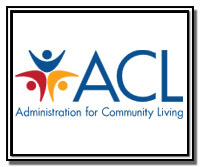
The Administration for Community Living (ACL) wants to hear your best thoughts and ideas for the future activities of the Elder Justice Coordinating Council (EJCC). The EJCC coordinates activities related to elder abuse, neglect, and exploitation across the federal government. They want to know what issues you think the EJCC should prioritize over the next two years.
You can submit comments electronically to ejcc@acl.hhs.gov with "Thoughts and Ideas" in the subject line through September 30, 2019.
What they are looking for:
Comments, thoughts, and ideas about activities or topics the EJCC could promote that would benefit the elder community. Examples of questions to address these concepts would include:
- How have the EJCC's past activities benefitted you or your affiliated programs?
- What activities, tools, resources, or components could most effectively advance elder justice at the state and local levels?
- How could the EJCC benefit the larger elder justice community?
- What is the best way to measure the EJCC's impact and effectiveness?
What they are not looking for:
Please do not use this mailbox to report suspicions of abuse, neglect, or exploitation. Any suspected abuse, neglect or financial exploitation should be reported to your state's Adult Protective Services. ACL is also not authorized to receive personally identifiable information beyond the contact information of the person submitting input. They will not review any comment that includes any other personally identifiable information such as names, addresses, phone numbers, or Social Security numbers.
You can read ACL's full public input invitation at https://acl.gov/about-acl/public-input.
Changes to California's Supplemental Nutrition Assistance Program (SNAP), Also Known As CalFresh
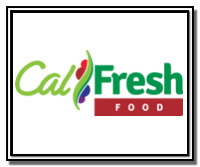
If your clients receive Supplemental Security Income (SSI) and live in California, they will soon be eligible to receive Supplemental Nutrition Assistance Program (SNAP) benefits, also known as CalFresh. California is currently the only state where SSI recipients are not eligible for SNAP benefits because a food assistance benefit was included in the State Supplementary Payment (SSP). The California Department of Social Services is ending the state's cash-out for SNAP benefits in the SSP. Beginning June 1, 2019, people receiving or authorized to receive SSI or the SSP will be eligible for CalFresh, provided all other eligibility criteria are met. Your client's SSP will not be reduced because of this law.
Starting June 1, 2019, Social Security staff will screen SSI applicants and recipients in California who live in all-SSI households for eligibility. These field office personnel will take their SNAP/CalFresh application.
If your clients are California residents in all-SSI households, receive or are applying for SSI, and need assistance with their SNAP/CalFresh application, have them contact their local Social Security office or call 1-800-772-1213 (TTY 1-800-325-0778). They can speak to a Social Security representative between 7 a.m. and 7 p.m. Monday through Friday.
Visit www.cdss.ca.gov/food-nutrition/calfresh to apply for CalFresh, or for more details about this change in the California state law.
Older Americans and Social Security

May is Older Americans Month and a perfect time to share Social Security information with your older clients. If they are ready for retirement benefits and/or Medicare, they can apply online at www.socialsecurity.gov/benefits/retirement. They can begin their application, return to a saved application they haven't finished yet, or check their application status.
Our benefits calculators are helpful tools for people considering retirement. Your clients can access them at www.socialsecurity.gov/benefits/calculators/.
At any stage in your client's career, they can also use our benefits planner to create a holistic plan for their golden years at www.socialsecurity.gov/benefits/retirement/planner/.
Asian American and Pacific Islander (AAPI) Heritage Month

During the month of May, we observe Asian American and Pacific Islander (AAPI) Heritage Month in the United States and celebrate the accomplishments of this community. Like our great nation, the AAPI community draws strength from family and the diversity of its distinct cultures — each with its own history and range of perspectives.
Social Security's programs serve as vital financial protection for millions of Americans, regardless of race and background. If your clients retire, become disabled, or die, their benefits may extend to help care for the immediate members of their family.
Our Benefits Planner website explains all the benefits Social Security has to offer your clients, their spouses, children, and other eligible members of their family at www.socialsecurity.gov/benefits/retirement/planner/. If your client is ready to retire, they can apply for benefits using our online application.
Our AAPI page also has a wealth of information at www.ssa.gov/people/aapi. Share it with your clients today.
Withholding Federal Income Tax from Your Social Security Benefits

Have you or your clients recently filed your taxes, or met with your tax professional and found that they owe taxes this year? Let your clients know that they can ask Social Security to withhold federal taxes from their monthly benefits at a rate of 7, 10, 12, or 22 percent. They will need to complete and sign IRS Form W-4V, available at www.irs.gov/forms-pubs. They can then mail it to their local Social Security office. Our Social Security office locator has the mailing addresses at www.socialsecurity.gov/locator.
At the beginning of the next calendar year, your clients will receive Form SSA-1099, which will show any voluntary federal income tax withheld. If they wish to change or even stop the amount withheld, they can sign a new form W-4V, and mail it to their local Social Security office. More information can be found at www.socialsecurity.gov/benefits/retirement/planner/taxwithold.html.
April 2019
We Celebrated National Social Security Month in April

In April, we highlighted some of the time-saving features of a my Social Security account. Once you create an account, you'll be able to access these features from the comfort of your home or office.
For over 80 years, Social Security has worked to meet the changing needs of the American public. Today, you can apply for retirement, disability, and Medicare benefits online, as well as take care of other business.
Knowledge is power. You care about your friends' and family's future, so encourage them to create a my Social Security account. Celebrate National Social Security Month by learning what you can do online anytime, anywhere at www.ssa.gov/mysocialsecurity.
2019 Trustees Report

On April 22, 2019, the Social Security Board of Trustees released its annual report on the current and projected financial status of the Old-Age and Survivors Insurance (OASI) and Disability Insurance (DI) Trust Funds.
The combined funds are projected to become depleted in 2035, one year later than projected last year, with 80 percent of benefits payable at that time. The DI Trust Fund is estimated to become depleted in 2052, extended 20 years from last year's estimate of 2032, with 91 percent of benefits still payable.
In the 2019 Report to Congress, the trustees also announced:
- The asset reserves of the combined OASI and DI Trust Funds increased by $3 billion in 2018 to a total of $2.895 trillion.
- The total annual cost of the program is projected to exceed total annual income, for the first time since 1982, in 2020 and remain higher throughout the 75-year projection period. As a result, asset reserves are expected to decline during 2020. Social Security's cost has exceeded its non-interest income since 2010.
- The projected actuarial deficit over the 75-year long-range period is 2.78 percent of taxable payroll – lower than the 2.84 percent projected in last year's report.
Social Security is with your clients through life's journey, helping them secure today and tomorrow. You can view the full 2019 Trustees Report at www.socialsecurity.gov/OACT/TR/2019/.
Understanding Social Security Benefits

Many of your clients may assume Social Security is just a retirement program. While it is true that most of the people receiving benefits are retired, others receive benefits because they're:
- Disabled;
- A spouse or child of someone getting benefits;
- A divorced spouse of someone getting or eligible for Social Security;
- A spouse or child of a worker who died;
- A divorced spouse of a worker who died; or
- A dependent parent of a worker who died.
When your clients need a clear understanding of Social Security, share this overview of all Social Security programs and Medicare: "Understanding the Benefits" www.socialsecurity.gov/pubs/EN-05-10024.pdf.
Social Security Covers Children with Disabilities

Caring for a child with a disability can put extra strain on a family. The Supplemental Security Income (SSI) program can help your clients who have a young child in need. People with low income and limited resources who are 65 or older, blind, or disabled can qualify for monthly SSI payments. Children, if younger than age 18, can qualify if they have a medical condition or combination of conditions that meets Social Security's definition of disability for children, and if their family's income and resources fall within the eligibility limits.
Save and share this publication: "Benefits For Children with Disabilities" www.socialsecurity.gov/pubs/EN-05-10026.pdf. It outlines disability benefits requirements.
Your clients can also learn more about our disability programs at www.socialsecurity.gov/disability.
Social Security is Now on Instagram

We strive to keep your clients informed with accurate and helpful information. Over the last decade, Social Security's communications strategy has evolved to include messages through our social media channels. You and your clients can share Social Security information, including links to our online tools, with a click of a button.
Our newest social media outlet, Instagram, is an online community of over one billion users sharing life's visual moments and video stories. From this channel, we will share stories and information about resources that can help you and your clients. Check out our new Instagram page at www.Instagram.com/SocialSecurity.
Connecting with us on social media helps your clients share important information and knowledge with the people they care about. Follow along and share our pages with clients, friends, and family today! See all of our social media channels at www.socialsecurity.gov/socialmedia.
New Arrival!

On May 10th, Social Security will release our top 10 baby names list for 2018. This popular list includes names for girls and boys. You and your clients can see which names are growing in popularity around the nation. This is a perfect opportunity for your clients to visit our baby names page at www.socialsecurity.gov/babynames and familiarize themselves with our resources for families.
Your clients can also learn more about our programs and services for families at www.socialsecurity.gov/people/parents.
March 2019
National Women's History Month

March is Women's History Month, a time to acknowledge the unique contributions women make to our society and economy. Nearly 60 percent of the people receiving Social Security benefits are women, and in the 21st century, more women work, pay Social Security taxes, and earn credit toward monthly retirement income than at any other time in our nation's history.
Encourage your clients to visit Social Security's financial planning website at www.socialsecurity.gov/benefits/retirement/planner/. It provides detailed information about how marriage, widowhood, divorce, self-employment, government service, and other life or career events can affect their Social Security benefits.
If your clients want more information about how Social Security supports women, share our booklet titled Social Security: What Every Woman Should Know. You can find it online at www.socialsecurity.gov/pubs/EN-05-10127.pdf.
March is National Professional Social Work Month

Some of your clients may be social workers or volunteers in their communities. They get fulfillment from helping others. Sometimes this is as simple as answering an email with vital information that could change a person's life for the better. Give these clients the Social Security tools they need to keep the people they serve informed about our online services at www.socialsecurity.gov/onlineservices.
A useful publication to share with parents and guidance counselors is What You Need to Know About Your Supplemental Security Income (SSI) When You Turn 18 at www.socialsecurity.gov/pubs/EN-05-11005.pdf.
You can also share Social Security's Red Book, a general reference source about the employment-related provisions of the Social Security Disability Insurance and the Supplemental Security Income programs for educators, advocates, rehabilitation professionals, and counselors who serve people with disabilities. You can find it at www.socialsecurity.gov/redbook.
Facebook Live – National Consumer Protection Week

National Consumer Protection Week was in March. Social Security used that opportunity to share information on how fraudsters pretend to be from Social Security, the IRS, or other government agencies so they can scam your clients. Fraudsters cause serious financial harm using this scam. We teamed up with the Federal Trade Commission (FTC) to provide you and your clients with information on how to identify and report these scams. Stay ahead of the fraudsters.
You can watch our Facebook Live event about fraud and share it at www.facebook.com/socialsecurity/videos/389979068460929/
Beware of People Pretending to be from Social Security

Unfortunately, identify theft and fraud are a part of our current reality. Social Security uses high levels of security to protect your client's identity from being stolen. A new phone scam tricks people into thinking we have called them, and then pressures them into giving out personal information. Social Security never does this. And your clients should never give their personal information to someone over the phone if they do not know who they are.
Here's what your clients need to know:
- Social Security representatives will never (ever) call and threaten you with loss of your benefits or deactivation of your Social Security number.
- Your caller ID might show the Social Security's real phone number (1-800-772-1213), but that may not be the real Social Security calling. Computers make it easy to show any number on caller ID. You can't always trust what you see there.
- Never give your Social Security number to anyone who contacts you. Don't confirm the last 4 digits. And don't give a bank account or credit card number — ever — to anybody who contacts you asking for it.
- Remember that anyone who tells you to wire money, pay with a gift card, or send cash is a scammer. Always. No matter who they say they are.
We encourage you to share our Social Security Phone Scam Alert video with your clients to quickly alert them to the dangers of this fraud and give them the tools they need to report it at www.youtube.com/watch?v=8N96ORODZm8.
They can also report fraud online to the Office of the Inspector General at oig.ssa.gov/report-fraud-waste-or-abuse/fraud-waste-and-abuse.
National Social Security Month

April is National Social Security Month and this year we're highlighting some of the time-saving features of the my Social Security account. Once you create an account, you'll see that we have a record of your earnings history and information to securely estimate what you could receive once you start collecting benefits. With your personal my Social Security account, you can also:
- Request a replacement Social Security card
- Set up or change direct deposit
- Get a proof of income letter
- Change your address, if you are getting benefits
- Check the status of your Social Security application
- Get a Social Security 1099 form (SSA-1099)
Encourage your clients to create a my Social Security account. Celebrate National Social Security Month by learning what you can do online anytime, anywhere at www.socialsecurity.gov/myaccount.
February 2019
Get Your Benefit Statement Online as Tax Day Approaches

The Benefit Statement, also known as the Social Security 1099 (SSA-1099) or 1042S (SSA-1042S), is a tax form mailed each year in January to people who receive Social Security benefits. Your clients can get a copy of their SSA-1099 or SSA-1042S Benefit Statement tax form right now with their personal my Social Security account at www.socialsecurity.gov/myaccount.
Your clients can also learn more about replacing tax documents by reading our publication "Replace Your Social Security Tax Documents with Ease" www.socialsecurity.gov/pubs/EN-05-10057.pdf.
Keep in mind, Social Security benefits may be taxable. Visit www.socialsecurity.gov/benefits/retirement/planner/taxes.html to learn more.
America Saves Week

America Saves Week 2019, taking place from Feb. 25 and continuing through March 2, is an opportunity to encourage employees to start saving through their workplace retirement plan as early as possible and, if they can, to increase savings each year — even if only by a small amount. Increasing their savings rate is a way for workers to pay themselves more during their retirement years.
Your clients can use our planners to help them better understand their Social Security protection as they plan for their financial future. Then they can use our benefit calculator to get estimates of benefits for which they and their family may be eligible. All of this is accessible at www.socialsecurity.gov/benefits/retirement/planner/.
Social Security Celebrates Black History Month

In February, we honor African Americans by celebrating Black History Month. Our programs protect the African American community just as they do all Americans who have worked hard and earned benefits that protect them and their families. We also want you and your clients to have information that's relevant to them. Your clients might find our People Like Me page helpful when planning for their future financial security: www.socialsecurity.gov/people/africanamericans.
Also let your clients know that they can get Social Security information easily and securely with our online services. They can check the status of their disability claim or appeal with secure access to their personal my Social Security account at www.socialsecurity.gov/myaccount.
Setting Up or Changing Direct Deposit

For more than 80 years, Social Security has changed to meet the evolving needs of your clients. Today, we offer many online services including setting up or changing direct deposit information. The best part is that your clients can use these services anytime, anywhere!
If your clients receive Social Security or Supplemental Security Income (SSI) benefits, they can create a my Social Security account to set up or change direct deposit information online.
When your clients choose direct deposit, we will electronically deposit their funds directly into a bank account. If they don't have a bank account, they can choose Direct Express®, and their funds will be electronically deposited into a prepaid debit card account. Direct Express® has no enrollment fee or minimum balance requirement to open or use the account.
Your clients can set up their direct deposit at www.socialsecurity.gov/myaccount.
Your Clients Can Get a W-4V Online

If you know a client who receives Social Security benefits, remember that they have the option of having federal income tax withheld from their benefits at the rate of 7, 10, 12, or 22 percent. Encourage them to sign and submit IRS Form W-4V directly to their local Social Security office.
This same form is used to stop withholding federal income tax from their benefits. Taxes will be paid directly to the Internal Revenue Service and will be shown on their form SSA-1099 the following tax season.
Your clients can find useful tax information, including the IRS Form W-4V, on our tax preparation page at www.socialsecurity.gov/thirdparty/atp.html.
January 2019
Medicare Advantage Open Enrollment

In 2019, changes to Medicare may improve the healthcare options and flexibility for beneficiaries. The Medicare Open Enrollment Period that was eliminated in 2010 is now being reinstated. Let your clients know that, from January 1 through March 31, Medicare Advantage enrollees can switch from one Medicare Advantage plan to another at www.Medicare.gov.
Your clients can also learn more about how Social Security and Medicare work together at www.socialsecurity.gov/benefits/medicare.
Receiving Medicare while Working

Even if your clients are not receiving their Social Security benefits at age 65, they can still get their full Medicare benefits (including premium-free Part A). Medicare is our country's health insurance program for people age 65 or older. Certain people younger than age 65 can qualify for Medicare, too, including those with disabilities and those who have permanent kidney failure.
Use our online application to sign up for Medicare. It takes about 10 minutes. In most cases, once your application is submitted electronically, you're done. There are no forms to sign and usually no documentation is required. Social Security will process your application and contact you if we need more information. Otherwise, you'll receive your Medicare card in the mail.
You and your clients can apply for Medicare at www.socialsecurity.gov/benefits/medicare/.
Get a Replacement SSA-1099 Tax Form

Tax season is fast approaching. Do your clients know how to get a copy of their SSA-1099? We have made getting a copy even easier. Now they can instantly print or save a replacement any time they want.
The Social Security Benefit Statement, also known as the SSA-1099 or the SSA-1042S, is a tax form Social Security mails each year in January to people who receive Social Security benefits. It shows the total amount of benefits they received from Social Security in the previous year so they know how much Social Security income to report to the IRS on their tax return. If your clients currently live in the United States and they need a replacement form SSA-1099 or SSA-1042S, simply go online and get an instant, printable copy of their form with a my Social Security account at www.socialsecurity.gov/myaccount.
Request a Replacement Social Security Card Online

Do your clients need to get a new Social Security number (SSN) card to replace a lost or stolen one? If they live in a qualifying state, our online application makes requesting a replacement card easier than ever. There's no need to sit in traffic or visit a local office or Card Center. As long as they're only requesting a replacement card, and no other changes, they can use our free online service from anywhere. All they need to do is create a free my Social Security account at www.socialsecurity.gov/myaccount .
Your client's identity and personal information matter to us. We protect their information by using strict identity verification and security features. The application process has built-in features to detect fraud and confirm their identity.
Share these Resources with Your Clients

In a new effort to promote Social Security, we have created optimized posts you can share online with your clients. This optimized language gets the most accurate results for online searches.
- From getting a replacement Social Security number (SSN) card to checking the status of your Social Security benefit claim, take control of your future with a my Social Security account at www.socialsecurity.gov/myaccount.
- If you already receive Social Security benefits (retirement, survivors, or disability) and want to know how to change your address and telephone number, you can create a my Social Security account to quickly access your contact information.
- If you currently live in the United States and you need a copy of your SSA-1099 or SSA-1042S tax form, simply go online and get an instant, printable copy of your form with a my Social Security account at www.socialsecurity.gov/myaccount.
- Take control of your future and see what you can do online with a my Social Security account at www.socialsecurity.gov/myaccount. From requesting a replacement Social Security number (SSN) card to checking the status of your Social Security benefit claim, a my Social Security account puts control at your fingertips.
- Checking the status of your Social Security benefits application or claim is easy with my Social Security at www.socialsecurity.gov/myaccount.
- Social Security offers online services with a my Social Security account, including instant access to your benefit verification letter, sometimes called a "benefits letter" or "proof of income letter": www.socialsecurity.gov/myaccount
- To request a replacement Social Security number (SSN) card or a SSA-1099 form, access your personal my Social Security account anytime, anywhere at www.socialsecurity.gov/myaccount.
The more you share this content, the easier it will be for your clients to find the vital services and information they need.
December 2018
National Disability Day
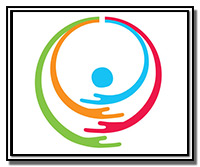
National Disability Day, observed on December 3, is a day to help everyone become more compassionate and understanding of the challenges faced by people with disabilities. For decades, Social Security has been at the forefront of helping people with disabilities, including wounded warriors and children.
Please share our online disability resources with your clients and encourage them to share them with friends and families.
- General information about disability benefits: www.socialsecurity.gov/disability
- How to apply for benefits: www.socialsecurity.gov/benefits/disability
- Frequently asked questions: www.socialsecurity.gov/faq; select the Disability (SSDI) or Supplemental Security Income (SSI) topics
Seasonal Work and Social Security

Each year, companies hire people for seasonal work and work-from-home positions. Such jobs include customer service, sales, tech support, call center representatives, healthcare support, and order taking/review. Seasonal positions may help bridge employment gaps on your resume. They show that you take initiative and that you are ready, willing, and able to succeed. They also can help you to develop new or strengthen existing skills through training.
If your clients receive Social Security or Supplemental Security Income (SSI) benefits based on disability or blindness, special rules make it possible for people to work and still receive monthly payments. If they want to try working again, seasonal work may help them ease back into the workforce. Have them read Working While Disabled at www.socialsecurity.gov/pubs/EN-05-10095.pdf or visit our Ticket to Work website at https://choosework.ssa.gov more information.
Commemorating World AIDS Day

Each year on December 1, we commemorate World AIDS Day. It is an opportunity to demonstrate our unity in the fight against HIV/AIDS. Social Security is there throughout life's journey. When disability strikes, we're there providing your clients with benefits, tools, and information to support them at their time of need.
If your clients have HIV/AIDS and cannot work, they may qualify for Social Security or SSI benefits, as long as they meet our disability requirements. We pay disability benefits to people who can't work because of a medical condition that's expected to last at least a year or end in death. Their medical condition must also be serious enough to prevent them from doing substantial gainful work.
Our publication Social Security for People Living with HIV/AIDS explains in detail how our benefits work, how to qualify, what they need to apply, and how our claims process works. Your clients can read it at www.socialsecurity.gov/pubs/EN-05-10019.pdf. (This publication is no longer available.)
The most important thing is, if your clients think they qualify for benefits, don't wait, have them apply today.
National Disability Forum — Enhancing the Reconsideration Process

We held our most recent National Disability Forum on November 28, 2018 at the Partnership for Public Service. The title for this forum was Enhancing the Reconsideration Process. There were 340 registrants, including the livestream attendees.
Acting Chief of Staff Bea Disman provided opening remarks. Grace Kim, Acting Assistant Deputy Commissioner for Operations, welcomed the participants. Darlynda Bogle, Executive Secretary in the Office of the Acting Commissioner of Social Security was the moderator. Kathryn Olson, Democratic Staff Director, House Committee on Ways and Means Subcommittee on Social Security provided additional remarks. There were several panelists:
- Phoebe Ball, Legislative Affairs Specialist, National Council on Disability
- Cheryl Bates-Harris, Senior Disability Advocacy Specialist, National Disability Rights Network
- Dr. Sharon Bland-Brady, President, National Association of Disability Examiners
- Lisa Ekman, Director of Government Affairs, National Organization of Social Security Claimants' Representatives
- Trudy Lyon-Hart, Policy/Quality Committee Chair and Board Member, National Council of Disability Determination Directors
- Christopher Mazzulli, Treasurer, National Association of Disability Representatives
To further support the exchange of ideas and opinions, an online engagement platform with pre-posted questions was available from November 29 to December 14. This platform, IdeaScale, allows users to post their answers or to add comments. You and your clients can learn more about Social Security's National Disability Forum at www.socialsecurity.gov/ndf.
Social Security Benefits to Increase in 2019

Each year we announce the annual cost-of-living adjustment (COLA). Usually, there is an increase in the benefit amount people will receive each month, starting the following January. By law, federal benefits increase when the cost of living rises, as measured by the Department of Labor's Consumer Price Index for Urban Wage Earners and Clerical Workers (CPI-W).
As a result, more than 67 million Americans will see a 2.8 percent increase in their Social Security and SSI benefits in 2019.
January 2019 marks other changes that will happen based on the increase in the national average wage index. For example, the maximum amount of earnings subject to Social Security payroll tax, as well as the retirement earnings test exempt amount, will change in 2019.
Earlier this month, we posted Social Security COLA notices online for retirement, survivors, and disability beneficiaries who have a my Social Security account. Your clients will be able to view and save these COLA notices via the Message Center inside their my Social Security accounts.
Encourage your clients to sign up to receive notifications of important information from us by creating or logging in to their personal my Social Security account today at www.socialsecurity.gov/myaccount. They can choose email or text under "Message Center Preferences" to receive courtesy notifications so they won't miss their electronic COLA notice next year.
This year, everyone still received their COLA notice by mail. In the future, they will be able to choose whether to receive their notice online instead of on paper. Online notices will not be available to representative payees, individuals with foreign mailing addresses, or those who pay higher Medicare premiums due to their income. We plan to expand the availability of COLA notices to additional online customers in the future.
More information about the 2019 COLA is available at www.socialsecurity.gov/cola.
Social Security Holiday Field Office Closings

Social Security's spirit of giving endures all year long, but we'd like to wish you Happy Holidays from our family to yours! If you plan to do business with us during the holiday season, we want you to know that our offices will be closed on Christmas Eve, December 24, Christmas Day, December 25, and New Year's Day, January 1, but our online services are available every day.
For a list of our secure and convenient online services, please visit www.socialsecurity.gov/onlineservices.
November 2018
An "A" Rating for Social Security – 2018 Federal Plain Language Report Card

Social Security received high scores again this year on the Plain Language Report Card — A+ for compliance and A for Writing quality — in a year that many agencies saw a decline in their scores. This year, the report card concentrated on two pages of the website: the www.socialsecurity.gov home page and the redesigned my Social Security page at www.socialsecurity.gov/myaccount.
Since 2012, the Center for Plain Language has graded federal agencies on compliance with the Plain Writing Act — the 2010 law that requires government writing to be clear, concise, and well organized.
You and your clients can learn more about our commitment to communicating clearly at www.socialsecurity.gov/plain-language.
Earning Social Security Credits with Military Service

In November, we honored military service members for their sacrifices to protect our freedoms. Social Security supports millions of people and families, including veterans and active duty members of the military. While your clients are in military service, let them know that they pay Social Security taxes, just as civilian employees do. In 2018, they pay a 6.2 percent Social Security tax on up to $128,400 of their earnings. Additionally, everyone pays a Medicare tax rate of 1.45 percent on all wages.
Earnings for active duty military service or active duty training have been covered under Social Security since 1957. You and your clients can read more about how Social Security helps military service members at www.socialsecurity.gov/pubs/EN-05-10017.pdf.
Request a New Social Security Card Online

We've all probably lost an important object sometime in our lives. Car keys, a check, our wallet… once in a while they disappear. That's why Social Security has made replacing your Social Security card even easier. If you or your clients have a driver's license or state-issued identification card from a participating state or the District of Columbia, our online application makes getting a replacement card easier than ever. There's no need to sit in traffic or visit a local office. You and your clients can check if your state participates at www.socialsecurity.gov/ssnumber.
As long as you're only requesting a replacement card, and no other changes, you can use our free online service from the comfort of your home or office. Let your clients know that they can start by creating or logging in to their personal my Social Security account at www.socialsecurity.gov/myaccount.
November is National Native American Heritage Month

In November, we celebrated National Native American Heritage Month, honoring the first people to call this land home. American Indians and Alaska Natives have fortified our country with their traditions and values, contributing to every aspect of our national life. Earlier this year, new legislation extended federal recognition to six additional American Indian Tribes. The formal recognition of these sovereign governments is a symbolic effort to restore self-governance and economic vitality to indigenous people.
On September 20, 2018, the Tribal Social Security Fairness Act of 2018 was signed into law. This new law allows federally recognized Indian tribes to obtain voluntary Social Security coverage for tribal council positions through an agreement with the Commissioner of Social Security under Section 218A of the Social Security Act.
The Social Security Administration is committed to enhancing the agency's relationships with tribal communities. You and your clients can learn more about how we serve American Indians and Alaska Natives at www.socialsecurity.gov/people/aian/.
Social Security Holiday Field Office Closings

Social Security's spirit of giving endures all year long, but we'd like to wish you happy holidays from our family to yours! If you need to do business with us during the holiday season, we want you to know that our offices will be closed on Christmas Day, December 25, and New Year's Day, January 1.
For a list of our secure and convenient online services, please visit www.socialsecurity.gov/onlineservices.
October 2018
Social Security Benefits to Increase in 2019

Each year we announce the annual cost-of-living adjustment (COLA). Usually, there is an increase in the benefit amount people will receive each month, starting the following January. By law, federal benefits increase when the cost of living rises, as measured by the Department of Labor's Consumer Price Index for Urban Wage Earners and Clerical Workers (CPI-W).
As a result, more than 67 million Americans will see a 2.8 percent increase in their Social Security and SSI benefits in 2019.
January 2019 marks other changes that will happen based on the increase in the national average wage index. For example, the maximum amount of earnings subject to Social Security payroll tax, as well as the retirement earnings test exempt amount, will change in 2019.
In December 2018, we will post Social Security COLA notices online for retirement, survivors, and disability beneficiaries who have a my Social Security account. Your clients will be able to view and save these COLA notices via the Message Center inside my Social Security.
Encourage your clients to be the first to know their new benefit amount by signing up for or logging in to their personal my Social Security account today at www.socialsecurity.gov/myaccount. They can choose email or text under "Message Center Preferences" to receive courtesy notifications so they won't miss their electronic COLA notice.
This year, your clients will still receive their COLA notice by mail. In the future, they will be able to choose whether to receive their notice online instead of on paper. Online notices will not be available to representative payees, individuals with foreign mailing addresses, or those who pay higher Medicare premiums due to their income. We plan to expand the availability of COLA notices to additional online customers in the future.
More information about the 2019 COLA is available at www.socialsecurity.gov/cola.
New Enhancement to the Online Benefits Application

We're constantly improving how we protect and secure the information your clients entrust to us. We've added a new step and a new level of security to the online benefits application process. Effective September 29, 2018, your clients who wish to file a claim online will be asked to create or log in to their personal my Social Security account. If we cannot process that request, we will provide specific information on how to contact us by phone or schedule an office appointment to complete the claims process.
Once they log in, they can begin their application. The online benefits application gives your clients the freedom and convenience to file for various types of benefits, including Retirement, Disability, Supplemental Security Income, and Medicare.
Our constant commitment is to secure the services we provide to you and your clients. Applying for benefits online is safer, easier, and more secure than ever!
You and your clients can learn more about the online benefits application at www.socialsecurity.gov/hlp/video/iclaim_r01.htm for Retirement/Spouse's/Medicare and www.socialsecurity.gov/hlp/video/iclaim_d01.htm for Disability.
Social Security Testifies Before Congress

On September 27, Rajive Mathur, Deputy Commissioner for Systems, testified before a Congressional committee on efforts to modernize information technology (IT) at the Social Security Administration. In his testimony, he said:
"The scope of our programs is immense, and information technology is vital to nearly every aspect of the work we do to serve the public. IT allows our field office employees to collect pertinent information and perform complex benefit calculations; it provides for electronic storage and retrieval of medical records and other information; it protects the sensitive personal, benefits, and earnings information that we maintain; and it helps identify and prevent fraud and improper payments in our programs and across government."
Social Security tirelessly protects your information. You and your clients can read the transcript in its entirety at www.socialsecurity.gov/legislation/congressionaltestimony.html.
Stay Connected and Share Social Security

Your clients probably use social media and the internet every day. Let them know that Social Security Matters, our blog, isn't just a wealth of information, it's a resource they can share with family and friends. You and your clients can access vital program and benefit information at blog.socialsecurity.gov.
Our Facebook and YouTube pages are also easy to share with people who need quick information about Social Security benefits. You can visit each of these resources at www.facebook.com/socialsecurity and www.youtube.com/socialsecurity.
Social Security National Disability Forum

Social Security will hold a National Disability Forum on November 28, 2018, at the Partnership for Public Service in Washington, D.C. from 1:00 p.m. to 4:00 p.m. The topic will be "Enhancing the Reconsideration Process." Participants will discuss potential areas of improvement in the claims process — especially at the reconsideration step.
Medicare Open Enrollment

Enrollment is open for Medicare now through December 7, 2018. This is an annual period when people can sign up for new Medicare health and drug plans to suit their changing needs.
Medicare is our country's health insurance program for people age 65 or older. Certain people younger than age 65 can qualify for Medicare, too, including certain people with disabilities and those who have permanent kidney failure.
Inform your clients that they can pick a new plan or change their existing one at www.medicare.gov.
September 2018
Online Cost-of-Living Adjustment Notices with a my Social Security account

Social Security is constantly expanding our online services to give you and your clients freedom and control when doing business with us. Our latest online service offering, the online cost-of-living adjustment (COLA) notice, is another example of our commitment.
As part of our IT Modernization efforts, we will make the Social Security COLA notices available online in December 2018 to certain beneficiaries with a my Social Security account. Online notices will not be available to representative payees, individuals with foreign mailing addresses, or those who pay higher Medicare premiums due to income. Next year, we will focus on making COLA notices available online to additional customers.
This year, individuals will still receive COLA notices by mail. In the future, they will be able to choose whether they receive their notice online instead of on paper.
Messages about the Social Security COLA notice will be sent to the beneficiary's my Social Security Message Center Inbox in early December 2018. They will contain a link to a 508-compliant PDF of the COLA notice.
Remember, our services are always free of charge. No government agency or reputable company will solicit your personal information by email or request advanced fees for services in the form of wire transfers or gift cards. Avoid falling victim to fraudulent internet "phishing" schemes by not revealing personal information, selecting malicious links, or opening malicious attachments. You can learn more about the ways we protect your investment, personal information, and my Social Security account at www.socialsecurity.gov/myaccount/security.html.
You and your clients can open a my Social Security account today or log in to your my Social Security account and choose your preferred way to receive courtesy notifications at www.socialsecurity.gov/myaccount.
Social Security Publications: A Wealth of Information

Do you remember the last time you stepped into a library? No matter when the last time was, that feeling you get when presented with so much potential information leaves an impression. Although accessing information online isn't as physical as standing in front of a bookshelf, Social Security gives you and your clients the same access to potential information.
We have more than 100 publications about retirement, disability, wounded warriors, online services, and more. You can click, save, and share "bookshelves" full of information created by our program experts at www.socialsecurity.gov/pubs. Let your clients know that they can find nearly every answer they may need in our online publications.
Back to School… Back to Your Future

Many of your clients have children or teens going back to school or even to college. We care greatly about the next generation as we pass our resources on to them. There's no better time to share our educator's toolkit with people who educate students about retirement and saving for their future.
On our Educators webpage, you and your clients can find a toolkit of information and resources designed to develop engaging and informative lessons on Social Security and the importance of planning for the future. It includes lesson plans, infographics, talking points, quiz questions and answers, and links to other resources with additional information.
Encourage your clients to check out the resources we have at www.socialsecurity.gov/thirdparty/educators.html.
National Childhood Cancer Awareness Month

September is National Childhood Cancer Awareness Month. Although this is a special time to acknowledge children who are suffering from these diseases, Social Security helps children all year long through our Compassionate Allowances program.
Compassionate Allowances are a way to quickly identify diseases and other medical conditions that, by definition, meet Social Security's standards for disability benefits. These conditions primarily include certain cancers, adult brain disorders, and a number of rare disorders that affect children.
The Compassionate Allowances program identifies claims where the applicant's disease or condition clearly meets Social Security's statutory standard for disability. By incorporating cutting-edge technology, the agency can identify people who may qualify for Compassionate Allowances to quickly make decisions on their cases. The Social Security Administration uses the same rules to evaluate Compassionate Allowance conditions when evaluating both Social Security Disability Insurance (SSDI) or Supplemental Security Income (SSI) programs.
You and your clients can read the entire Compassionate Allowances list as well as get more information at www.socialsecurity.gov/compassionateallowances.
Understanding Survivors Benefits

As your clients age, they will likely be interested in how the death of a spouse affects their benefits. The loss of a family wage earner can be devastating both emotionally and financially. Social Security helps by providing income for the families of workers who die.
How much a family can get from Social Security depends on the worker's average lifetime earnings. The more the worker earned, the more their family's benefits will be.
Encourage your clients to apply for survivors benefits promptly because, for some claims, we'll pay benefits from the time of application, not from the time the worker died. You and your clients can read more about survivors benefits at www.socialsecurity.gov/pubs/EN-05-10084.pdf.
Social Security's National Disability Forum

Social Security will hold a National Disability Forum on October 30, 2018, at the Partnership for Public Service* in Washington, D.C. The topic will be "Advance Designation of Representative Payees."
The morning session of the forum will have panelists discussing how advance designation can improve future financial management. The afternoon session will feature panelists sharing how to leverage advance designation to improve the Representative Payee selection process.
You and your clients can check for additional information on the forum as it becomes available at www.socialsecurity.gov/thirdparty/whatsnew.html .
*Updated on 10/18/2018 to reflect a change in venue.
August 2018
Social Security Expands Compassionate Allowance List

In August, Nancy A. Berryhill, Acting Commissioner of Social Security, announced five new Compassionate Allowance conditions: Fibrolamellar Cancer, Megacystis Microcolon Intestinal Hypoperistalsis Syndrome (MMIHS), Megalencephaly Capillary Malformation Syndrome (MCAP), Superficial Siderosis of the Central Nervous System, and Tetrasomy 18p. The Compassionate Allowance program quickly identifies medical conditions and serious diseases that meet Social Security's standards for disability benefits.
"For nearly a decade, the Compassionate Allowance list has helped us identify and fast-track cases where individuals have diseases that are most likely to be approved for disability benefits," said Acting Commissioner Berryhill. "Social Security is committed to ensuring Americans with qualifying disabilities quickly receive the benefits they need."
For more information about the program, including a list of all Compassionate Allowances conditions, please direct your clients to www.socialsecurity.gov/compassionateallowances.
Social Security's 10th National Disability Forum

Social Security held its 10th National Disability Forum on August 22, 2018. This forum, "Acquiring and Using Electronic Medical Records," focused on best practices associated with the acquisition and use of medical records, common challenges with those records, and the future of electronic health information.
This was also the first time Social Security used live streaming services, with sign language interpreters on screen, to broadcast the event. Panelists shared their expertise and recommendations.
The panelists were:
- Kevin Liebkemann, chief counsel, Legal Services of New Jersey;
- Andrew Gettinger, chief clinical officer, Office of the National Coordinator for Health Information Technology;
- Mariann Yeager, CEO, The Sequoia Project;
- Dr. William Gray-Roncal, senior research engineer, Johns Hopkins Applied Physics Laboratory;
- John Mattison, M.D., chief medical information officer and assistant medical director, Kaiser Permanente;
- Brian Jones, D.O., managing director, Guidehouse, LLP; and
- Hans Buitendijk, director, interoperability strategy, Cerner.
You and your clients can read more about the disability forum at www.socialsecurity.gov/ndf/.
You can also learn more about Social Security disability programs at www.socialsecurity.gov/disability.
Social Security's Shield—Strengthening Our Commitment

The Inspector General Act of 1978 ensures integrity and accountability in the Executive Branch. Let your clients know that Social Security uses a variety of proven techniques to identify suspected fraud, waste, or abuse.
The Social Security Administration's Office of the Inspector General (OIG) has the following responsibilities:
- Promote economy, efficiency, and effectiveness in the administration of SSA programs.
- Prevent and detect fraud, waste, and abuse in SSA programs and operations.
- Inform the SSA and Congress about problems and deficiencies and recommend corrective action.
Fraud represents a very small percentage of our overall payments. Even so, we continue to pursue anti-fraud initiatives, because we believe any level of fraud is unacceptable.
The OIG is an important part of that commitment. The OIG works closely with our frontline employees to identify fraud, root out offenders, and bring them to justice. Offenses can include (but are not limited to):
- Making false statements on claims;
- Concealing facts or events which affect eligibility for Social Security benefits;
- Misuse of benefits by a representative payee; and
- Buying or selling counterfeit or legitimate Social Security cards.
These types of abuses weaken the system for all of us. If you or your clients suspect fraud, waste, or abuse, report it to the OIG. You or your clients can make a report online at https://oig.ssa.gov/report. You can also call the OIG Fraud Hotline at 1-800-269-0271, or the TTY number at 1-866-501-2101 if you're deaf or hard of hearing, from 10 a.m. to 4 p.m. Eastern Time, Monday through Friday.
You and your clients can read more about the OIG at https://oig.ssa.gov.
Social Security is Here When You Need It Most

Disability benefits offer a financial lifeline when people are struck by a serious medical condition that makes it impossible for them to work and provide for themselves and their family. Benefits are for medical conditions that are expected to last at least one year or result in death. The Social Security and Supplemental Security Income (SSI) disability programs are the largest of the federal programs that provide assistance to people with disabilities. Our friends, family members, and neighbors, including wounded warriors and the chronically ill, rely on these vital programs:
- Social Security Disability Insurance pays benefits to you and certain members of your family if you are "insured," meaning that you worked long enough and paid Social Security taxes.
- Supplemental Security Income makes payments to people who have low income and few resources, and who are age 65 and older, blind, or disabled.
Your clients can learn more about Social Security disability benefits at www.socialsecurity.gov/disability and SSI at www.socialsecurity.gov/ssi.
Need to Change Your Name on Your Social Security Card?

If someone legally changes their name, they need to tell Social Security so we can send an updated card. Changes to your name cannot be completed online with Social Security.
To change your name on your card, you must show us documents proving your legal name change and identity. You also must show us a document proving your U.S. citizenship, if it is not already in our records. You must present original documents or copies certified by the agency that issued them. We can't accept photocopies or notarized copies. You can find out which documents you must show to change your name at www.socialsecurity.gov/pubs/EN-05-10513.pdf.
For complete instructions, you and your clients can visit www.socialsecurity.gov/ssnumber.
You can also locate your local field office at www.socialsecurity.gov/locator.
July 2018
Strengthening Protections for Social Security Beneficiaries

On April 13, 2018, The Strengthening the Protections for Social Security Beneficiaries Act of 2018 was signed into law.
Section 101 strengthens oversight of representative payees by requiring additional types of on-site reviews, improving the effectiveness of the reviews, and providing for an increased number of reviews. The law directs Social Security to work with state Protection & Advocacy (P&A) organizations to conduct all periodic onsite reviews and additional discretionary reviews. The P&As will also conduct educational visits and reviews based on allegations they receive of payee misconduct.
Section 102 reduces the burden on families of Social Security beneficiaries and Supplemental Security Income recipients. Social Security will exempt the following representative payees from the annual requirement to account for the use of benefit payments:
- Natural or adoptive parents of a minor child beneficiary or recipient who primarily reside in the same household as the child;
- Legal guardians of a minor child beneficiary or recipient who primarily reside in the same household as the child;
- Natural or adoptive parents of a disabled adult beneficiary who primarily reside in the same household as the beneficiary; and
- Spouse of a beneficiary or recipient.
All representative payees are still required to keep records of how they spend or save the benefit payments. They must provide these records to Social Security for review if requested.
For more information, you and your clients can go to www.socialsecurity.gov/payee.
Request an Appeals Council Review Online

If your client was recently denied Social Security benefits or Supplemental Security Income payments, they can request an appeal. Now, claimants requesting review at the Appeals Council level and their appointed representatives have an additional option to submit their request online.
The online appeals application is simple, convenient, and secure; it guides your clients and their appointed representatives through every step of the process, including any necessary documentation. The Appeals Council looks at all requests for review, but it may deny a request if it believes the hearing decision was supported and in accordance with Social Security law and regulations.
This new service is part of our commitment to delivering excellent service and providing claimants with more options to conduct their business. You can learn more about how your clients can request an Appeals Council review at www.socialsecurity.gov/benefits/disability/appeal.html.
Social Security's National Disability Forum

Social Security's National Disability Forum, Acquiring and Using Electronic Medical Records, is on August 22 from 1:00 p.m. to 3:30 p.m. in Washington, D.C. The Disability Forum gives stakeholders an opportunity to share their unique insights on topics of particular interest to Social Security early in the rulemaking process and directly with policymakers.
The forum will serve as a listening session that brings public awareness to disability policy. Through this dialogue, we will obtain feedback on best practices for the acquisition and use of medical records, common challenges associated with those records, and the future of electronic health information.
You and your clients can learn more at www.socialsecurity.gov/thirdparty/whatsnew.html.
Wage Reporting Accuracy

For over 80 years, Social Security has been committed to maintaining the accuracy of earnings records used to determine benefit amounts. We rely on employers and workers for much of this vital information. Social Security records workers' earnings to ensure people get the benefits they have earned.
Employers are responsible for providing accurate earnings information for their employees. There are a number of reasons why reported names and Social Security numbers (SSNs) may not agree with our records, such as typographical errors, unreported name changes, inaccurate or incomplete employer records, or misuse of an SSN. Businesses and employers can sign up for our Business Services Online (BSO) at www.socialsecurity.gov/bso to verify that employee records are correct and resolve any name and SSN mismatch issues. Our free tool, the Social Security Number Verification Service (SSNVS), allows employers to verify that their employees' information matches Social Security's records.
You can also encourage your employees and clients to check their lifetime earnings record to verify that it's complete and correct. They can create or log in to their personal my Social Security account at www.socialsecurity.gov/myaccount and review their online Social Security Statement to verify their earnings. Your clients should notify Social Security if there is a discrepancy in their earnings record or if earnings are missing. Errors can affect their entitlement to benefits and future benefit amount.
Social Security is committed to providing the right benefits to the right person. With your help, we can ensure everyone receives the correct amount.
Medicare, Explained

Medicare is our country's health insurance program for people age 65 or older. The program helps with the cost of health care, but it doesn't cover all medical expenses or the cost of most long-term care. You have choices for how you get Medicare coverage. If you choose to have original Medicare coverage, you can buy a Medicare supplement policy (called Medigap) from a private insurance company to cover some of the costs that Medicare does not.
Medicare has four parts:
- Medicare Part A (hospital insurance) helps pay for inpatient care in a hospital or skilled nursing facility (following a hospital stay). Part A also pays for some home health care and hospice care.
- Medicare Part B (medical insurance) helps pay for services from doctors and other health care providers, outpatient care, home health care, durable medical equipment, and some preventive services.
- Medicare Part C (Medicare Advantage) includes all benefits and services covered under Part A and Part B. Some plans include Medicare prescription drug coverage (Medicare Part D) and other extra benefits and services.
- Medicare Part D (Medicare prescription drug coverage) helps cover the cost of prescription drugs. Some people with limited resources and income may also be able to get Extra Help with the costs—monthly premiums, annual deductibles, and prescription co-payments—related to a Medicare prescription drug plan. The Extra Help is estimated to be worth about $4,900 per year. You must meet the resources and income requirement.
Medicare's different parts are further explained in our publication at www.socialsecurity.gov/pubs/EN-05-10043.pdf.
You and your clients can learn more about Medicare, including how to apply for Medicare and get a replacement Medicare card, at www.socialsecurity.gov/benefits/medicare.
Celebrate Your Independence, Control your Future

As the country celebrated its independence this year, people were accessing their my Social Security accounts and taking control of their future. Knowing you have access to vital programs and information helps you create security for yourself and your family.
We regularly update my Social Security with new features to make your life easier. The site now accepts wage reports electronically from Supplemental Security Income (SSI) recipients and deemors, concurrent beneficiaries, and representative payees. This capability had been available only to Social Security Disability Insurance (SSDI) beneficiaries and their representative payees.
There are also a growing number of states (and the District of Columbia) where, if you have a driver's license or state-issued identification card, you can request a replacement Social Security card online. Go to www.socialsecurity.gov/myaccount to create or access your account now.
June 2018
2018 Trustees Report

On June 5, the Social Security Board of Trustees released its annual report on the current and projected financial status of the Old-Age and Survivors Insurance (OASI) and Disability Insurance (DI) Trust Funds.
The combined funds are projected to become depleted in 2034, the same as last year. After that time, the income from taxes will be sufficient to pay 79 percent of scheduled benefits. The DI Trust Fund will become depleted in 2032, extended from last year's estimate of 2028, with 96 percent of benefits still payable.
In the 2018 Report to Congress, the trustees also announced:
- The asset reserves of the combined OASDI Trust Funds increased by $44 billion in 2017 to a total of $2.89 trillion.
- The total annual cost of the program is projected to exceed total annual income in 2018 for the first time since 1982, and remain higher throughout the 75-year projection period. As a result, asset reserves are expected to decline during 2018. Social Security's cost has exceeded its non-interest income since 2010.
- The projected actuarial deficit over the 75-year long-range period is 2.84 percent of taxable payroll—slightly larger than the 2.83 percent projected in last year's report.
Social Security is with your clients through life's journey, helping them secure today and tomorrow. The longevity of our programs relies on the accurate, up-to-date data provided in these yearly reports. You can view the full 2018 Trustees Report at www.socialsecurity.gov/OACT/TR/2018/.
New Way to do SSI Wage Reporting With Social Security

Social Security has expanded its online wage reporting service to allow people who receive Supplemental Security Income (SSI) benefits, deemors, and people who receive both Social Security Disability (SSDI) and SSI benefits, and their representative payees to report wages securely online. This capability had been available only to SSDI beneficiaries and their representative payees. The service is available through our existing my Social Security portal.
Wage reporters can still use the SSI Telephone Wage Reporting and SSI Mobile Wage Reporting applications. This new option allows them to avoid visiting a field office to report their wages in person and allows them to print or save a receipt of their report. However, users must still contact an office to report when they first start working for each new employer. It's also important to note that representative payees are able to report wages, but won't have access to beneficiaries' or recipient's other information.
You and your clients can visit www.socialsecurity.gov today to learn more about this convenient new online service.
Withholding Federal Income Tax from Your Social Security Benefits

Have you or your clients recently filed your taxes, or met with your tax professional and been given the news that you need to send the IRS a large payment? Let your clients know that they can ask Social Security to withhold federal taxes from their monthly benefits at a rate of 7, 10, 12, or 22 percent. They will need to complete and sign IRS Form W-4V, available at www.irs.gov/forms-pubs. They can then mail it to their local Social Security office. Our Social Security office locator can be accessed at www.socialsecurity.gov/locator.
At the beginning of the next calendar year, your clients will receive Form SSA-1099, which will show any Voluntary Federal Income Tax withheld. If they wish to change or even stop the amount withheld, they can sign a new form W-4V, and mail it to their local Social Security office. More information can be found at www.socialsecurity.gov/benefits/retirement/planner/taxwithold.html.
Facebook Live Event - World Elder Abuse Awareness

In an effort to increase awareness of threats to seniors and to help people identify and prevent cases of elder abuse, the International Network for the Prevention of Elder Abuse launched the first World Elder Abuse Awareness Day in 2006. In 2011, the United Nations officially designated June 15 for this important public awareness event.
To recognize World Elder Abuse Awareness Day, the Social Security Administration hosted a Facebook Live broadcast on Wednesday, June 13, at 7 p.m. ET to discuss the detection and prevention of elder abuse. Jennifer Walker of Social Security's Office of the Inspector General (OIG) discussed how the OIG detects and prevents cases of suspected elder abuse and financial exploitation, and she explained how people can identify and report suspected elder abuse, as well as how people can protect themselves or seniors they know from mistreatment.
You and your clients can view the Facebook live event video at www.facebook.com/socialsecurity/videos/10156690034970288/.
If you suspect elder abuse, call 911 for an emergency. In a non-emergency situation, use the Eldercare Locator by calling 800-677-1116 to find your local reporting agency.
Keep Healthy Financial Habits with my Social Security

This year, we observed Men's Health Week from June 11 to 17. It so happens that Father's Day falls on the last day of Men's Health Week, a perfect time to focus on awareness, prevention, education, and family. Social Security encourages you to support fathers and friends everywhere in their efforts to stay healthy.
Part of staying healthy and happy is reducing the amount of stress in your life. That's where opening a my Social Security online account can help. Our online services make doing business with us fast and easy. With a my Social Security account, you can:
- Keep track of your earnings and verify them every year;
- Get an estimate of your future benefits, if you are still working;
- Get a letter with proof of your benefits, if you currently receive them; and
- Manage your benefits. For example, you can:
- Change your address;
- Change your direct deposit;
- Request a replacement Medicare card; and
- Get a replacement SSA-1099 or SSA-1042S for tax season.
Tell Dad to check out the healthy number of features we have to offer at www.socialsecurity.gov/myaccount.
May 2018
Top Ten Baby Names Are Here!

Social Security is with you from day one when you get a Social Security number in those first few days of life. That makes us the source for the most popular baby names! We're able to determine the most popular baby names from the prior year based on requests for Social Security numbers for newborns.
What were the most popular names of 2017?
Coming in at number 10 are Jacob and Abigail, dropping lower on the list as compared to 2016's list. At number nine, Oliver and Evelyn, both of which finally broke into the top 10 after coming close last year, the latter for the first time since 1915! In fact, there are several names celebrating their first introduction to the list; you can see the rest of the top 10 on our baby names page!
Most parents apply for their child's Social Security number at birth, usually through the hospital. They'll need their number throughout many important stages in their life, beginning when their parent claims them on their tax return. It'll also be useful if they need to apply for benefits for the child.
Baby Names creates lots of first-time visitors to SocialSecurity.gov. Once there, we hope those visitors will create a my Social Security account and find out all the other things they can do online!
Social Security is with your clients and their children throughout life's journey. To learn more about baby names, a newborn's Social Security number, benefits for children, and to see the full list of top names, visit www.socialsecurity.gov/babynames.
A New Way to Report Tax Identity Theft

Tax-related identity theft happens when someone steals your Social Security number and other personal information, files a tax return, and claims your refund. You might find out about it when you try to e-file — and learn that someone already submitted a return — or when the Internal Revenue Service (IRS) sends you a letter saying it received a suspicious tax return with your Social Security number.
A new service from the Federal Trade Commission and IRS allows people to report tax-related identity theft to the IRS online and get help making an identity theft recovery plan. Inform your clients that they can protect themselves and find out what steps to take if they are a victim by pointing them to IdentityTheft.gov.
Social Security Benefits Older Americans

May was Older Americans Month — a time to support and celebrate our aging loved ones, friends, and neighbors. Social Security has been helping older Americans for over 80 years, primarily with retirement benefits.
If you or your clients have contributed enough to the Social Security system through payroll taxes, you can receive your full retirement benefit at age 66 or 67 depending on when you were born. You may also claim it sooner, starting at age 62, at a permanently reduced rate. Or you may wait until after your full retirement age, increasing your benefit amount by up to eight percent per full year until age 70. No matter when you or your clients decide to retire, having a plan in place is essential.
Social Security is here to help prepare people and families for a financially secure future. Invite your clients to use the planners available at www.socialsecurity.gov/benefits/retirement/planner/.
Social Security's First Spanish Language Facebook Live Event

Last month, Social Security hosted its first Facebook Live event in Spanish. Titled "Get to Know Your Social Security Benefits," this live chat took place on Tuesday, April 10, 2018 at 7 p.m. ET. During the broadcast, Social Security employees discussed the Social Security program and explained the "Five Steps Toward Your Financial Security".
You and your clients can view our Spanish Facebook page at www.facebook.com/pg/segurosocial.
We also archive our Facebook Live events at www.youtube.com/socialsecurity.
Social Security Testifies Before Congress

Acting Commissioner Nancy A. Berryhill testified before the House Ways and Means Subcommittee on Social Security on May 17. Speaking on the topic Securing Americans' Identities: The Future of the Social Security Number, she said the following:
"While not intended, the SSN has become the personal identifier most broadly used by both government and the private sector to establish and maintain information about individuals. Before the widespread use of the SSN outside of Social Security programs (for purposes such as establishing credit), there were few incentives to obtain fraudulent SSNs or counterfeit cards. However, as the use of the SSN expanded, so too did incentives to obtain fraudulent SSNs, giving rise to concerns about the integrity of the number and card. Working with Congress, we have made changes to protect the integrity of the number. These efforts focus on increasing the security of the SSN and card, confirming the authenticity of the SSN and card through SSN verifications, and educating the public."
You and your clients can read the entire testimony at www.socialsecurity.gov/legislation/testimony_051718.html.
Securing Today and Tomorrow for All

Social Security takes pride in supporting people from all backgrounds. In May, we celebrate Asian American and Pacific Islander (AAPI) Heritage Month in the United States. Asian Americans and Pacific Islanders are one of the fastest-growing ethnic groups in America, including one of the fastest-growing populations of older adults.
Our website has many resources for the AAPI community. There you will find out why Social Security is especially important to AAPIs and their families. Visit our website and learn about the various ways in which we help the AAPI community secure today and tomorrow. You and your clients can view our website for Asian Americans and Pacific Islanders at www.socialsecurity.gov/people/aapi.
April 2018
Get Ready for Social Security's Top 10 Baby Names

Next month, Social Security will release our top 10 baby names list for 2017. This popular list includes the names of both girls and boys; you and your clients can see which names are growing in popularity around the nation. This is a perfect opportunity for your clients to visit our baby names page at www.socialsecurity.gov/oact/babynames and also familiarize themselves with our resources for families.
In 2017, we distributed an average of $2.6 billion each month to benefit about 4.2 million children because one or both of their parents are disabled, retired, or deceased. Those dollars help to provide the necessities of life for family members and help make it possible for those children to complete high school. When a parent becomes disabled or dies, Social Security benefits help stabilize the family's financial future.
Your clients can learn more about our programs and services for families at www.socialsecurity.gov/people/kids.
Keep Informed with Facebook Live

April was a busy month for Social Security's Facebook feed. Let your clients know they can learn about our programs by watching our Facebook Live events. These video presentations have a conversational tone that may be more appealing to some viewers.
You can restream all of our April programs on YouTube:
- Tuesday, April 3 – Kickoff National Social Security Month Facebook Live
- Tuesday, April 10 – Spanish Facebook Live (with Diana Varela)
- Wednesday, April 18 – National Social Security Month Facebook Live (with BJ Jarrett)
- Tuesday, April 24 – Save Smarter for Retirement
Social Security hosts Facebook Live events each month with special guests and subject matter experts. Your clients can watch our videos at www.facebook.com/SocialSecurity or www.youtube.com/SocialSecurity under the "Social Security Live!" playlist.
New States Added! Replace Your Lost or Stolen Social Security Card Online

Montana, Colorado, Wyoming, and New York have been added to the online Social Security card replacement option. If your clients live in one of the 28 qualifying states or the District of Columbia, they can log in to their personal my Social Security account and easily replace their card.
Losing an important document, like a Social Security card, can sometimes be a hassle. But it doesn't have to be. The number of states that allow for online replacement is growing. Keep in mind that, in many cases, even if someone has lost their card they may not need a replacement. In most cases, simply knowing their Social Security number is enough. But if they do need a replacement, we make it easy.
Tell your clients to visit www.socialsecurity.gov/myaccount.
Thank You for a Successful National Social Security Month

In April, we celebrated National Social Security Month. We want to thank you for encouraging your clients to take control of their future by seeing what they can do online.
For over 80 years, Social Security has changed to meet the needs of our customers. Today, you can apply for retirement, disability, and Medicare benefits online; find answers to over 200 of your most frequently asked questions; and much more.
Although National Social Security Month has passed, it's important for your clients to be kept informed all year long. Help us keep the momentum going by continuing to share information about our online services that give your clients secure access to their information anytime, anywhere. Your clients can use their my Social Security account to verify their earnings, see an estimate of their future benefits while still working, or manage their monthly benefits once they begin receiving payments. They can access my Social Security at www.socialsecurity.gov/myaccount.
Social Security puts control at your client's fingertips. Encourage them to explore our wide array of online services at www.socialsecurity.gov/onlineservices.
Get Your Social Security Benefit Verification Letter Online

If your clients need proof they get Social Security benefits, Supplemental Security (SSI) Income, or Medicare, they can get a benefit verification letter online by using their personal my Social Security account. This letter is sometimes called a "budget letter," "benefits letter," "proof of income letter," or "proof of award letter." Organizations may request this letter from your client if they apply for state or local benefits, a mortgage, assisted housing, or a loan.
Your clients can also get proof that they have never received Social Security benefits or Supplemental Security Income, or proof that they have applied for benefits.
To get any of these kinds of benefit verification letters, visit www.socialsecurity.gov/myaccount.
If clients can't or don't want to use their online account, or they need a letter for a dependent, they can call us at 1-800-772-1213 (TTY 1-800-325-0778), Monday through Friday from 7 a.m. to 7 p.m.
March 2018
Social Security's National Disability Forum in April

Social Security's National Disability Forum is April 18 at 1100 New York Avenue in Washington D.C. The Disability Forum gives all interested stakeholders an opportunity to share their unique insights on topics of particular interest to Social Security. This allows an exchange of ideas early in the process and directly with policy makers.
With the theme of Financial Independence: Directing the Management of One's Social Security Benefits, the forum will serve as a listening session that brings public awareness to disability and retirement policy stakeholders. Through this dialogue, we will gain insight into how our representative payee policy affects the disability and retirement communities we currently serve and the potential affect it may have in the future.
You and your clients can learn more at www.socialsecurity.gov/thirdparty/whatsnew.html.
Next Month is National Social Security Month

April is National Social Security Month and is dedicated to educating you and your clients about Social Security programs and services.
During National Social Security Month, we encourage people to take control of their financial future with my Social Security at www.socialsecurity.gov/myaccount. Create a my Social Security account to check your earnings history, confirm you have enough credits to retire, see an estimate of future benefits while still working, or manage your monthly benefits once you begin receiving them. You can also check the status of your claim or appeal, request a replacement Social Security card in many areas, and get an instant benefit verification letter.
Encourage your clients to create a my Social Security account today.
Social Security Celebrates National Women's History Month

In the 21st century, more women work, pay Social Security taxes, and earn credits toward monthly retirement income than at any other time in our nation's history.
Women face greater economic challenges in retirement. First, women tend to live longer than men. A woman who is 65 years old today can expect to live, on average, until about 87, while a 65-year-old man can expect to live, on average, until about 84. In addition, women often have lower lifetime earnings than men and may reach retirement with smaller pensions and other assets than men.
Encourage your clients to visit our webpages discussing issues especially pertinent to women at www.socialsecurity.gov/people/women.
And also share our "What Every Woman Should Know" publication at www.socialsecurity.gov/pubs/EN-05-10127.pdf.
With Each Contribution, You Make Our Nation Stronger

The Social Security taxes that we all pay are helping millions of Americans, including wounded warriors, the chronically ill, and people with disabilities. They also protect you and your family for life. Let your clients know that they are making a significant impact with each paycheck. If you die, your family (or future family) may be able to receive survivors benefits based on your work as well.
If your clients would like to learn more about Social Security and exactly what they're building for themselves by paying Social Security taxes, have them take a look at our online booklet, How You Earn Credits, at www.socialsecurity.gov/pubs/10072.html.
Facebook Live Event — National Consumer Protection Week

As part of National Consumer Protection Week, Social Security hosted a Facebook live event on March 8 with Lisa Schifferle, an attorney with the Federal Trade Commission. The subject that Lisa covered was "How to Protect What's Important to You."
She opened by stating, "National Consumer Protection Week is a time to help people understand their consumer rights and make well-informed decisions about money.
National Consumer Protection Week is a coordinated campaign bringing together government agencies with national organizations, plus state and local partners, to offer resources that help people learn about consumer protection issues."
You and your clients can view the Facebook live event at www.facebook.com/socialsecurity/videos/10156447547365288/
February 2018
Join Social Security with America Saves Week

America Saves Week, happening from February 26 to March 3, is coordinated by America Saves and the American Savings Education Council. America Saves seeks to motivate and encourage households to save money, reduce debt, and build wealth.
Started in 2007, the Week is an annual opportunity for organizations to promote good savings behavior and a chance for individuals to assess their own saving status. Thousands of diverse organizations have participated in America Saves Week and Military Saves Week over the years, reaching millions of Americans.
2018 Savings Themes and Topics include:
- Monday, February 26: Save with a plan
- Tuesday, February 27: Save the easy way…automatically
- Wednesday, February 28: Save for rainy days
- Thursday, March 1: Save to retire
- Friday, March 2: Save the extra
- Saturday, March 3: Save as a family
Your clients can find out more about saving for the future at americasavesweek.org as well as www.socialsecurity.gov/benefits/retirement/planner/.
Tax Season and Your Benefit Statement (SSA-1099)

The Benefit Statement is also known as the SSA-1099 or the SSA-1042S. You and your clients have the ability to download it using our online services. There's no need to visit a field office.
An SSA-1099 is a tax form Social Security mails each year in January to your clients who receive Social Security benefits. It shows the total amount of benefits people received from Social Security in the previous year so they know how much Social Security income to report to IRS on their tax return.
If you or your clients currently live in the United States and need a replacement form SSA-1099 or SSA-1042S, simply go online and request an instant, printable replacement form with a my Social Security account at www.socialsecurity.gov/myaccount.
Social Security Testifies Before Congress

Two Social Security representatives recently testified before Congress. On January 24, Jim Borland, acting deputy commissioner for communications, testified before the Senate Special Committee on Aging on the subject "Navigating Critical Decisions to Age Well." "Few government agencies touch the lives of as many people as we do," Borland said. "Social Security pays monthly OASDI benefits to approximately 62 million individuals. During fiscal year (FY) 2017, we paid about $934 billion to Social Security beneficiaries."
Borland also described Social Security's important role in helping people to understand Social Security retirement and Medicare benefits so that they can make their own informed decisions. He said, "Before individuals apply for and receive Social Security benefits, SSA has an important role to provide objective and clear information that individuals may use to plan for retirement and make informed decisions appropriate for their circumstances. We have a variety of ways to inform individuals about their claiming options before they decide to file for Social Security benefits or enroll in Medicare. These resources are critical because they allow individuals to consider the best age for them to start benefits based on their health, finances, and other personal circumstances. We provide this information using a variety of methods, including the Social Security Statement, our website and publications, outreach, and more."
On February 7, Gina Clemons, associate commissioner for disability policy, testified before the House Committee on Ways and Means, Subcommittee on Social Security. Her testimony covered the many ways Social Security serves America's Veterans, including wounded warriors and the disabled.
Clemons stated, "Through the programs and services we provide, it is our duty to show our appreciation and support for their sacrifices. We are proud of our ongoing partnerships and processes to help Wounded Warriors and other Service members and Veterans. By working together, we continue to provide the high quality service that our military men and women deserve."
You and your clients can read both testimonies at www.socialsecurity.gov/legislation/congressionaltestimony.html.
Social Security Disability Demonstration Projects

Social Security is currently running two demonstration projects to help improve our beneficiaries' and applicants' lives as well as our programs.
For beneficiaries who worry they might lose their monthly Social Security Disability Insurance (SSDI) benefits if they return to work or start to earn more, the Promoting Opportunity Demonstration (POD) is a voluntary project that gives them a chance to keep more benefits and potentially increase their total income while using a simpler approach to reporting their earnings. POD will last for approximately four years. We're implementing POD for volunteers in regions of Alabama, California, Connecticut, Maryland, Michigan, Nebraska, Texas, and Vermont.
Another study, the Supported Employment Demonstration (SED), aims to provide employment and behavioral health interventions to recently denied disability applicants from 20 states for 36 months.
These studies are voluntary and won't affect an individual's eligibility to receive benefits in the future. To learn more about POD, encourage your clients to visit www.PODSSA.org, and for more information on SED, go to www.ssa.gov/disabilityresearch/supported_employment.html.
Social Security Celebrates Black History Month

In February, we honor African Americans by celebrating Black History Month. Created in 1926, this event coincides with Abraham Lincoln's and Frederick Douglass's birthdays. African American communities have celebrated these birthdays together for over 90 years. Your clients might find our People Like Me page helpful when planning for their future: www.socialsecurity.gov/people/africanamericans.
Social Security has the tools to help your clients plan for their retirement and to apply for benefits online. We also pay disability benefits to individuals with medical conditions that prevent them from working for more than 12 months or that result in death. If the disabled individual has dependent family members, they may also be eligible to receive payments.
Encourage your clients to learn more at www.socialsecurity.gov/benefits.
Why Social Security Matters

Social Security means different things to a lot of people. Maybe you have a client who was wounded during a military tour. We provide disability benefits for many wounded warriors. Maybe you have clients who lost parents when they were very young. We provide benefits to children of deceased parents.
Social Security Matters is also the name of one of our most informative resources, our blog. Here are five of our most popular blog posts that provide vital information about our services.
- So You've Lost Your Social Security Card - blog.ssa.gov/so-youve-lost-your-social-security-card/
- How You Can Grow Your Social Security Benefits Beyond Retirement Age - blog.ssa.gov/how-you-can-grow-your-social-security-benefits-beyond-retirement-age/
- Social Security Benefits to Increase in 2018 - blog.ssa.gov/social-security-benefits-to-increase-in-2018/
- 2017 Brings New Changes to Full Retirement Age - blog.ssa.gov/2017-brings-new-changes-to-full-retirement-age/
- Is it Medicare or Medicaid? - blog.ssa.gov/is-it-medicare-or-medicaid/
Sharing this information is pivotal in educating the public and we post new information, including guest articles and policy information, on the blog several times a month. Direct your clients to blog.socialsecurity.gov when they ask how they can know more about Social Security.
January 2018
Social Security Online Replacement Cards and Real ID

The REAL ID Act of 2005 established enhanced security standards for state-issued driver's licenses and identification cards, as recommended by the 9/11 Commission. More than two dozen states have complied with the new licensing and ID standards so far. The remaining states will be converting to the REAL ID standards between now and 2020. Some states may require a Social Security card or an alternative method of Social Security number verification to get a driver's license. Requirements vary by state, so check with your state's department of motor vehicles for the list of necessary documents.
It is easier than ever for your clients to get a replacement Social Security card. Twenty-four states and the District of Columbia currently use the Social Security Replacement Cards online service. People in these states may be able to apply for a replacement Social Security card online using their my Social Security account. Your clients can use the service whenever it is convenient for them. Check if your state is on the list, and see if your clients can join the more than 750,000 people who have already used this convenient service.
If your clients don't already have a my Social Security account, they can sign up for one at www.socialsecurity.gov/myaccount.
Understanding our Representative Payee Program

Social Security works closely with caregivers through our Representative Payee Program. A representative payee is someone who receives and oversees the Social Security or Supplemental Security Income (SSI) benefits for an adult or child who cannot manage his or her benefits. Your clients can learn more about our Representative Payee Program at www.socialsecurity.gov/payee.
A representative payee is usually a trusted family member or friend of the beneficiary, but when friends or family are not able to serve as representative payees, Social Security looks for qualified individuals or organizations to represent the beneficiary. Anyone can learn about becoming a representative payee by watching our series of training videos on the duties of a representative payee at www.socialsecurity.gov/payee/rp_training2.html.
Enrolling in Medicare

If your clients did not sign up for Medicare Parts A and B when they were first eligible, they have a chance to do so each year from January 1 to March 31, with coverage effective July 1. They may be subject to a late enrollment penalty, however. For Medicare Part B, the penalty is an additional 10 percent of the premium for each 12-month period that they were eligible but not enrolled.
To get more information, visit our Medicare page at www.socialsecurity.gov/benefits/medicare or www.Medicare.gov.
Your Clients Can Check their Entire Work History

Social Security makes it easy for your clients to review their own personal work history earnings with a my Social Security account to make sure everything is accurate and up-to-date. If your earnings were incorrectly recorded as too low, it could result in lower future benefits.
Signing up for a my Social Security account will give your clients a secure and efficient way to interact with us and accomplish various tasks, including estimating their future benefits or managing their current benefits. People can sign up for an account at www.socialsecurity.gov/myaccount and join the more than 34 million Americans who already conduct business with us online using my Social Security.
Social Security is securing today and tomorrow for millions of people. Encourage your clients to access their work history so they get the benefits that they deserve.
Facebook Live Event - 5 Things to Know Before You Start Receiving Social Security Retirement Benefits

In January, Social Security hosted a Facebook Live event. In a conversational setting, BJ Jarrett, Director for Social Security's Office Public and Employee Communications, detailed five things to know before you start receiving Social Security retirement benefits. This is vital retirement planning information from the experts at Social Security.
You and your clients can watch the event at www.facebook.com/events/336909753457736.
Following Social Security's Facebook page is a great way for you and your clients to keep informed about new policies, benefit changes, and online services. Learn more at www.facebook.com/socialsecurity.
New Medicare Cards Protect Your Personal Information
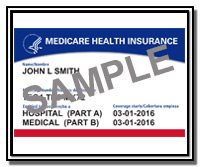
Starting in April 2018, Medicare will mail new Medicare cards to help protect you and your clients from identity theft. Fraudsters are always looking for ways to get your Social Security number. The Centers for Medicare and Medicaid Services is removing Social Security numbers from all Medicare cards to make them safer.
New cards will have a new Medicare number that's unique to its owner. The new card will help protect their identity and keep their personal information more secure. Your Medicare coverage and benefits will stay the same.
Medicare will automatically mail a new card at no cost to the address you and your clients have on file with Social Security. If you need to update your official mailing address, you can do that with your online my Social Security account at www.socialsecurity.gov/myaccount.
For more information about the new Medicare card, visit go.medicare.gov/newcard. You can also visit www.Medicare.gov/fraud for tips to prevent Medicare fraud.
December 2017
Social Security Honors Veterans and Recognizes National Pearl Harbor Remembrance Day

Thursday, December 7 was National Pearl Harbor Remembrance Day. Each year we commemorate the attack on Pearl Harbor and honor the men and women who fought and lost their lives during the historic battle.
Every day, Social Security honors our heroes who proudly serve our country. Social Security is committed to helping our veterans. One of our priorities is to constantly improve the quality of service we provide to them and their families. Acting Commissioner Nancy A. Berryhill said, "We honor and thank the brave men and women who served in our nation's armed forces." Let us always remember their courage and sacrifice.
If you or your clients know a veteran or active duty member of the military that needs help with benefits, please direct them to our veterans website at www.socialsecurity.gov/people/veterans.
Is it Medicare or Medicaid? We Can Explain

Many of your clients might have a difficult time understanding the difference between Medicare and Medicaid. We are here to clear up any confusion.
Medicare is the earned-benefit program for Americans aged 65 or older, or disabled. Workers pay into Medicare throughout their working years. The Centers for Medicare & Medicaid Services is the agency in charge of both Medicare and Medicaid, but you sign up for Medicare A (Hospital) and Medicare B (Medical) through Social Security.
You can apply for Medicare online from the convenience of your home at the link on our website: www.socialsecurity.gov/benefits/medicare/.
Each state runs its own Medicaid program under guidance from the Centers for Medicare & Medicaid Services. Medicaid offers care for the most vulnerable among us. While it does not require paying taxes while working, it does have guidelines about how much income and resources you can have to qualify. Medicaid provides coverage for older people, people with disabilities, and some families with children. Each state has its own eligibility rules and decides which services to cover. The names of the Medicaid program may vary from state to state. You can read about each state's Medicaid program at www.medicaid.gov/medicaid/by-state/by-state.html.
You can find each state's Medicaid contact information at www.medicaid.gov/about-us/contact-us/contact-state-page.html.
Medicare and Medicaid are two of the major insurance programs that provide healthcare to the American public. Understanding each program, as well as how the two programs differ, can help you and those you care about find the right healthcare program.
Our Gift to Children is Security

During the holiday season, most of us, regardless of religion or beliefs, focus on the children we love. Caring for children is one of the best ways to safeguard the future. And we at Social Security know a thing or two about helping children.
Children with disabilities are among our most vulnerable citizens. Social Security is dedicated to helping those with qualifying disabilities and their families through the Supplemental Security Income (SSI) program. To qualify for SSI:
- The child must have a physical or mental condition, or a combination of conditions, resulting in "marked and severe functional limitations." This means that the condition(s) must severely limit your child's activities;
- The child's condition(s) must be severe, last for at least 12 months, or be expected to result in death; and
- The child must not be working and earning more than the Substantial Gainful Activity limit ($1,180 a month in 2018).
If the child's condition(s) does not result in "marked and severe limitations," or does not result in those limitations lasting for at least 12 months, the child will not qualify for SSI.
Family resources are also considered. If the parents of the child or children have more resources than are allowed, then the child or children will not qualify for SSI. You can read more about children's benefits at www.socialsecurity.gov/pubs/EN-05-10026.pdf. Visit www.socialsecurity.gov/people/kids to learn more about all we do to care for children.
Social Security Benefits to Increase in 2018

When we announce the annual cost-of-living adjustment (COLA), there's usually an increase in the Social Security and Supplemental Security Income (SSI) benefit amount people receive each month. By law, federal benefit rates increase when the cost of living rises, as measured by the Department of Labor's Consumer Price Index (CPI-W).
The CPI-W rises when prices increase, making your cost of living go up. This means that prices for goods and services are, on average, a little more expensive. The COLA helps to offset these costs. As a result, monthly Social Security and SSI benefits for more than 66 million Americans will increase 2.0 percent in 2018.
Other changes that will happen in January 2018 are based on the increase in the national average wage index. For example, the maximum amount of earnings subject to Social Security payroll tax will increase to $128,400. The earnings limit for workers younger than "full" retirement age will increase to $17,040, and the limit for people turning 66 in 2018 will increase to $45,360.
For information about the 2018 COLA, visit www.socialsecurity.gov/cola.
Social Security Holiday Field Office Closings

Social Security would like to wish you happy holidays and season's greetings from our family to yours! The spirit of giving is at the heart of what we do — supporting those in need all year long. Should you need to do business with us during the holiday season, we want you to know that we will be closed on New Year's Day, January 1.
For a list of our secure and convenient online services, please visit www.socialsecurity.gov/onlineservices.
November 2017
Social Security Offers Special Services to Disaster Victims

Social Security understands how devastating and disorienting things can be when disaster strikes. That's why we offer expedited handling of Social Security services for disaster victims. When you and your clients contact us under these circumstances, please let us know that you are a disaster victim.
Social Security will follow special Disaster Procedures in handling your Social Security service needs. You and your clients can find more information on our Frequently Asked Questions page at faq.ssa.gov.
Supporting Veterans and Their Families

The men and women who served our country in the military can count on Social Security to be there for them throughout their lives. Let your clients know that active duty military members earn credits toward Social Security retirement benefits. Wounded Warriors can receive expedited handling of their claims for disability benefits. We also provide survivor benefits for young children and spouses of veterans who have died.
Journey to Success: Employment Tools for Veterans with Disabilities, is a five-part online guide that helps certain disabled veterans return to fulfilling employment in the American workforce. The guide highlights resources, such as career counseling, job training, employment services, and more. You can read more about it at www.socialsecurity.gov/people/veterans.
Social Security Celebrates American Indian and Alaska Native Heritage Month

Every November, we take the time to celebrate and appreciate the rich history, traditions, and diverse cultures of American Indians and Alaska Natives (AIAN) across the nation.
This year's theme for AIAN Heritage Month is "Respecting Tradition in Modern Times – Bridging Our Native & Professional Cultures." The theme reflects on connecting traditional Native American culture and modern America.
AIAN Heritage Month began as American Indian Day in May 1916 in New York. Red Fox James, a member of the Blackfeet Nation, rode horseback from state to state to get endorsements from 24 state governments to have a day to honor American Indians. In 1986 Congress passed Public Law 99-471, which authorized and requested the President proclaim the week of November 23-30, 1986 as "American Indian Week." In 1990, President George H.W. Bush signed a joint congressional resolution designating November as National American Indian Heritage Month.
The Social Security Administration is committed to enhancing the agency's relationships with tribal communities. You and your clients can learn more about how we serve American Indians and Alaska Natives at www.socialsecurity.gov/people/aian/.
Social Security Holiday Field Office Closings

Social Security would like to wish you happy holidays and season's greetings from our family to yours! The spirit of giving is at the heart of what we do — supporting those in need all year long. Should you need to do business with us during the holiday season, we want you to know that will be closed on Christmas Day, December 25, and New Year's Day, January 1.
For a list of our secure and convenient online services, please visit www.socialsecurity.gov/onlineservices.
October 2017
People Receiving Disability Benefits Can Now Report Wages Online

Social Security has expanded its online services to allow people who receive Social Security Disability Insurance (SSDI) benefits and their representative payees to report wages securely online. This service is available through our existing my Social Security portal.
Now, it's faster and easier for SSDI beneficiaries and their representative payees to report wages; they can avoid visiting a field office to report their wages in person, and they can print a receipt of their earnings.
This service will be available for Supplemental Security Income (SSI) recipients in the future. SSI recipients should continue to report wages through SSI Mobile Wage Reporting, SSI Telephone Wage Reporting, or by visiting a local field office.
You and your clients can visit www.socialsecurity.gov today to learn more about this new online service.
Social Security Benefits to Increase in 2018

When we announce the annual cost-of-living adjustment (COLA), there's usually an increase in the Social Security and Supplemental Security Income (SSI) benefit amount people receive each month. By law, federal benefit rates increase when the cost of living rises, as measured by the Department of Labor's Consumer Price Index (CPI-W).
The CPI-W rises when prices increase, making your cost of living go up. This means that prices for goods and services are, on average, a little more expensive. The COLA helps to offset these costs. As a result, more than 66 million Americans will see a 2.0 percent increase in their Social Security and SSI benefits in 2018.
Other changes that will happen in January 2018 are based on the increase in the national average wage index. For example, the maximum amount of earnings subject to Social Security payroll tax will increase to $128,700. The earnings limit for workers younger than "full" retirement age will increase to $17,040, and the limit for people turning 66 in 2018 will increase to $45,360.
For information about the 2018 COLA, visit www.socialsecurity.gov/cola.
Social Security's National Disability Forum

On Tuesday, November 7, Social Security will host a National Disability Forum on Compassionate Allowances and Rare Diseases. The purpose of the forum is to acquire input and obtain suggestions of conditions for inclusion to the List of Compassionate Allowances for children and adults from external stakeholders, including patient organizations.
The Forum will be a moderated expert session discussing challenges for patients and their families, and the importance of the Compassionate Allowances Initiative for those living with debilitating and rare diseases. Experts in the field of rare diseases will share their research and suggestions for Compassionate Allowances conditions. Patient organizations will share extensive information on conditions and recommend conditions for inclusion to the List of Compassionate Allowances.
You and your clients can learn more about the National Disability Forum and our Disability Programs at www.socialsecurity.gov/thirdparty/whatsnew.html.
Enumeration Beyond Entry

Social Security is collaborating with the Department of Homeland Security (DHS) to provide a new service to our customers. As of October 2, 2017, there's an automated Social Security number (SSN) application process for noncitizens residing in the U.S. applying for employment authorization.
Enumeration Beyond Entry (EBE) eliminates the need for many noncitizens to visit a field office or card center to apply for a SSN card. Now, the DHS's U.S. Citizenship and Immigration Services (USCIS) has enumeration-specific questions on their application for employment authorization (Form I-765). Every day, the USCIS electronically sends Social Security the enumeration-specific information from approved applications that requested an original or replacement SSN card.
Social Security is continuously expanding its services to put your clients in control and secure today and tomorrow.
September 2017
Three New Conditions Added to Social Security's Compassionate Allowances Program

Social Security has added three new conditions to the Compassionate Allowances Program. These are impairments that clearly meet our standard for disability under the law. When a Social Security or Supplemental Security Income claim involves a Compassionate Allowances condition, we can make a decision quickly and minimize the time required to begin paying benefits.
The new conditions include:
- CACH — Vanishing White Matter Disease-Infantile and Childhood Onset Forms
- Congenital Myotonic Dystrophy
- Kleefstra Syndrome
Please see our recent press release for more details about Compassionate Allowances and the newly added conditions. You can find it at www.socialsecurity.gov/news/press/releases.
Online Tools You Can Use: B.E.S.T.

B.E.S.T. is the Benefit Eligibility Screening Tool, available at ssabest.benefits.gov. It can help someone find out if they might be eligible for retirement, disability, survivors, Supplemental Security Income, or Medicare benefits. Although B.E.S.T. asks a series of questions to determine eligibility, they are not personal in nature and the answers are not stored.
On average, it takes only about 10 minutes to complete the B.E.S.T. questionnaire. First, it guides the person through the questions needed to find out if they could qualify for benefits.
The Results section appears automatically after the person completes some basic questions. B.E.S.T. lists each program for which they might qualify. By clicking on the Read More tab, they will find a description of the benefit program, its requirements, and what the Next Steps should be.
If you or your clients are eligible for benefits, you or they must file an application for benefits with Social Security, because B.E.S.T. is not an application. The best way to do this is by visiting www.socialsecurity.gov.
Facebook Live Event with Social Security's Chief Actuary

Back by popular demand, Social Security's Chief Actuary, Steven Goss, returned to Facebook Live for another conversation on the future of Social Security. Mr. Goss highlighted key points in the latest Trustees Report, explained the operations of the trust funds, provided insight on the future of Social Security, and took viewers' questions LIVE.
You and your clients can view a video of it on YouTube at http://ow.ly/8Wfq30fpnxe.
You can also follow Social Security on Facebook, where we post news and program information at www.facebook.com/socialsecurity.
Protect Your Clients Against Phishing and Fraud

Verifying and protecting the identities of you and your clients is of great importance to us at Social Security. We dedicated an entire section of our website to explaining how we process information online and verify Social Security numbers. We include helpful tips you and your clients should be aware of on avoiding identity theft schemes and ways to make your online presence more secure.
www.socialsecurity.gov/myaccount/verifyandprotectid.html
Checking your personal my Social Security account is also a great way to make sure no one is using your Social Security number fraudulently. You can open or log into your free, secure account at www.socialsecurity.gov/myaccount.
Our mission is to provide you and your clients with enhanced service. Part of that commitment is making sure people know who to trust and how to exercise caution when it comes to personal information and protecting your identity.
August 2017
New States Can Replace Social Security Cards Online at my Social Security

Social Security continues to improve my Social Security with features that make doing business with us easier and more secure. Illinois, Maine, Massachusetts, and Virginia are the most recent states to benefit from Social Security's efforts to make more services available online. Residents of these states join the District of Columbia and 20 other states in being able to request a replacement Social Security card online using my Social Security. And we continue to add more states.
It's an easy, convenient, and secure way to request a replacement card online.
Securing today and tomorrow can start now. Putting you in control of your future is a priority for us. Visit my Social Security at www.socialsecurity.gov/myaccount to learn more.
Treasury Phasing Out myRA Program
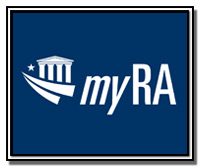
The U.S. Department of the Treasury announced that it will begin winding down the myRA program.
Participants in the myRA program are being notified of the upcoming changes, including information on moving their myRA savings to another Roth IRA. Participants are encouraged to visit www.myra.gov for additional information or to call myRA customer support with any questions.
Social Security Has You Covered

Social Security's disability program provides medical and financial support to disabled individuals and their families in a time of need. The Social Security Act uses a strict definition of disability. We pay benefits to people with a severe medical condition that prevents them from performing substantial work and that is expected to last at least one year or result in death. Social Security does not pay benefits for partial disability or short-term disability.
From Wounded Warriors to chronically ill children, millions of Americans live with disabilities. When disability strikes, Social Security is there providing financial support to people when they need it most. You and your clients can learn more about our disability programs at www.socialsecurity.gov/disability/.
Access my Social Security on the Go!

It's undeniable that smartphones have changed the world. People have GPS-based maps in the palms of their hands, and they can video chat with strangers on the other side of the planet. About one third of our online traffic to SocialSecurity.gov comes from people using smartphones, and Social Security has made it easier for your clients to do business with us. Your clients can now access their personal my Social Security accounts seamlessly from their mobile devices.
Whether your clients receive Social Security benefits now or not, they can use their personal my Social Security account to access their earnings records and view future benefit estimates, or manage their benefits, if they receive them.
my Social Security is a safe and secure portal to access their personal retirement information. And now, the portal automatically adjusts to the size of the screen and device being used – such as a computer, tablet, and now a smartphone.
Social Security strives to provide customers with the latest technological advancements and my Social Security is one of our most powerful—and now most convenient—tools. Learn more at www.socialsecurity.gov/myaccount.
5 Informative Frequently Answered Questions at Social Security
Social Security's Frequently Asked Questions (FAQ) webpage is one of our most popular and helpful resources. Your clients probably have questions all the time about our programs. Even experts in retirement and disability benefits find this collection of facts helpful. Currently, our top five FAQs are:
- How do I apply for a new or replacement Social Security number card?
- How do I change or correct my name on my Social Security number card?
- What happens if I work and get Social Security retirement benefits?
- How long will it take to get a Social Security card?
- How can I get a benefit verification letter?
Check out these popular questions and their answers or browse our FAQs by topic to conveniently find the answers to questions about what interests you. Visit faq.ssa.gov today.
July 2017
Inspector General Warns About New Phone Scams

Social Security's Office of the Inspector General is warning citizens to stay vigilant and protect themselves from potential phone scams seeking their personal information and resources. Gale Stallworth Stone, the acting inspector general of Social Security, recently issued two scam alerts.
Citizens across the country are receiving calls from an individual posing as a Social Security employee. The caller tells the victim they are due a 1.7 percent cost-of-living adjustment (COLA) increase of their Social Security benefits. The impersonator then asks the victim to verify their personal information to receive the increase. Reports show the calls have been coming from a phone number with a 323 area code. This call is fraudulent.
Another scheme allegedly targets former clients of Kentucky disability attorney Eric C. Conn. According to reports, the scammers claim to be from Social Security and offer people $9,000 from a "Conn Client Compensation Fund" if they send $200 to the "Federal Reserve Bank of New York." This compensation fund does not exist. The number associated with these calls is 202-681-5115.
We want to stress that Social Security staff are not making these calls. If you or your clients receive a similarly suspicious call from someone claiming to represent Social Security or its Office of the Inspector General, please report it by calling 1-800-269-0271 or by visiting https://oig.ssa.gov/report.
The Office of the Inspector General offers three tips to protect yourself and others from fraudsters:
- Understand the threats. Be wary of scammers who may impersonate government officials or seek advance payment for services.
- Exercise caution. In general, no government agency or reputable company will solicit your personal information over the phone or by email, or request an advance fee.
- Secure your information. Store your Social Security number in a safe location — don't carry it with you. Shred documents that include your personal information.
You and your clients can learn more at https://oig.ssa.gov/newsroom/scam-awareness.
Social Security 2017 Trustees Report

On July 13, 2017, the Social Security Board of Trustees released its annual report on the current and projected financial status of the Old-Age and Survivors Insurance (OASI) and Disability Insurance (DI) trust funds.
The combined asset reserves of the OASDI trust funds are projected to become depleted in 2034, the same as projected last year, with 77 percent of benefits payable at that time.
In the 2017 Report to Congress, the trustees also announced:
- The combined trust fund reserves are still growing and will continue to do so through 2021. Beginning in 2022, the total annual cost of the program is projected to exceed income.
- The DI trust fund will become depleted in 2028, extended from last year's estimate of 2023, with 93 percent of benefits still payable.
- The projected actuarial deficit over the 75-year long-range period is 2.83 percent of taxable payroll – 0.17 percentage point larger than in last year's report.
sThe longevity of our programs relies on the accurate, up-to-date data provided in these yearly reports. You can view the full 2017 Trustees Report at www.socialsecurity.gov/OACT/TR/2017/.
Increased Security = Satisfied Users

As of June 10, 2017, we use a second way—either a cell phone number or e-mail address—to identify my Social Security account holders when they register and sign in to their account. This is in addition to the first layer of security, a username and password. We take the responsibility of protecting what's important to you and your clients seriously, and this added security measure is a vital part of keeping that information more safe and secure.
Since this new enhancement went into effect, over 382,000 new users have created a my Social Security account and registered their cell phone number or e-mail address. Out of the more than 30 million accounts created since May 2012, almost 2.9 million users have enhanced their security. Based on our online survey, customers agree that it's easy to sign in to their account, and don't have concerns about their account security.
We also upgraded the look and feel of my Social Security. Now, the portal automatically adjusts to the size of the screen and device being used – such as a tablet, smart phone, or computer. No matter what device you choose, you have full, easy-to-use access to your personal my Social Security.
More Americans Can Request Replacement Social Security Cards Online

For millions of Americans, it's easier than ever to request a replacement Social Security card. We recently added Arkansas, Delaware, and Indiana to the growing list of states where adults with proper state identification can apply for a replacement Social Security card through their online my Social Security account.
To participate, you must be a U.S. citizen age 18 or older, have a U.S. mailing address, and not be requesting a name change or other change to your card. You must have a current and valid driver's license or state identification from the District of Columbia or one of the 20 states participating thus far.
To see the list of participating states and to set up or access your own my Social Security account, please visit www.socialsecurity.gov/myaccount.
Offering More Assistance to Those Who Served

The men and women who served our country in the military can count on Social Security to be there for them throughout life's journey.
Active-duty military members earn credits toward Social Security retirement benefits. Wounded Warriors can receive expedited handling of their claims to receive disability benefits. We also provide survivor benefits for the young children and spouses of veterans who die.
You can learn more about how Social Security helps our veterans and their families at www.socialsecurity.gov/people/veterans.
Now, we offer a new online toolkit to help certain disabled veterans in their efforts to return to gainful employment in the American workforce. Our new Journey to Success: Employment Tools for Veterans with Disabilities guidebook highlights resources, such as career counseling, job training, employment services, and more.
You can access all five parts of Journey to Success at www.socialsecurity.gov/people/veterans.
We know some veterans have suffered injuries so severe they cannot return to any form of work. However, for those who are interested in testing their ability to find and maintain gainful employment, these resources can help.
We thank all members of our military and veterans for their service and sacrifice.
To learn more about our programs and benefits, visit www.socialsecurity.gov.
June 2017
Our New Security Enhancement to Protect Your Privacy

On June 10, 2017, Social Security strengthened the way we protect your clients' privacy as my Social Security users. We added a new identification method in addition to the first layer of security, which is a username and password. Adding security measures to safeguard your clients' information — but making them easy to use — is a vital part of keeping your clients safe and secure.
When your client signs in to their personal my Social Security account at www.socialsecurity.gov/myaccount with their username and password, we ask them to add their email address or a text-enabled cell phone number.
Each time your client signs in to their account, they complete two steps:
- Step 1: Enter their username and password.
- Step 2: Enter the security code we send by text message or email, depending on their choice (cell phone provider text message and data rates may apply).
In addition to these security enhancements, we also upgraded the look and feel of my Social Security to create an enhanced customer experience. The my Social Security portal automatically adjusts to the size of the screen and for the kind of device your client is using – such as a tablet, smart phone, or computer. No matter what type of device they choose, your client has full, easy-to-use access to their personal my Social Security account.
SSDI or SSI – What's the Difference?

Social Security administers two different programs that pay disability benefits. What it means to be disabled is the same for both programs — a condition(s) making the person unable to work and that is expected to last at least a year or to end in death. But each has a different set of rules and serves a different purpose. Understanding these differences will help your eligible clients apply for and begin receiving critical benefits more quickly.
Social Security Disability Insurance, or SSDI, requires that a person have earnings that are taxed by Social Security to become eligible for benefits. The minimum required varies from as little as one and one-half years for a younger worker and up to 10 years for an older worker. Social Security determines the monthly benefit payable based on the averaged earnings of the worker. Benefits are paid from the Social Security Disability Trust Fund. For most workers, family benefits for eligible spouses and children are available. After 24 months of receiving benefits, the disabled individual becomes entitled to Medicare. For more about SSDI, refer to our pamphlet called Disability Benefits at www.socialsecurity.gov/pubs/EN-05-10029.pdf.
Supplemental Security Income, or SSI, payments are paid from the general tax fund. SSI legislation determines the SSI payment amount, which increases when a cost of living adjustment occurs. Payment goes to the disabled individual, which can include children and both members of a disabled couple, if they qualify. Generally, receiving SSI gives the disabled person access to Medicaid (a state health care program). There is no work history requirement to get SSI, but it does have requirements about income and resources. Refer to You May Be Able To Get Supplemental Security Income (SSI) at www.socialsecurity.gov/pubs/EN-05-11069.pdf to learn more about getting SSI.
Social Security is here to help you and your clients through life's journey. Planning for unexpected situations like disability is smart financial planning.
Social Security Supports National Cancer Survivors Day
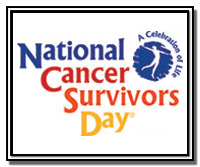
In 2017, more than a million people will be diagnosed with cancer around the world. This alarming statistic affects people and families from all walks of life. Chances are, you know someone who has been affected by this terrible disease. On June 4, we observed National Cancer Survivors Day in the United States. In support of this day, Social Security encourages getting checkups to provide early detection, raise awareness through education, and recognize the survivors who have gone through this battle or are still living with the disease.
Social Security stands strong in our support of the fight against cancer. We offer services to patients dealing with this disease through our disability insurance program and our Compassionate Allowances program. Compassionate Allowances result from medical conditions so severe they obviously meet Social Security's disability standards, allowing us to process the cases quickly with minimal medical information. Many cancers are part of our Compassionate Allowances list.
There's no special application or form you need to submit for a Compassionate Allowance. Simply apply for disability benefits online, in-person, or over the phone. Once we identify you as having a Compassionate Allowance condition, we'll expedite your disability application. You and your clients can learn more at www.socialsecurity.gov/compassionateallowances.
Summer is Upon Us, Save Your Days for Fun

With summer beginning, you want to spend much of your free time with family and friends. Using my Social Security can free up hours to do that. It's easy, secure, and convenient to access when you go online.
Signing up for a my Social Security account will give you a secure and efficient way to interact with us and accomplish various tasks, including estimating your future benefits or managing your current benefits. You can sign up for your own account at www.socialsecurity.gov/myaccount and join the more than 30 million Americans who already conduct business with us online using my Social Security.
Social Security is… Social!

We once considered Twitter, Facebook, and other social media as casual pastimes. Now they are a vital part of the way your government communicates with you. We keep you and your clients up-to-date with policy changes and benefits information, and inform people about newly developed tools that make conducting business with us easier and more secure.
Connect with Social Security on
- Twitter (twitter.com/socialsecurity);
- Facebook (www.facebook.com/socialsecurity); and
- our social media hub (www.socialsecurity.gov/socialmedia)
And you can always access www.socialsecurity.gov for detailed program and benefit information.
May 2017
Social Security Launches New Educators Tool Kit

Social Security just launched a new website and tool kit for educators. This is a rich resource for teachers and advocates. It's full of information and resources to educate and engage students on Social Security, and contains:
- Two lesson plans with objectives;
- Infographics and handouts for each lesson plan;
- Links to Social Security webpages;
- Talking points; and
- Quiz questions and answers.
It is important for students to understand why Social Security was created and why it is important in their lives today and in the future. This knowledge and understanding will provide students a strong base on which to build their financial future.
You and your clients can access the webpage and toolkit at www.socialsecurity.gov/thirdparty/educators.html.
Young workers can also learn more about the importance of Social Security at www.socialsecurity.gov/people/students.
Small Businesses are a Cornerstone of the Economy

National Small Business Week is in May, but Social Security is always here to offer support. Our Business Services Online (BSO) suite of services offers the tools needed to perform several common tasks from the comfort of home or the office.
After you or your clients register with BSO, you can access our online business services and functions. For example, you can complete, update, and submit your business taxpayer information forms and print W-2 forms for your employees. BSO lets people file wage reports and view error notices for any wage files or wage reports submitted by you or your company. You and your clients can also verify existing and prospective employees' names and Social Security numbers.
BSO is especially valuable for small business. Learn more about our online business services by visiting www.socialsecurity.gov/bso.
Homeless Veterans Deserve Our Help

In May, Social Security participated in the National Coalition for Homeless Veterans (NCHV) National Conference. We hosted an information table in the exhibit hall where we shared information about Social Security programs, our online services, and our policies and initiatives affecting disabled veterans.
We also conducted a workshop as part of NCHV's Employment and Income track focusing on our benefits programs for veterans and a round robin session about our "Ticket to Work" program. Participants chose a table or topic and the expert gave a short overview and then engaged in discussion and Q&A. After about 20 minutes, participants chose a new table and the process began again. These sessions were designed to give participants direct access to experts.
You and your clients can access our resources for homeless people at www.socialsecurity.gov/homelessness.
There is also a national call center for homeless veterans which can be accessed at www.va.gov/homeless/nationalcallcenter.asp.
Securing Today and Tomorrow for Asian Americans and Pacific Islanders

During the month of May, we recognize Asian American and Pacific Islander (AAPI) Heritage Month in the United States. It is a time to celebrate this strong, diverse, and culturally rich community. Asian Americans and Pacific Islanders are one of the fastest-growing ethnic groups in America. The AAPI community also has one of the fastest-growing populations of older adults. Of the nearly 38 million Social Security beneficiaries aged 65 and older, roughly 1.4 million seniors are from the AAPI community, and this number is expected to increase in the coming years.
Our website has many resources for the AAPI community. There you will find out why Social Security is especially important to the AAPI community. Knowledge is the key to preparing for tomorrow. Visit our website and learn about the various ways in which Social Security helps the AAPI community secure today and tomorrow. You and your clients can view our website for Asian Americans and Pacific Islanders at www.socialsecurity.gov/people/aapi.
From Alessia to Zayn, Popular Baby Names on the Rise!

Every year, we're the authority on the most popular baby names from the prior year based on requests for Social Security numbers for newborns. It's fun to see how America's trends and cultures have diversified and our choices have broadened. You can visit our baby names page to see the top names from 2016 and see where your or your child's name ranks at www.socialsecurity.gov/babynames.
Our list shows how pop culture affects naming trends year to year. In 2016, the biggest jump in popularity in the top 1,000 were Kehlani and Kylo. Kehlani rose 2,487 spots on the girls' side to number 872, from number 3,359 in 2015. We can attribute this to Kehlani Parrish, a 2016 Grammy nominee also known for collaborating with Zayn Malik, the former One Direction star and current solo artist. The name Zayn also made the boys fastest riser list. Kylo soared 2,368 spots on the boys' list, from number 3,269 in 2015 to number 901. Kylo Ren was a character in the 2015 film Star Wars: The Force Awakens.
No matter the inspiration for your child's name, you can rest easy knowing we're with you and your child starting from when you choose their special name. Get to know us and the resources we offer to families with children at www.socialsecurity.gov.
April 2017
Thank You for a Successful National Social Security Month

In April, we celebrated National Social Security Month and want to thank you for encouraging your clients to start planning for their future by taking Social Security's 5 Steps Toward Your Financial Security.
In 1935, Social Security was created to promote economic security for the nation's people. Since then, we've integrated programs and services to support millions of people. Chances are, you either receive Social Security benefits or know someone who does. We provide financial protection for nearly 61 million individuals and families, including veterans, the chronically ill, widows and widowers, the children of deceased workers, retirees, and people with disabilities.
In fact, according to the Economic Policy Institute, Social Security is the most effective anti-poverty program in the United States. April was National Social Security Month, but it's always important for you to be as informed as possible, all year long. Celebrate by getting to know your Social Security by taking our 5 Steps Toward Your Financial Security at www.socialsecurity.gov/agency/5-steps-toward-your-financial-security. This is a simple and easy way to start planning for your future. Social Security is with you throughout life's journey, helping you secure today and tomorrow.
Supplemental Security Income Applications Now Online

We're always looking for ways to provide your clients with innovative, quality services, and with our newest online enhancement, we're proud to be doing just that. Now, if your clients meet certain requirements, they can file Supplemental Security Income (SSI) and disability applications at www.socialsecurity.gov/benefits/ssi/ at the same time.
Your clients can apply online if they:
- Are between the ages of 18 and 65;
- Have never been married;
- Aren't blind;
- Are a U.S. citizen residing in one of the 50 states, District of Columbia, or the Northern Mariana Islands; and
- Haven't applied for or received SSI benefits in the past.
If they started another application online before April 1, but haven't submitted it, they can take advantage of this new service option and submit a disability and SSI application together.
With this update, we expanded service to customers with limited English proficiency by allowing them to request an appointment online for an in-person claim or teleclaim in the language of their choice. As we provide this new service in many languages, including Spanish, we are discontinuing the separate Spanish language iClaim option. Applicants who started and saved an iClaim in Spanish can still enter the portal and complete it for up to six months after the claim start date.
With disability, and now SSI benefit applications online, we're allowing more and more of our customers to access benefits when, where, and how they want.
The Sixth National Disability Forum

Social Security held its sixth National Disability Forum on April 5 at the National Education Association. The theme of the event was "Exploring Potential Changes to the Ticket to Work Regulations."
The Ticket to Work program provides employment support to our beneficiaries with disabilities as they work toward self-sufficiency. This forum allowed stakeholders to discuss their ideas about possible improvements to the program, in person and virtually. The presenters represented many of our stakeholders: employment networks, state vocational rehabilitation agencies, National Disability Rights Network representatives, and Ticket to Work program participants.
Melanie Porter, Senior Advisor, Office of Research, Demonstration, and Employment Support at the Social Security Administration, moderated the discussion.
Speakers included
- Joseph M. Ashley, Rh.D., CRC, Assistant Commissioner, Grants and Special Programs, Virginia Department for Aging and Rehabilitative Services;
- M.J. Willard, Executive Director, National Telecommuting Institute;
- Judy Sanderson, Director of Employment Services, Granite State Independent Living, New Hampshire;
- Cheryl Bates-Harris, Senior Disability Advocacy Specialist, Training & Advocacy Support Center, National Disability Rights Network; and
- Andraéa LaVant, Inclusion Senior Specialist, Girl Scouts Nation's Capital.
You and your clients can learn more about the National Disability Forum at www.socialsecurity.gov/ndf/.
Financial Literacy Day on Capitol Hill

As part of Financial Literacy Month, Social Security participated in Financial Literacy Day on Capitol Hill with a mix of government, not-for-profit, and corporate organizations. The principal purpose of Financial Literacy Day is to introduce Capitol Hill and the public to:
- The strides Social Security has made in the financial literacy effort.
- The most effective financial education programs and resources available now.
- The diversity of organizations and individuals who are working together toward these shared goals.
Social Security participated as an exhibitor and promoted our new Educators webpage at www.socialsecurity.gov/thirdparty/educators.html that includes a Teachers Toolkit, and new Students webpage at www.socialsecurity.gov/people/students/ that includes infographic resources to educate young people on Social Security (What is Social Security? and What the FICA?).
Social Security Teamed Up with Suze Orman for National Social Security Month

Financial planning expert Suze Orman shared her expertise with Social Security as part of National Social Security Month. Suze wrote four guest blog posts on Social Security and retirement planning that we posted in our Social Security Matters blog every Thursday in April. We appreciate Ms. Orman joining our effort pro bono. You and your clients can read the posts at blog.socialsecurity.gov/author/suze-orman.
Social Security hosted a National Social Security Month conference call featuring Suze Orman on April 19. We invited the Financial Literacy and Education Commission (FLEC) federal partner agencies, American Savings Education Council (ASEC), and JumpStart Coalition for Personal Financial Literacy. We also invited non-governmental partners who work on financial literacy issues as well as other close partners.
Social Security Hosts Facebook Live Event

As part of National Social Security Month, Social Security hosted a Facebook Live event highlighting the five steps people can take to secure their financial future. The Facebook Live event was viewed by over 12,200 individuals, generated almost 224,000 impressions on Facebook alone, and there were over 420 comments.
It doesn't have to be April for you to learn the five steps to secure your financial future. These steps include:
- Get to know your Social Security
- Verify your earnings
- Estimate your benefits
- Apply for benefits
- Manage your benefits
You and your clients can learn more about these five valuable steps at www.socialsecurity.gov/agency/5-steps-toward-your-financial-security.
Our New Security Enhancement to Protect Your Privacy

On June 10, 2017, Social Security is adding enhanced security to protect your and your clients' privacy as my Social Security users. This is in addition to the first layer of security, a username and password. Adding security measures to safeguard your clients' information — but making them easy to use — is a vital part of keeping your clients safe and secure.
When your client signs in to their personal my Social Security account at www.socialsecurity.gov/myaccount with their username and password, we will ask them to add their email address or a text-enabled cell phone number.
Then, each time your client signs in to their account, they will complete two steps:
- Step 1: Enter their username and password.
- Step 2: Enter the security code we send by text message or email, depending on their choice (cell phone provider text message and data rates may apply).
In addition to these security enhancements, we'll also upgrade the look and feel of my Social Security to create an enhanced customer experience. The my Social Security portal will automatically adjust to the size of the screen and kind of device your client is using – such as a tablet, smart phone, or computer. No matter what type of device they choose, your client will have full, easy-to-use access to their personal my Social Security account.
March 2017
Joining Forces to Improve the Representative Payee Program

The Social Security Advisory Board held a policy forum on the Social Security Administration's Representative Payee Program on March 27 at the 20 F Street NW Conference Center. This forum included panels on identifying who needs a representative payee, monitoring representative payee performance, and the way forward.
Currently, more than six million payees manage $80 billion in Social Security and Supplemental Security Income benefits for more than 3.5 million adults and 4 million children determined to be incapable of managing their benefits. Projections indicate that the number of people needing assistance will increase dramatically in the coming decades as the population ages. The day's discussion included the process of determining capacity, best practices, collaborative efforts and new approaches from the front lines, necessary oversight, program evaluation, and preparing for the future.
You and your clients can read more about Social Security's Representative Payee Program at www.socialsecurity.gov/payee.
Why Wait? Get Your Social Security Benefit Verification Letter Online

Social Security puts you in control. Over the years, we have invested in technology that lets the public access many of our services online and save a trip to a Social Security office. We want to remind your clients that if they ever have to present proof of income or benefits — or show that they are not receiving benefits — it's easy to get a benefit verification letter online.
Your clients can get a benefit verification letter instantly with a my Social Security account at www.socialsecurity.gov/myaccount. It takes only a few minutes to create an account.
The most common reason for needing a benefit verification letter is for proof of income when applying for a loan or mortgage. However, your clients may also need a benefit verification letter as proof of:
- Income to qualify for assisted housing or other state or local benefits;
- Current Medicare health insurance coverage;
- Retirement status;
- Disability;
- Age; or
- A pending benefits application with Social Security.
Please tell your clients about this time-saving online service and direct them to www.socialsecurity.gov/myaccount.
Secure Your Future During National Social Security Month

In April, we celebrate National Social Security Month and encourage you and your clients to get to know your Social Security by exploring what you can do online at www.socialsecurity.gov. Social Security is collaborating with groups and organizations around the country to host numerous events and activities to raise awareness about our many valuable benefits, services, and programs. Here is what Social Security offers:
- Easy accessibility: Whether you want to estimate the amount of your future Social Security benefits, replace a lost Social Security card, or apply for retirement, disability, or Medicare benefits, www.socialsecurity.gov is your reliable source for information to help you and your loved ones.
- Convenient services: Our convenient and secure online services at www.socialsecurity.gov/onlineservices put you in control.
- Safe interaction: One of our most important responsibilities is protecting your personal information and your financial contributions. We use state-of-the-art systems for this, conduct continuous reviews to help us ensure proper payments, and much more.
We're committed to safeguarding the information and resources entrusted to us. Are you looking for secure access to your Social Security information? Visit www.socialsecurity.gov/myaccount and create your personal my Social Security account.
Exploring Potential Changes to the Ticket to Work Regulations
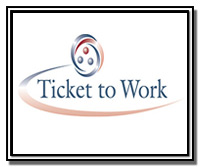
In April, Social Security will hold the sixth National Disability Forum (NDF) on "Exploring Potential Changes to the Ticket to Work Regulations." The Ticket to Work Program provides employment support to our beneficiaries with disabilities as they work toward self-sufficiency. The forum invites stakeholders to suggest improvements to the program, both in person and virtually. Presenters represent many of our stakeholders: employment networks, state vocational rehabilitation agencies, and Ticket to Work Program participants.
The NDF is scheduled for Wednesday, April 5, 2017, from 1:00 p.m. to 3:00 p.m. ET at the National Education Association located at 1201 16 th Street NW, Washington D.C. The forum will also be available via teleconference. You and your clients can view the NDF website at www.socialsecurity.gov/ndf for more details.
The Disability Forum will provide an arena for advocates to share ideas that could support Social Security beneficiary employment goals, increase participation in the Ticket to Work Program, design effective employment models, and foster success with our employment networks.
You and your clients can visit the NDF website at www.socialsecurity.gov/ndf to register and post your comments on IdeaScale.
California, Florida, and Texas added to the Social Security Online Card

Social Security's online application makes getting a replacement for a lost or misplaced Social Security card easy. We're happy to announce that we've added California, Florida, and Texas to the 14 other states and the District of Columbia where you can use this service.
If you have a driver's license or state-issued identification card, you can now request a replacement Social Security card online through our secure my Social Security portal. As long as you're only requesting a replacement card, and no other changes, you can use our free online service from the comfort of your home, office, and even the beach.
The first step is to create a my Social Security account at www.socialsecurity.gov/myaccount.
Visit our website to find out whether you can request your replacement Social Security online, and what the requirements are in your area at www.socialsecurity.gov/ssnumber.
February 2017
Our New Acting Commissioner

On January 23, Nancy A. Berryhill became the acting commissioner of Social Security, with responsibility for overseeing one of our nation's largest and most important social insurance programs, providing retirement, survivors, and disability protection to almost all Americans. With a $12 billion budget and almost 64,000 employees serving in more than 1,500 offices across the country and around the world, plus 16,000 state employees making disability determinations, we issue more than $960 billion in payments to nearly 66 million people each year. Ms. Berryhill leads an agency with a legacy and continuing mission that helps so many people through life's journey.
Ms. Berryhill isn't new to Social Security. She previously served as the deputy commissioner for Operations, our largest organizational component. She gained first-hand experience with many frontline jobs before moving to a number of executive positions in her 40 years with the agency. Several expanded-service delivery options can be traced back directly to her. She has also demonstrated forward thinking by developing successful and innovative initiatives that have earned her many agency and federal awards.
Acting Commissioner Berryhill's work and achievements consistently demonstrate professional excellence, exceptional leadership, integrity, and commitment to public service.
Withholding Federal Income Tax from Your Social Security Benefits

Having to send the IRS a large tax payment can be a considerable burden. You and your clients can voluntarily ask Social Security to withhold federal taxes from monthly benefits at a rate of 7, 10, 15, or 25 percent. You will need to complete and sign IRS Form W-4V, available at https://www.irs.gov/forms-pubs. You can then mail it to your local Social Security office found at www.socialsecurity.gov/locator.
At the beginning of the next calendar year, you and your clients will receive Form SSA-1099, which will show any Voluntary Federal Income Tax withheld. If you wish to change, or even stop the amount withheld, just complete a new form W-4V, sign it, and mail it to your local Social Security office. You can access more tax withholding resources at www.socialsecurity.gov/benefits/retirement/planner/taxwithold.html.
New Website for Tax Preparers

Social Security has a new online resource for tax preparers at www.socialsecurity.gov/thirdparty/atp.html. Your clients can access this resource to get information on income taxes and their Social Security benefits, learn how to get an instant replacement SSA-1099 or SSA-1024S online, as well as getting an IRS Form W-4V. Small business owners can also learn about reporting wages online using our Business Services Online, which is a suite of services available to business owners.
In our effort to put our customers in control of their financial future, Social Security continues to improve our online tools and resources, securing today and tomorrow.
Empower Yourself with America Saves Week
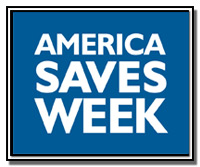
The American Savings Education Council and America Saves coordinate the annual America Saves Week. Started in 2007, the week is an annual opportunity for organizations to promote good savings behavior and a chance for individuals to assess their own saving status.
For years, Social Security has collaborated with America Saves Week to promote our shared mission of helping millions of people save for their future. This year, America Saves Week began on February 27, but people like you and your clients strive to save every day.
It's never too early or too late to start planning for your future. Set a goal, make a plan, and save automatically. Savers with a plan are twice as likely to save successfully. Pledge to save for America Saves Week at www.americasaves.org. Share what you're saving for on Twitter by using the hashtag #ImSavingFor.
Congressional Testimony before House Subcommittee on Social Security and Oversight

On February 7, Social Security's acting deputy commissioner for retirement and disability policy, Marianna LaCanfora, testified before the House Committee on Ways and Means, Subcommittees on Social Security and Oversight. She detailed how Social Security determines whether a beneficiary is incapable of managing his or her benefit payments.
She said, "Early on in Social Security's history, Congress recognized that some beneficiaries were incapable of managing their benefits and amended the Social Security Act to allow us to appoint representative payees for such beneficiaries. Representative payees help our vulnerable beneficiaries by managing their benefit payments for their basic needs."
Ms. LaCanfora also detailed the three types of evidence required to make a capability determination, the process of selecting a representative payee, appeal rights, and Social Security's improvements in our process of determining capability.
You and your clients can read the entire testimony at www.socialsecurity.gov/legislation/congressionaltestimony.html.
Why Social Security is Important to Women
Women have challenging choices to make. Some may spend their entire adulthood in a career or job outside the home. Some may work for a few years, leave the labor force to raise children, and eventually return to work. And some may choose not to work outside the home at all. Whether you work, have worked, or have never worked outside the home, you need to understand how Social Security can help you and your family find financial security.
When most people think of Social Security, they think of retirement benefits — with good reason. We have you covered throughout your lifetime. Knowing you will probably be entitled to a portion of your spouse's retirement benefits if they pass away is an added security. On average, women tend to make less in wages than men. Social Security pays a higher benefit in relation to earnings for people who earn lower wages.
Social Security is with you through life's journey, helping you secure today and tomorrow. Any woman, no matter how young or old, would benefit from visiting our webpage for women at www.socialsecurity.gov/people/women.
January 2017
Celebrating Those Who Provide Care: Social Security's Representative Payee Program

According to the Census Bureau, there are nearly 57 million people living with disabilities in the United States. Thirty percent of American adults help provide care for a sick or disabled family member.
Social Security works closely with caregivers through our Representative Payee Program. A representative payee is someone who receives and oversees the Social Security or Supplemental Security Income (SSI) benefits for an adult or child who cannot manage his or her benefits. You can learn more about our Representative Payee Program at www.socialsecurity.gov/payee.
A representative payee is usually a trusted family member or friend of the beneficiary, but when friends or family are not able to serve as representative payees, Social Security looks for qualified individuals or organizations to represent the beneficiary. You can learn about becoming a representative payee by watching our new series of training videos on the duties of a representative payee at www.socialsecurity.gov/payee/rp_training2.html.
Receiving HUD Benefits? A Trip to Social Security May Not be Necessary

Social Security is constantly evolving to make doing business with us easier. If your client is currently receiving benefits from the U.S. Department of Housing and Urban Development (HUD), and is reapplying for benefits, or is assisting someone with their application, a trip to a Social Security office is probably not necessary — even if verification of Social Security benefits is needed.
Because of a data exchange established between Social Security and HUD, most people do not need to contact Social Security for a benefit verification letter. HUD administrators processing a Recertification Application for Housing Assistance can use their Enterprise Income Verification (EIV) System to verify Social Security and Supplemental Security Income benefits.
Public housing agencies, private owners, and management agents who run HUD rental assistance programs may get registration information about EIV by logging onto the HUD portalor visiting www.hud.gov/offices/hsg/mfh/rhiip/eiv/eivhome.cfm.
If your client is a new applicant for housing assistance, they can provide their HUD administrator with their Social Security award letter, Cost of Living Adjustment (COLA) notice, SSA-1099, or other Social Security benefit document.
Your clients can also get an instant benefit verification letter online with a my Social Security account at www.socialsecurity.gov/myaccount.
LGBT Communities can Count on Social Security

In 2015, the U.S. Supreme Court issued a decision in Obergefell v. Hodges, holding that same-sex couples have a constitutional right to marry in all states and have their marriage recognized by other states. This decision made it possible for more same-sex couples and their families to benefit from our programs.
We now recognize same-sex couples' marriages in all states, and some non-marital legal relationships (such as some civil unions and domestic partnerships), for purposes of determining entitlement to Social Security benefits and Medicare, and eligibility and payment amount for Supplemental Security Income (SSI). We also recognize same-sex marriages and some non-marital legal relationships established in foreign jurisdictions for purposes of determining entitlement to Social Security benefits and Medicare, and SSI.
Social Security is committed to treating all Americans fairly. This commitment extends to Lesbian, Gay, Bisexual, and Transgender people covered by Social Security's many programs. We encourage anyone who believes they may be eligible for benefits to apply now. Learn more at www.socialsecurity.gov/same-sexcouples.
When Should I Start Receiving Social Security benefits?

Deciding when to retire and receive Social Security benefits is a personal decision that will affect you and your family. Taking benefits as soon as you can may reduce the amount you receive each month. Waiting until your full retirement age will greatly increase your monthly benefits. Knowing what you need for a comfortable and secure retirement takes planning, and we are here with information to help you.
"Full retirement" age refers to the age when a person can receive their Social Security benefits without any reduction, even if they are still working part or full time. In other words, you don't actually need to retire from your work to start receiving your full benefits. The choices you make may affect any benefit your spouse or children can receive on your record, too.
You and your clients need to be as informed as possible when making any decision about receiving Social Security benefits. Read our publication When to Start Receiving Retirement Benefits at www.socialsecurity.gov/pubs/EN-05-10147.pdf.
Social Security's mission is to secure your today and tomorrow, and we help by providing you and your clients with the tools and information to make the right retirement decision. You can learn more by visiting our Retirement Planner at www.socialsecurity.gov/benefits/retirement/planner/.
Reminder: You Can Get Instant Replacement Tax Forms Online

You've finally sat down to work on your taxes and you're ready to file today—until you notice that you're missing your SSA-1099! Now what?
We make it easy to get the replacement Social Security tax forms you need. But first, double-check your stack of mail—you may already have the one we mailed to you in January.
An SSA-1099, or Benefit Statement, is a tax form Social Security mails each year in January to people who receive Social Security benefits. It shows the total amount of Social Security benefits received in the previous year so people know how much Social Security income to report to IRS on their tax return.
For noncitizens who live outside of the United States and who received or repaid Social Security benefits last year, we will send form SSA-1042S instead. The forms SSA-1099 and SSA-1042S are not available for people who receive Supplemental Security Income (SSI).
If you or your clients currently live in the United States and need a replacement form SSA-1099 or SSA-1042S, we have a way for them to get an instant replacement, quickly and easily. Encourage your clients to go online and get an instant replacement form with a my Social Security account at www.socialsecurity.gov/myaccount. The online replacement form is available beginning February 1, 2017.
Social Security is with you through life's journey—even during tax season.
Get your replacement Social Security tax forms at www.socialsecurity.gov/myaccount.
When Does Social Security Go Back in the Black
Source: https://www.ssa.gov/news/newsletter/archive.html
0 Response to "When Does Social Security Go Back in the Black"
Enregistrer un commentaire